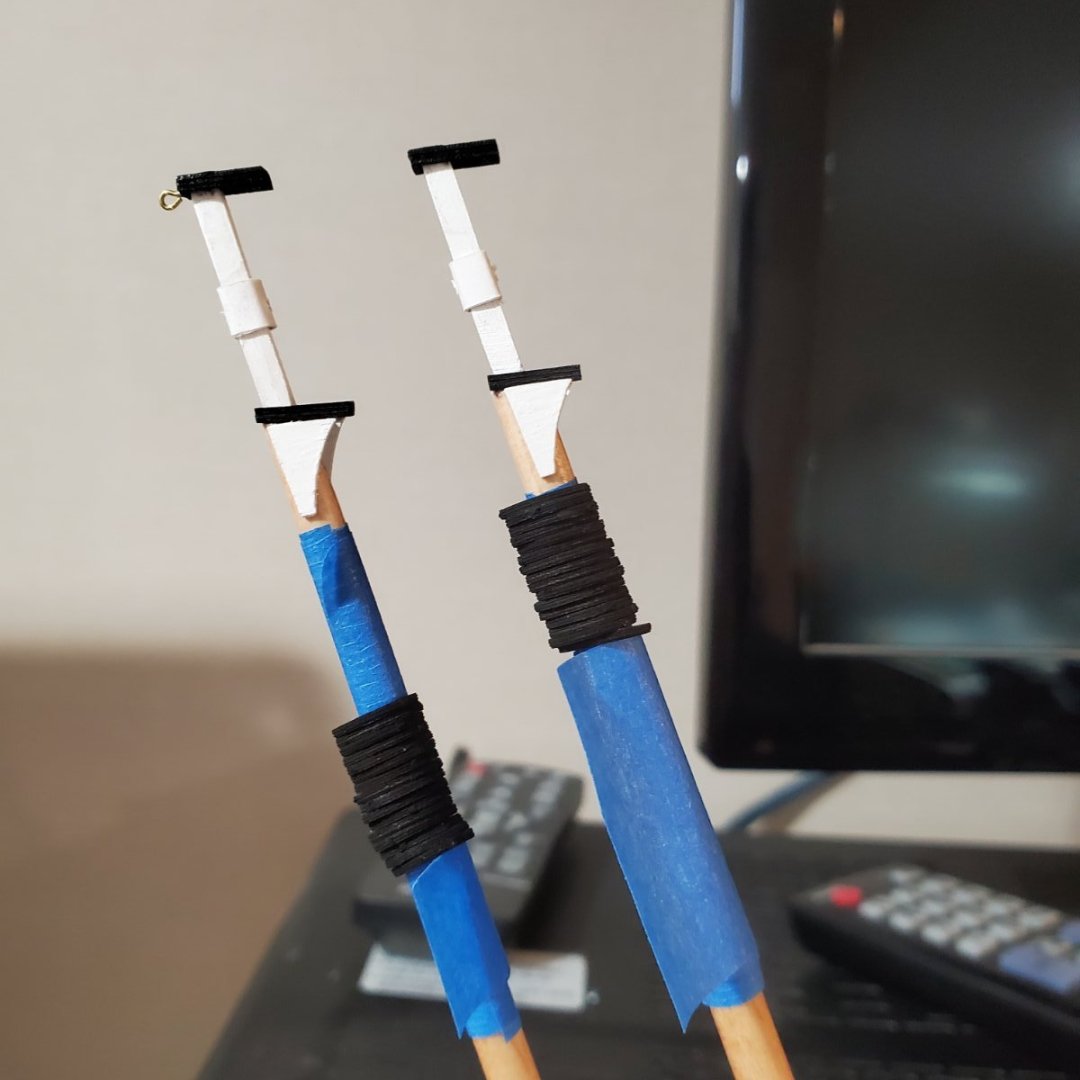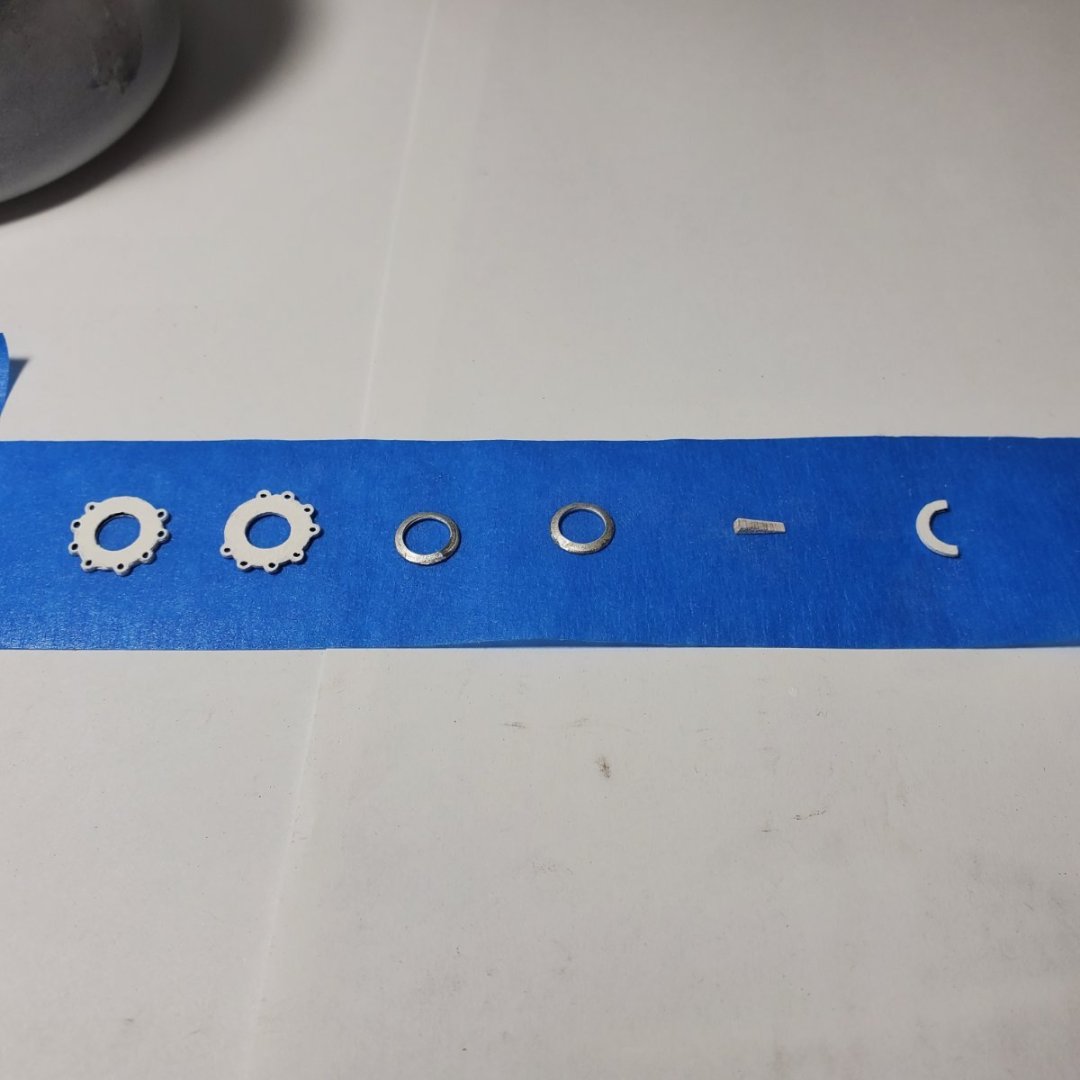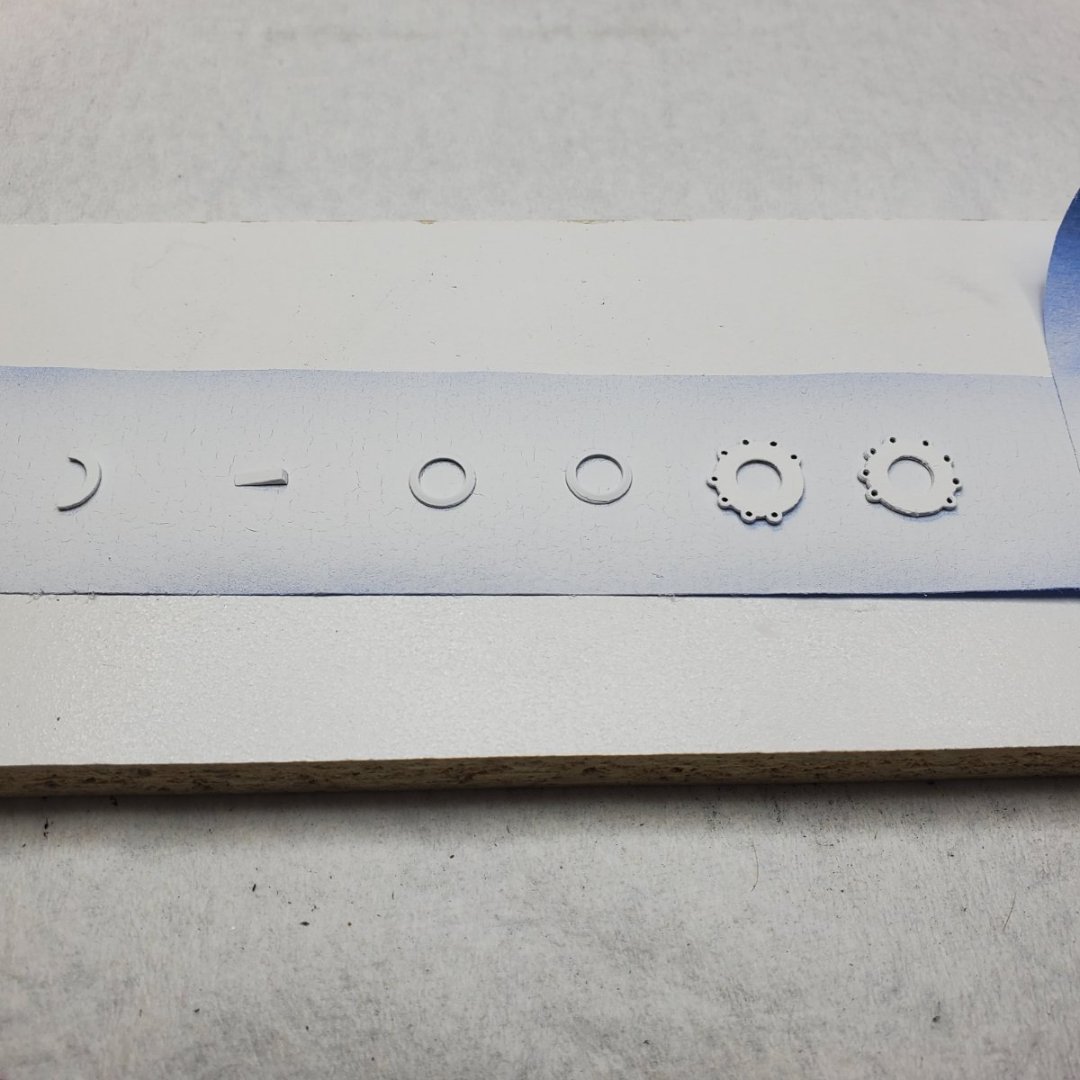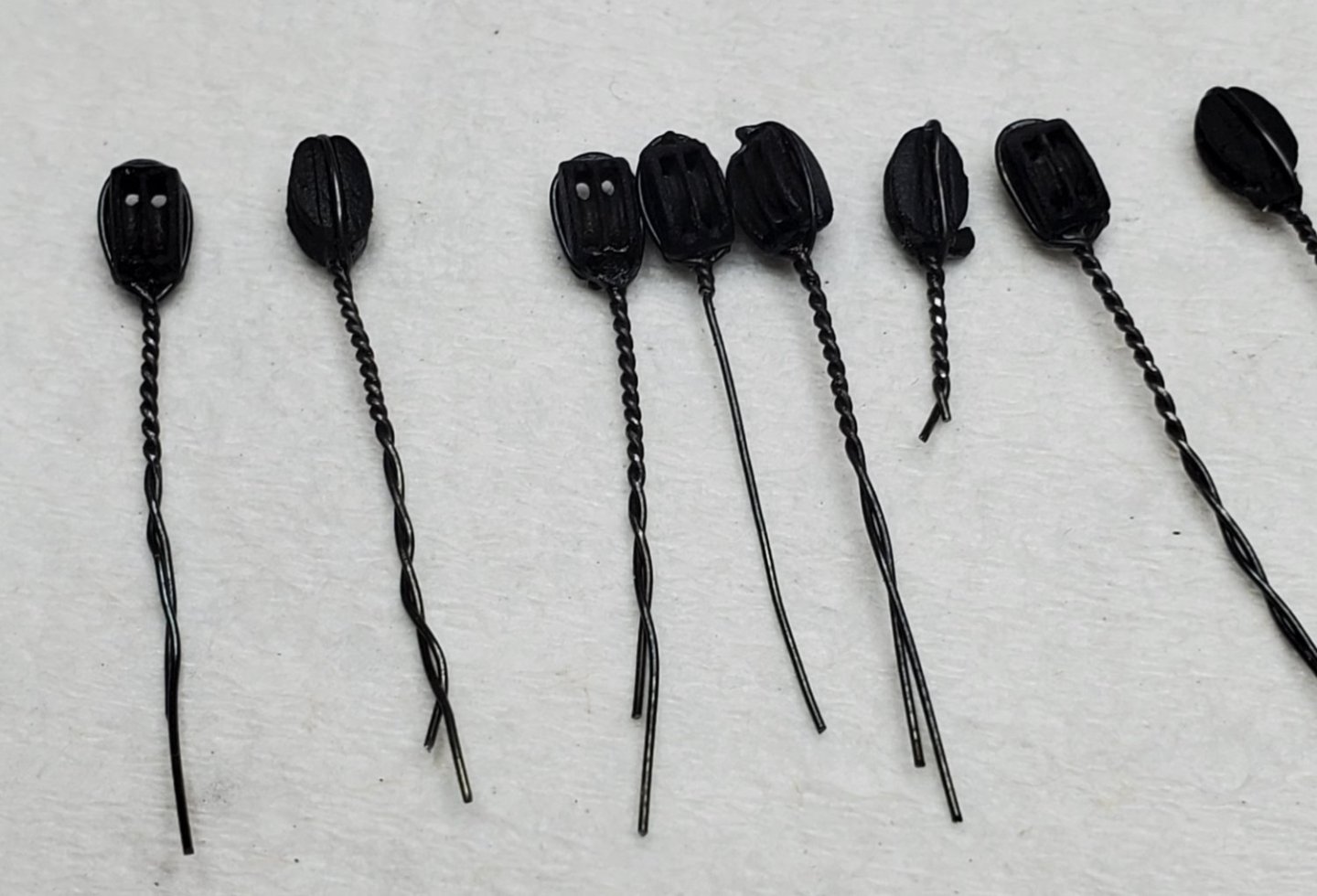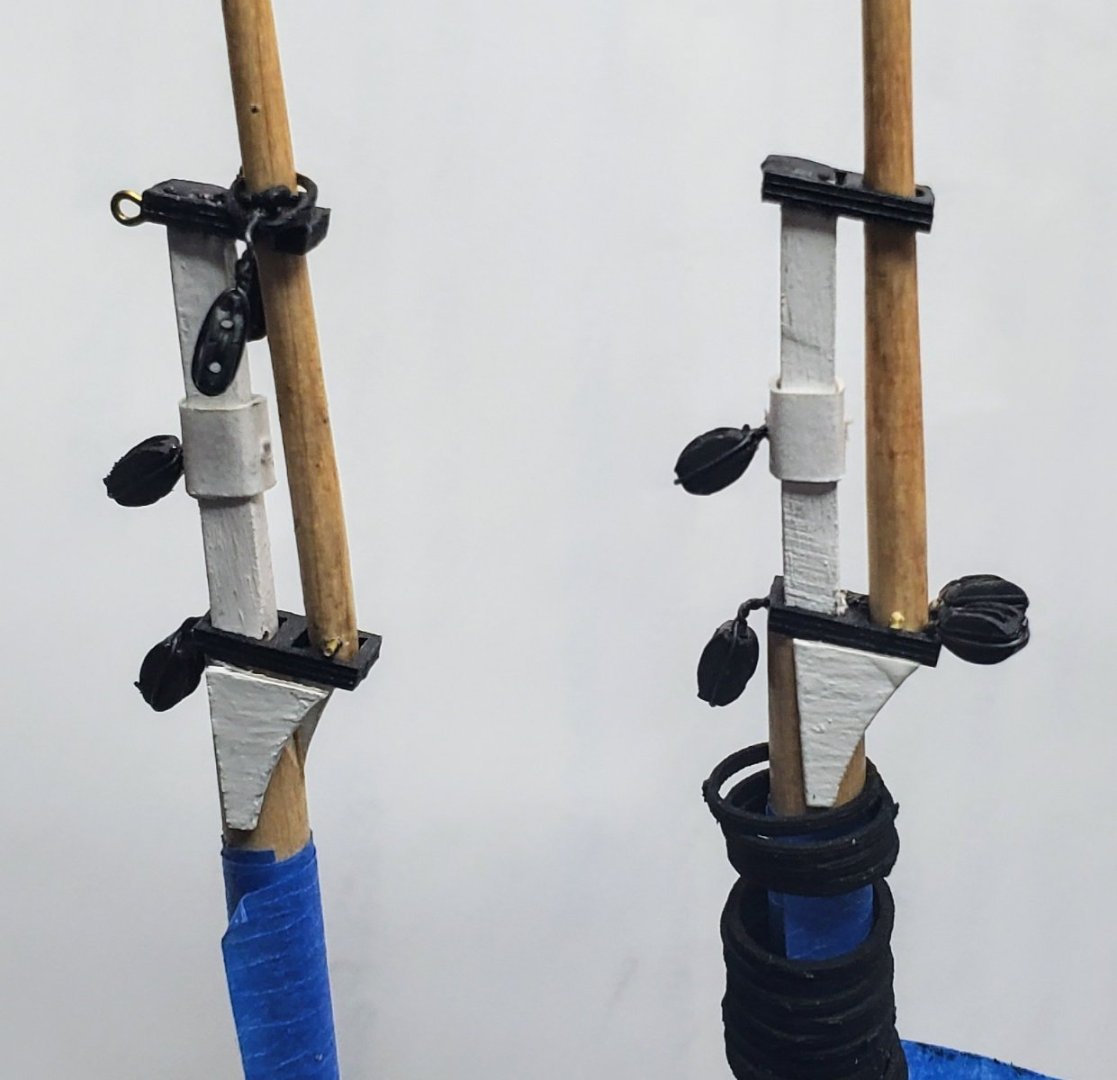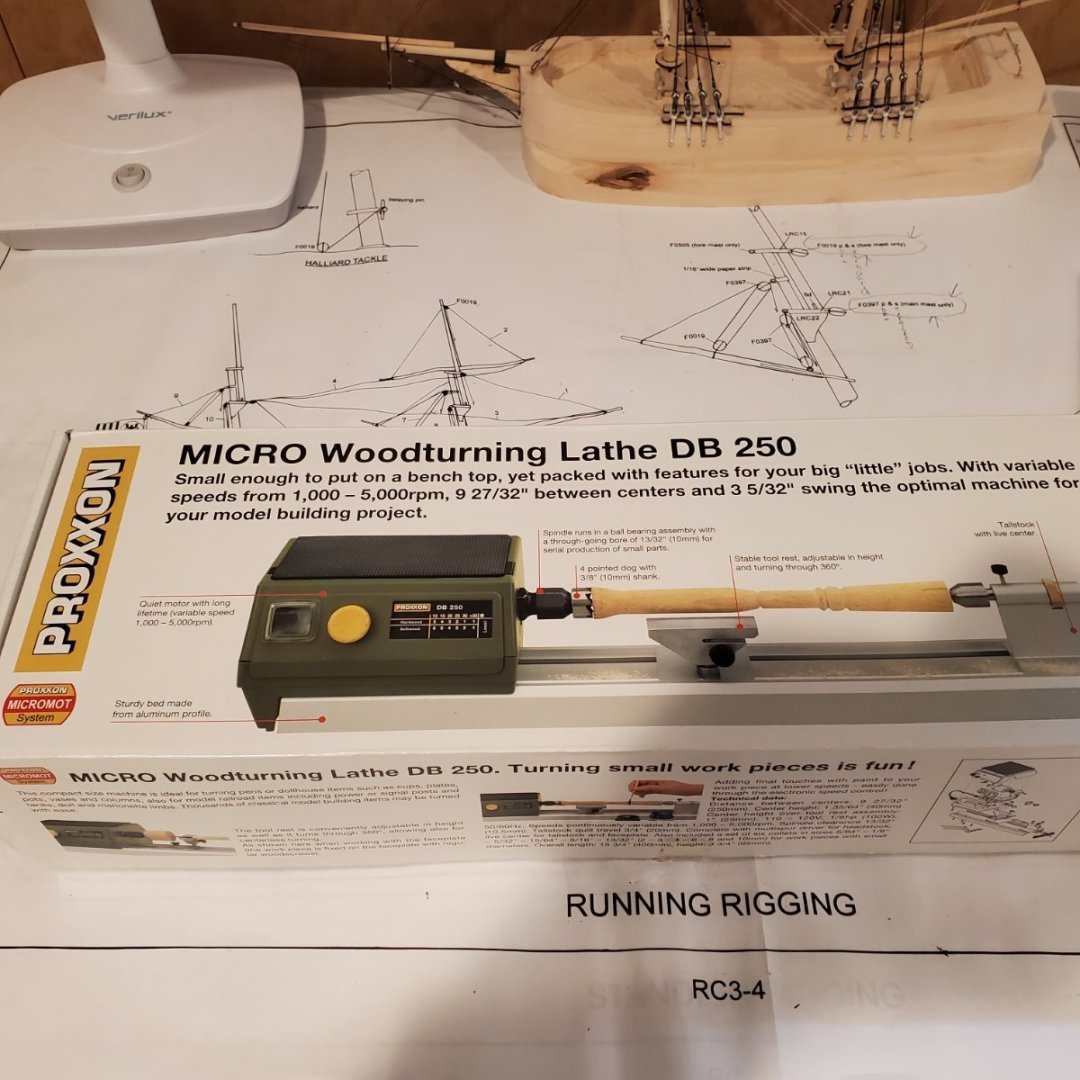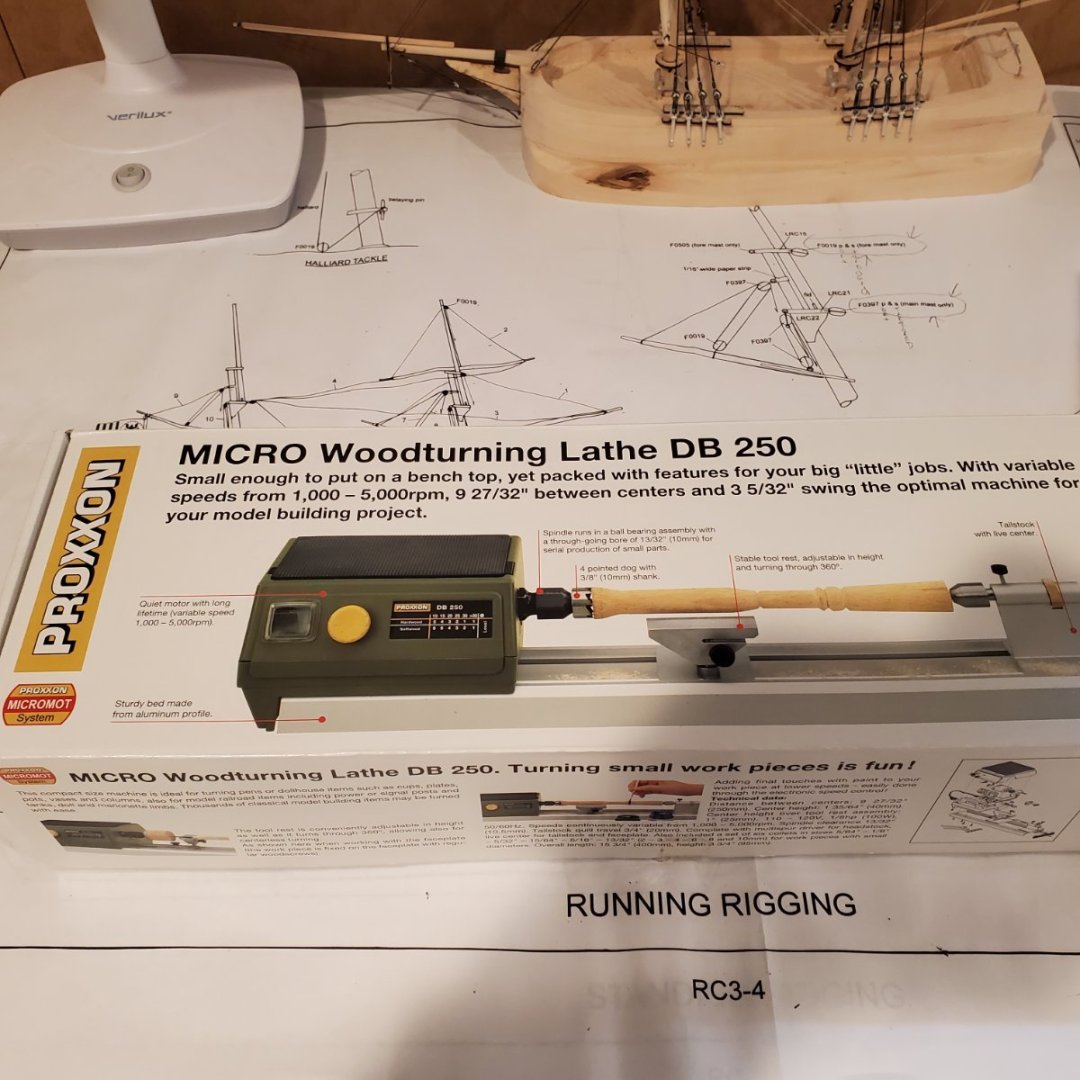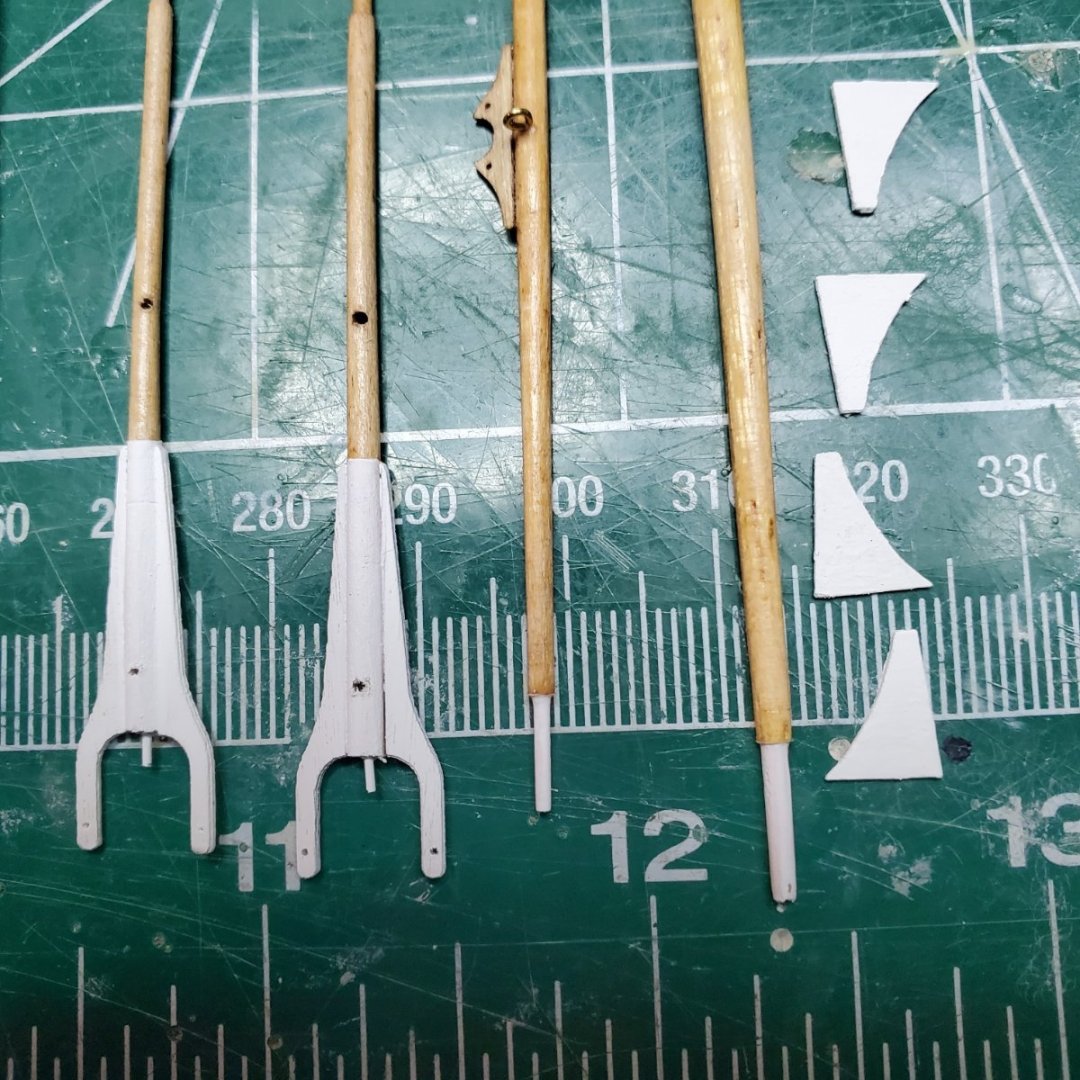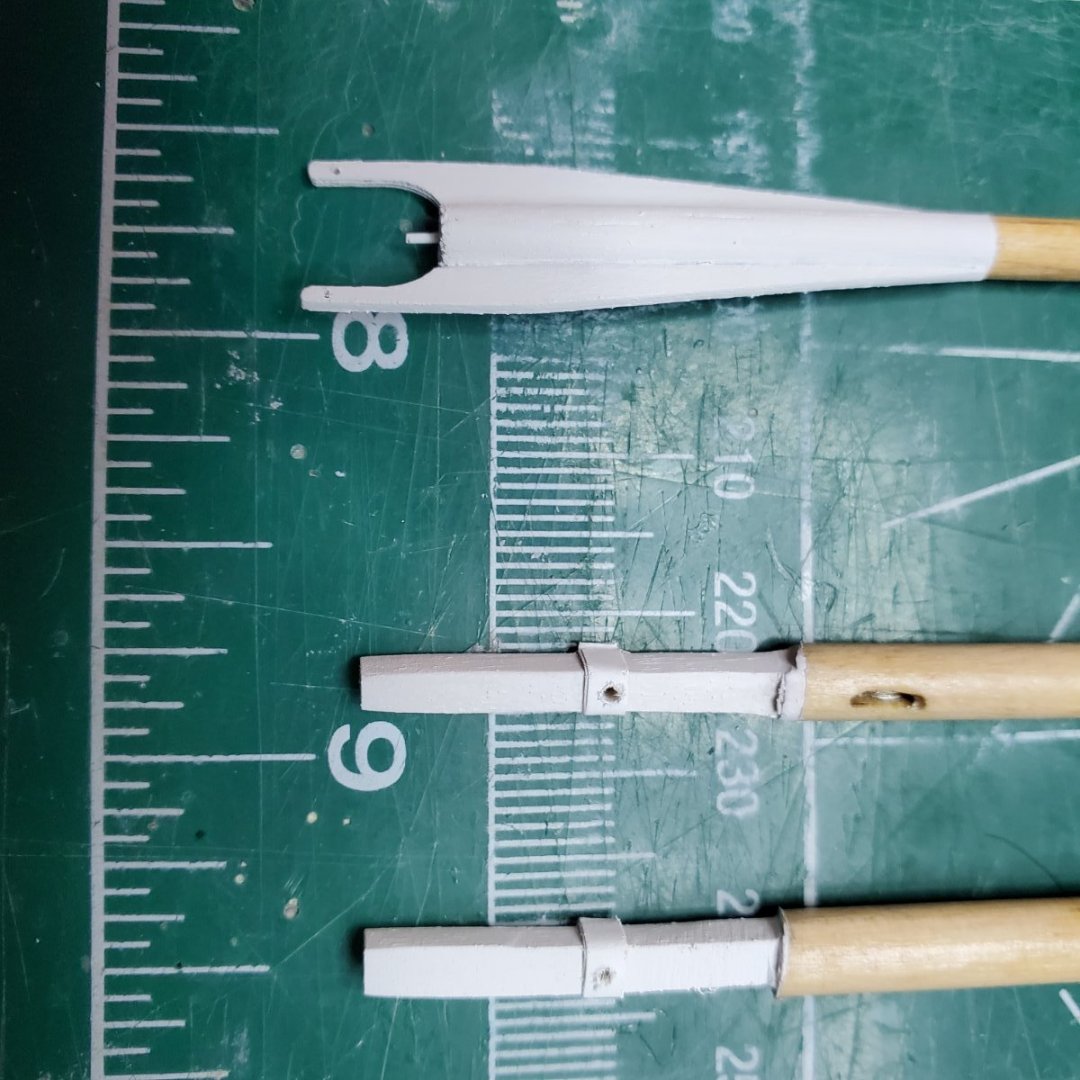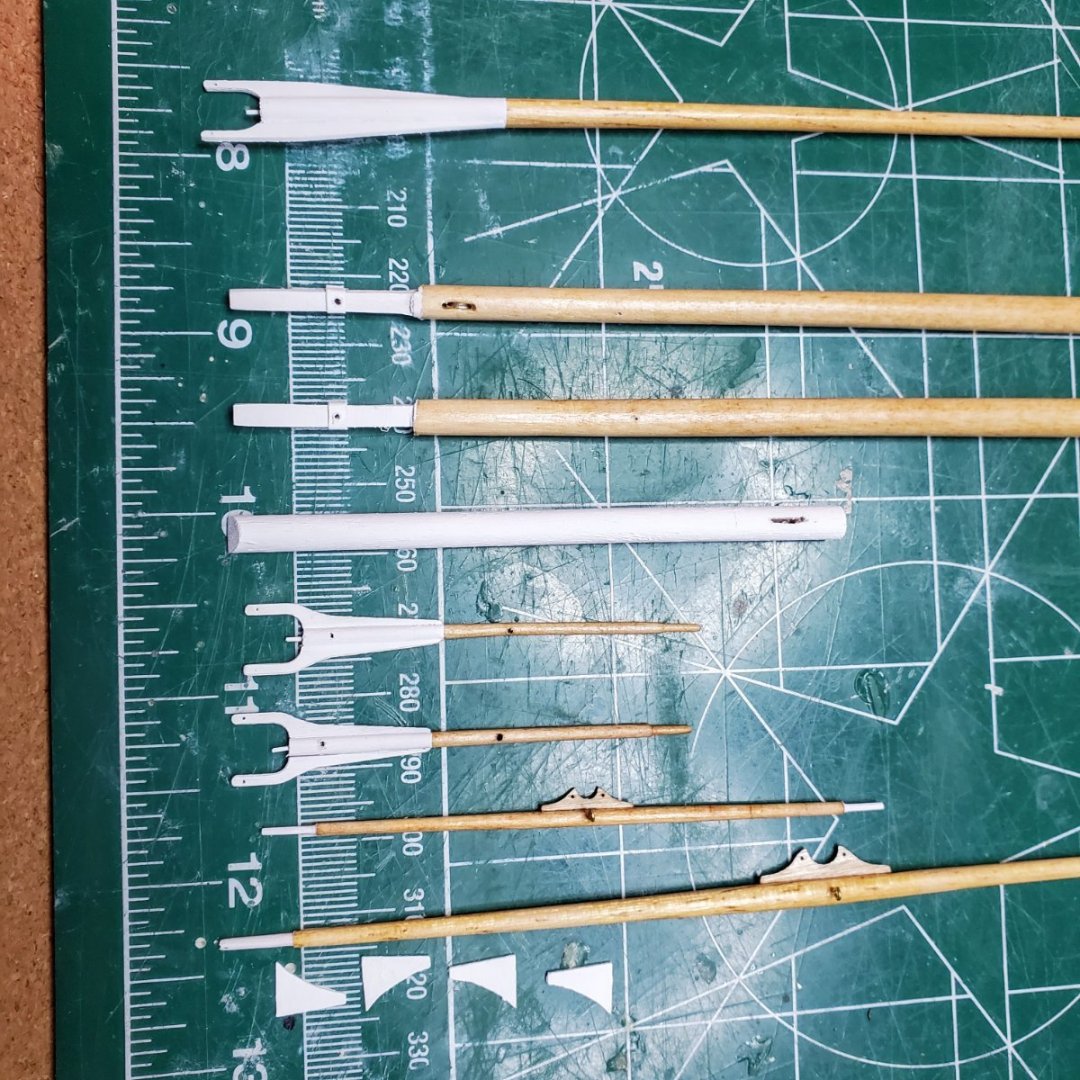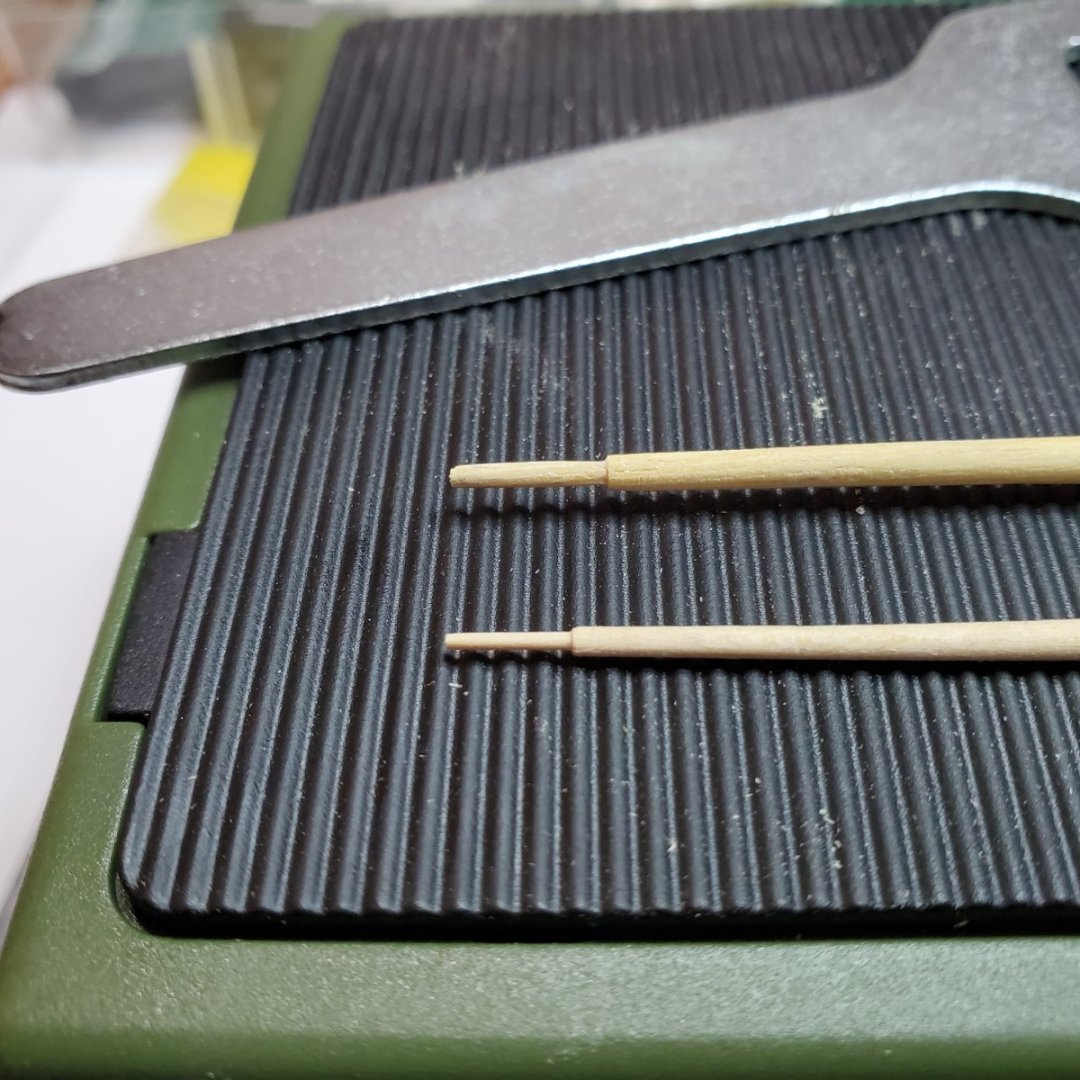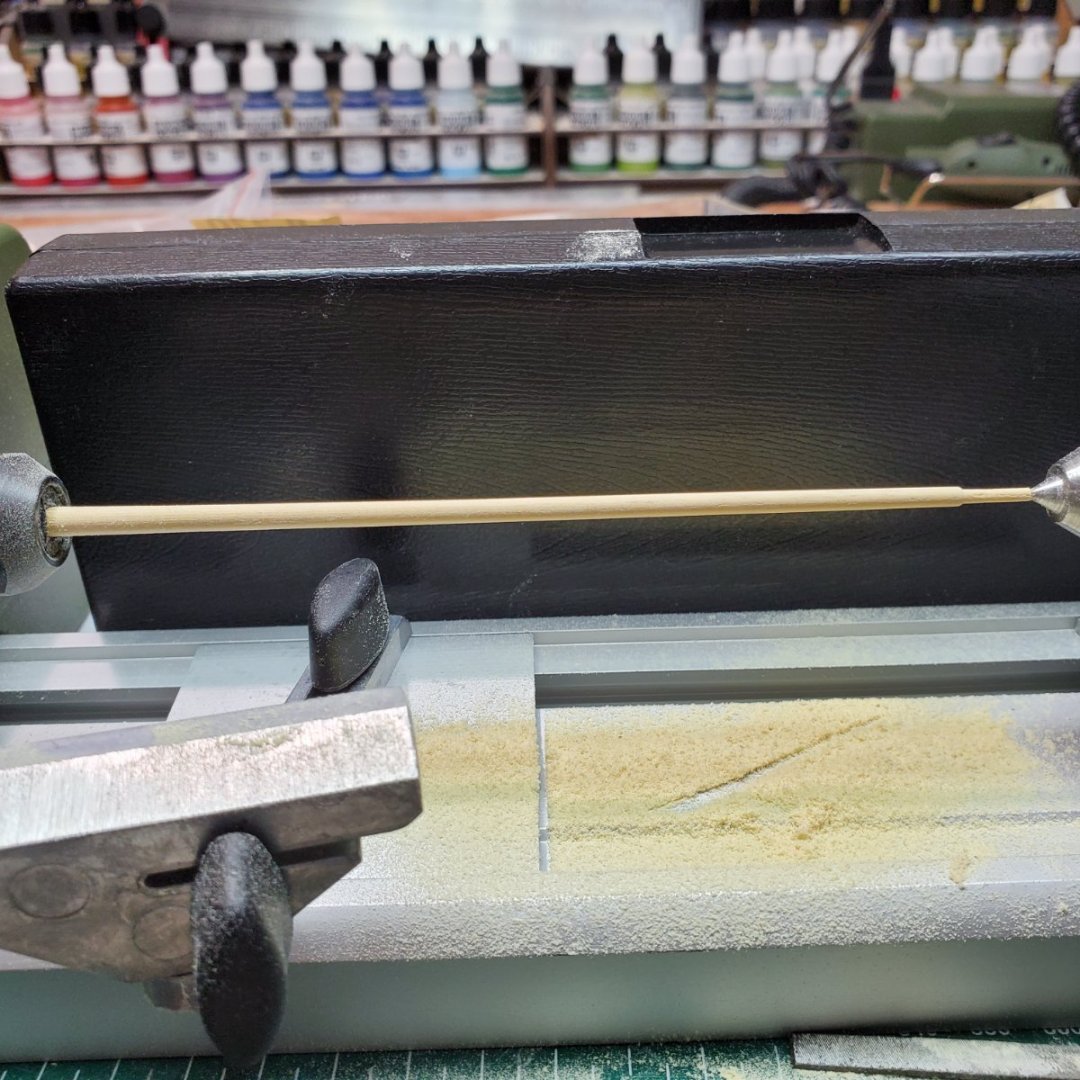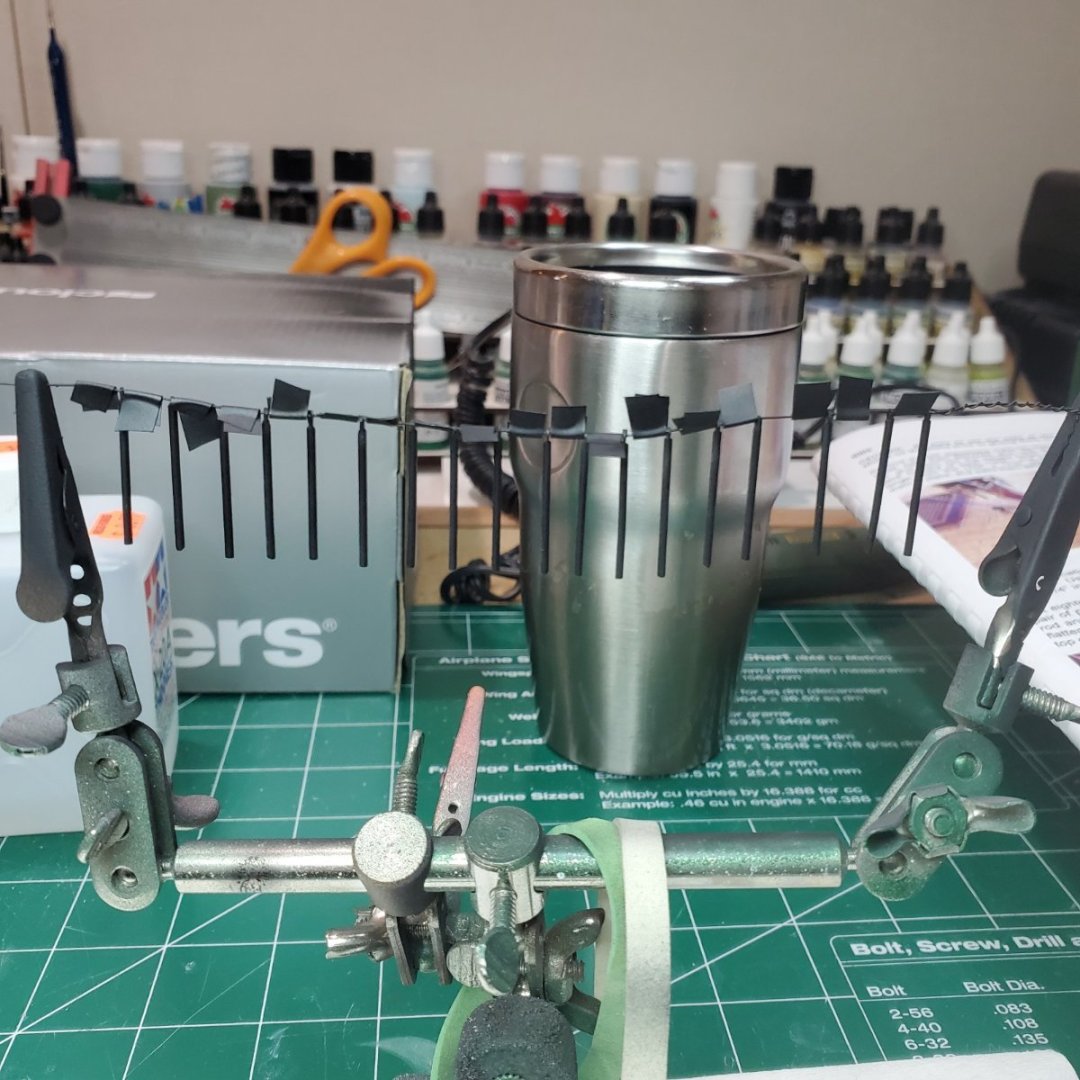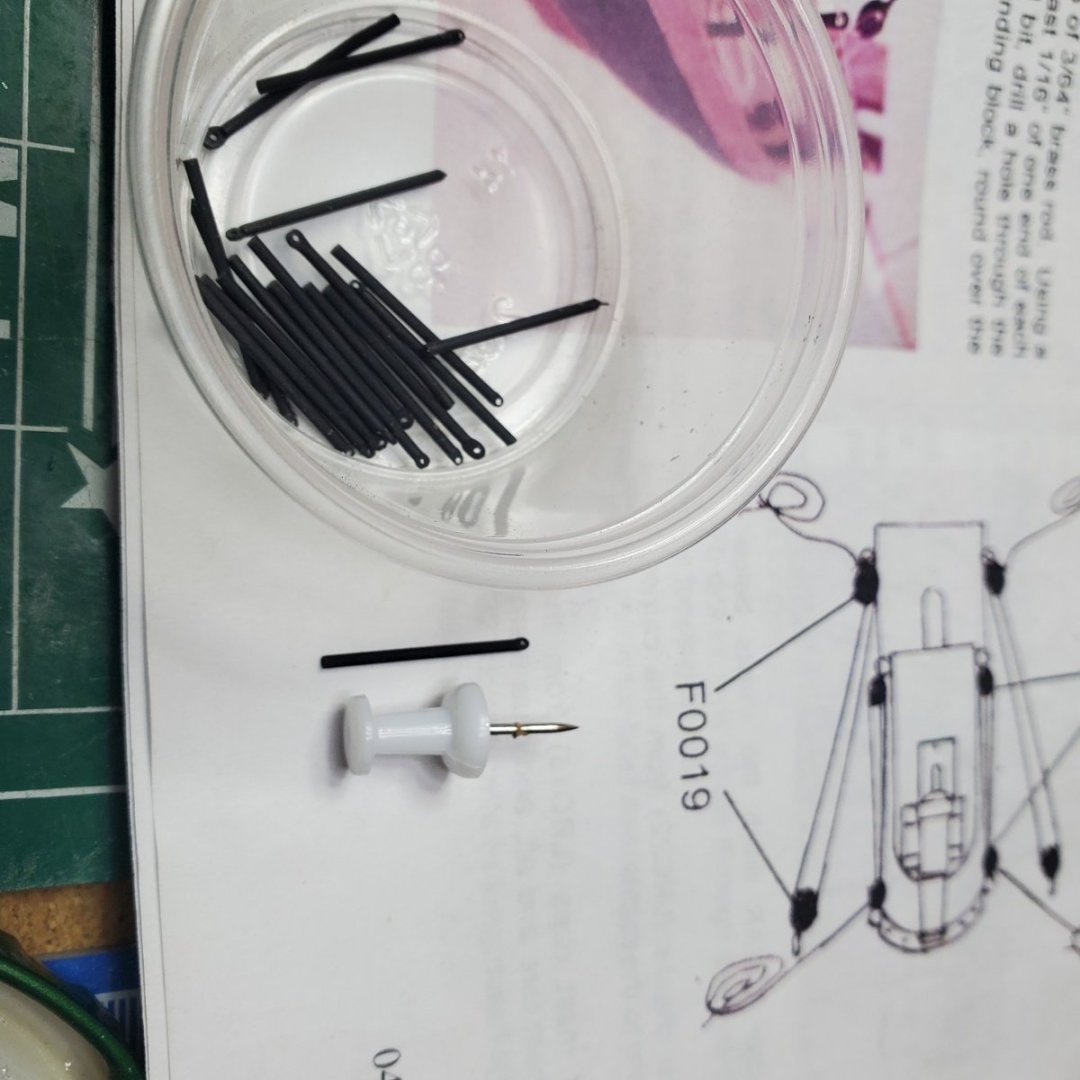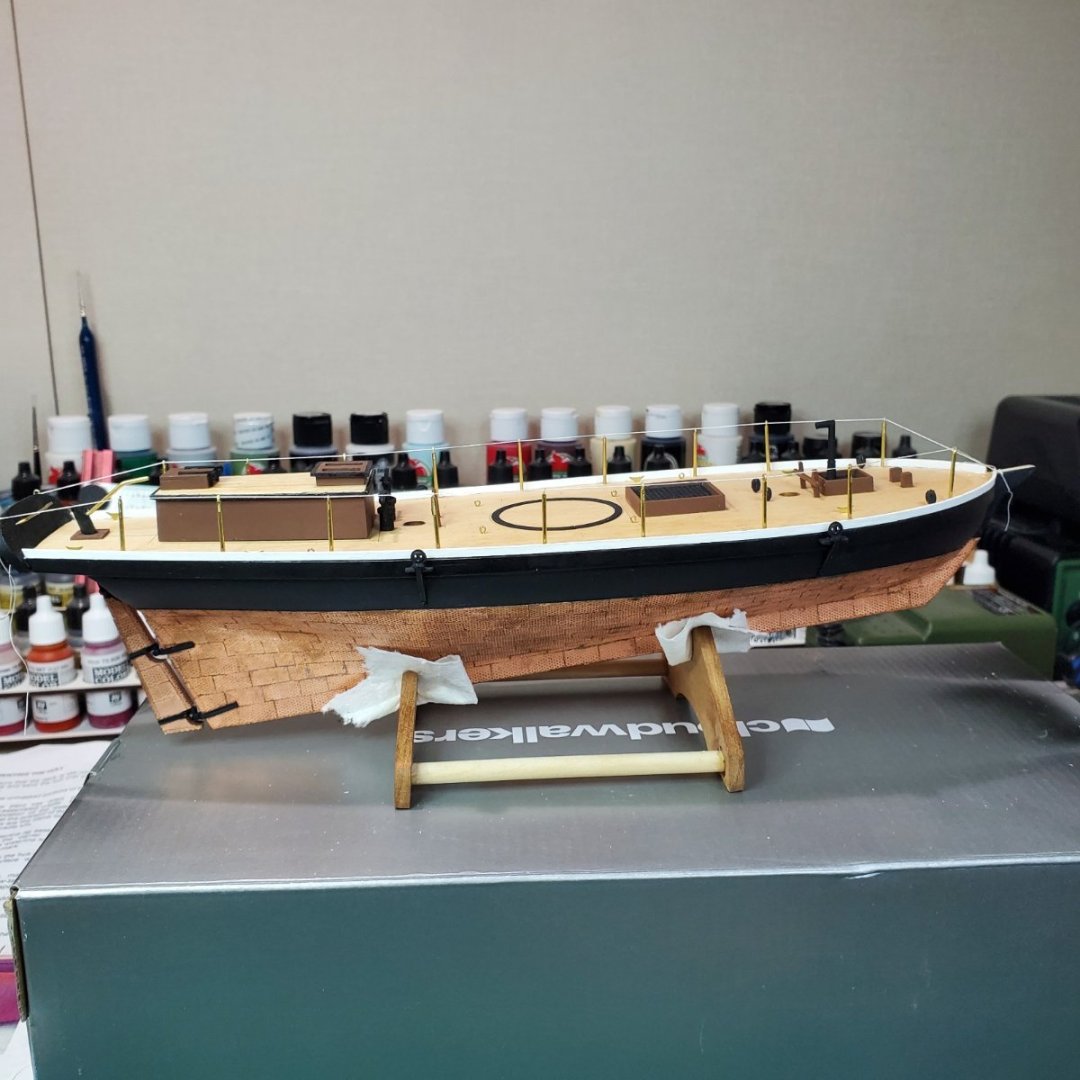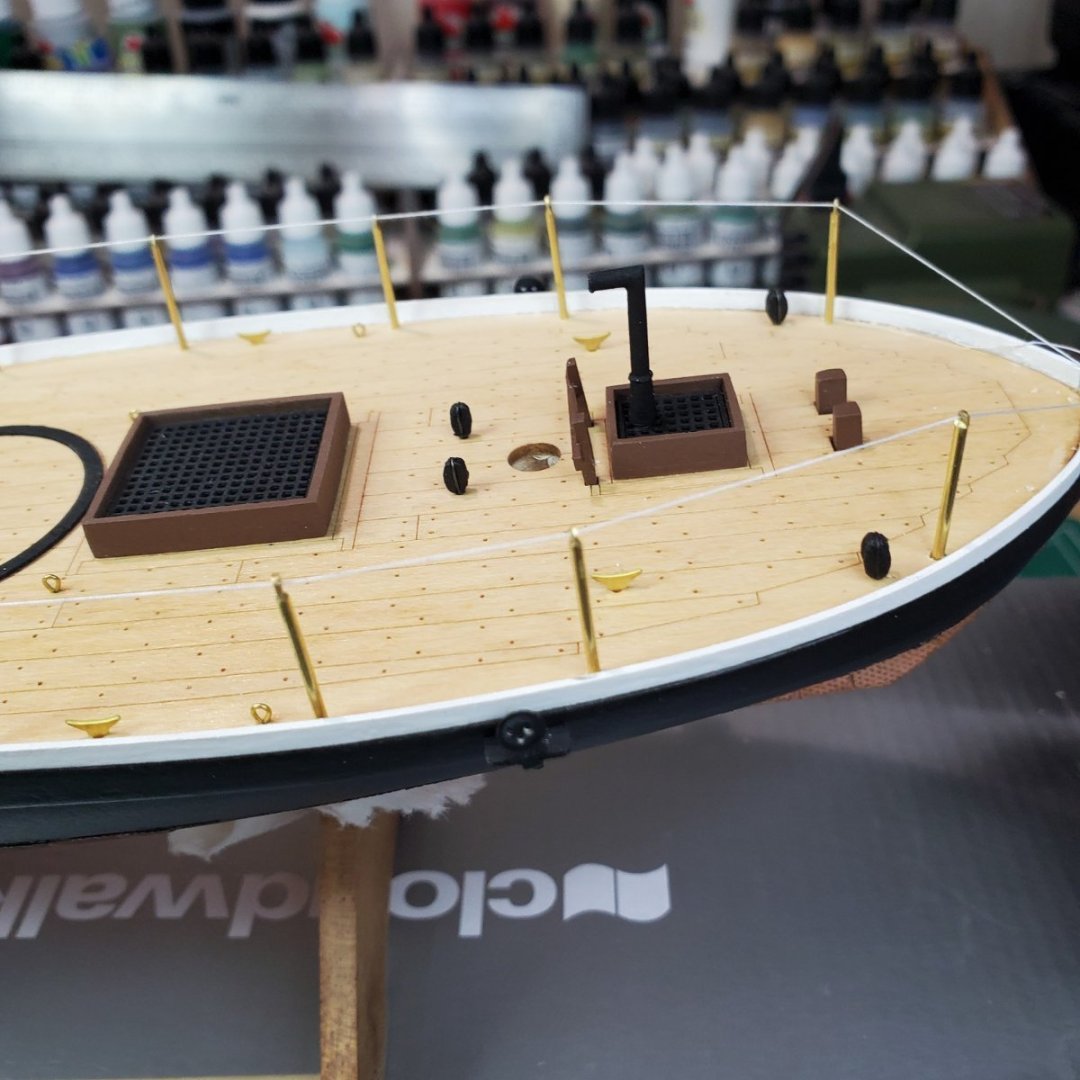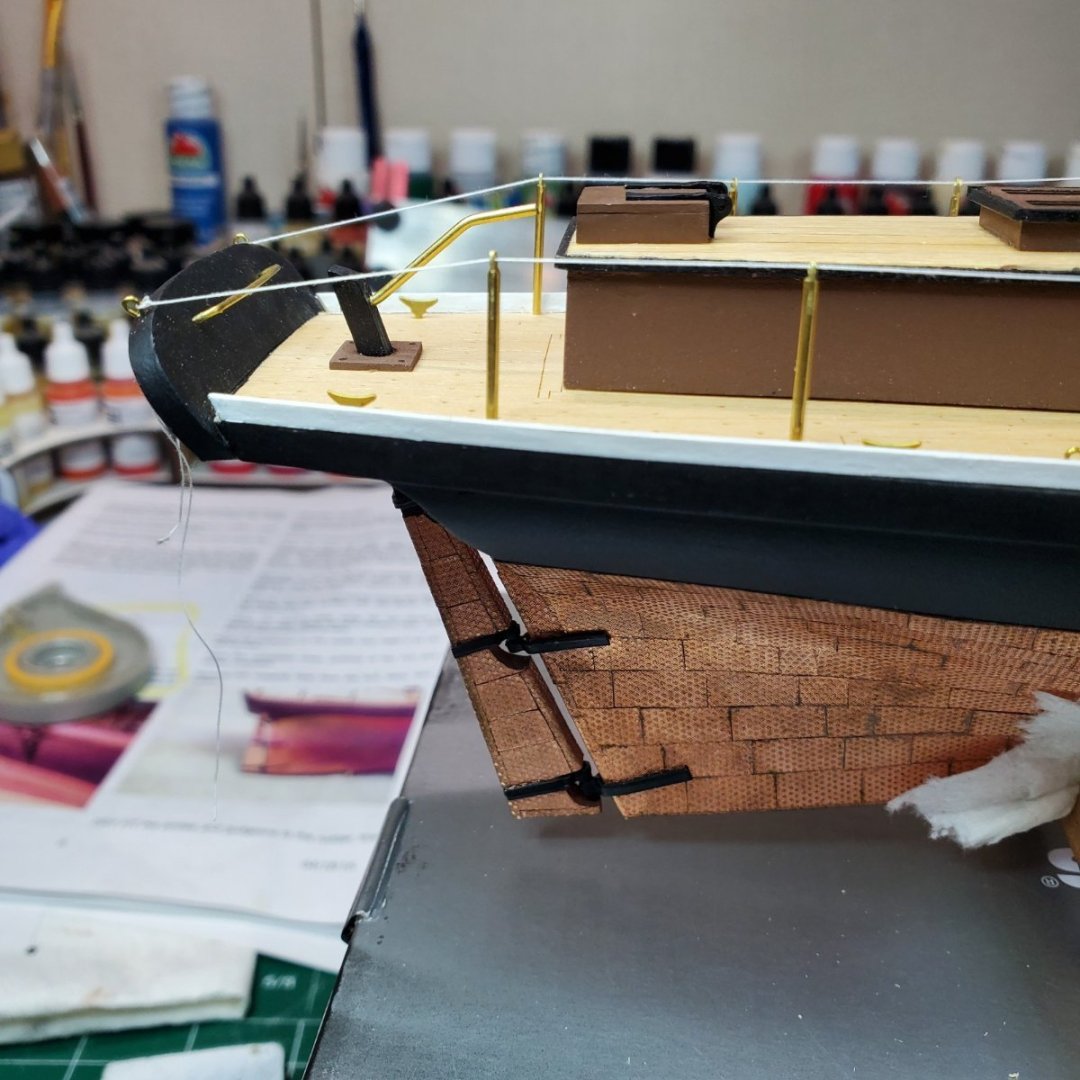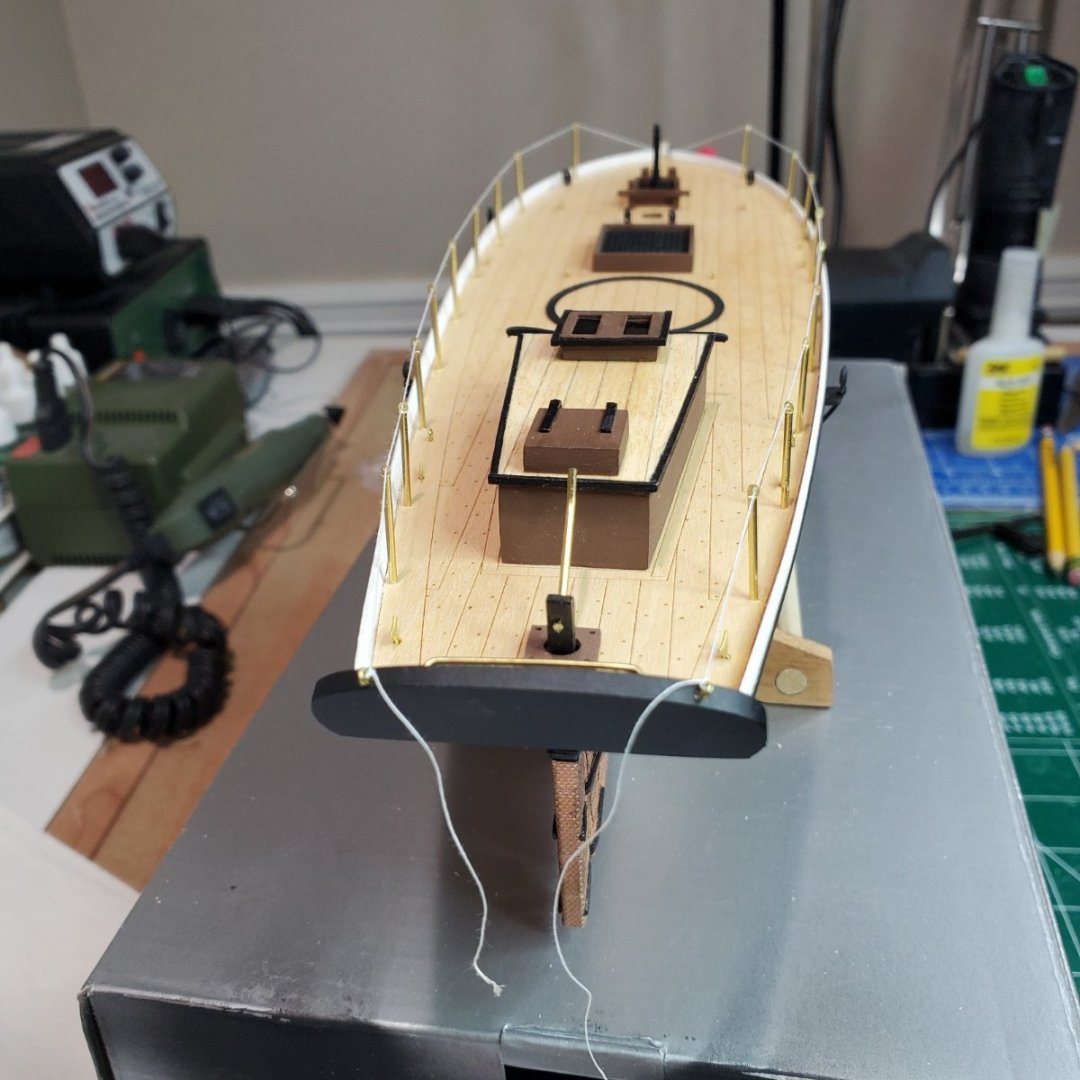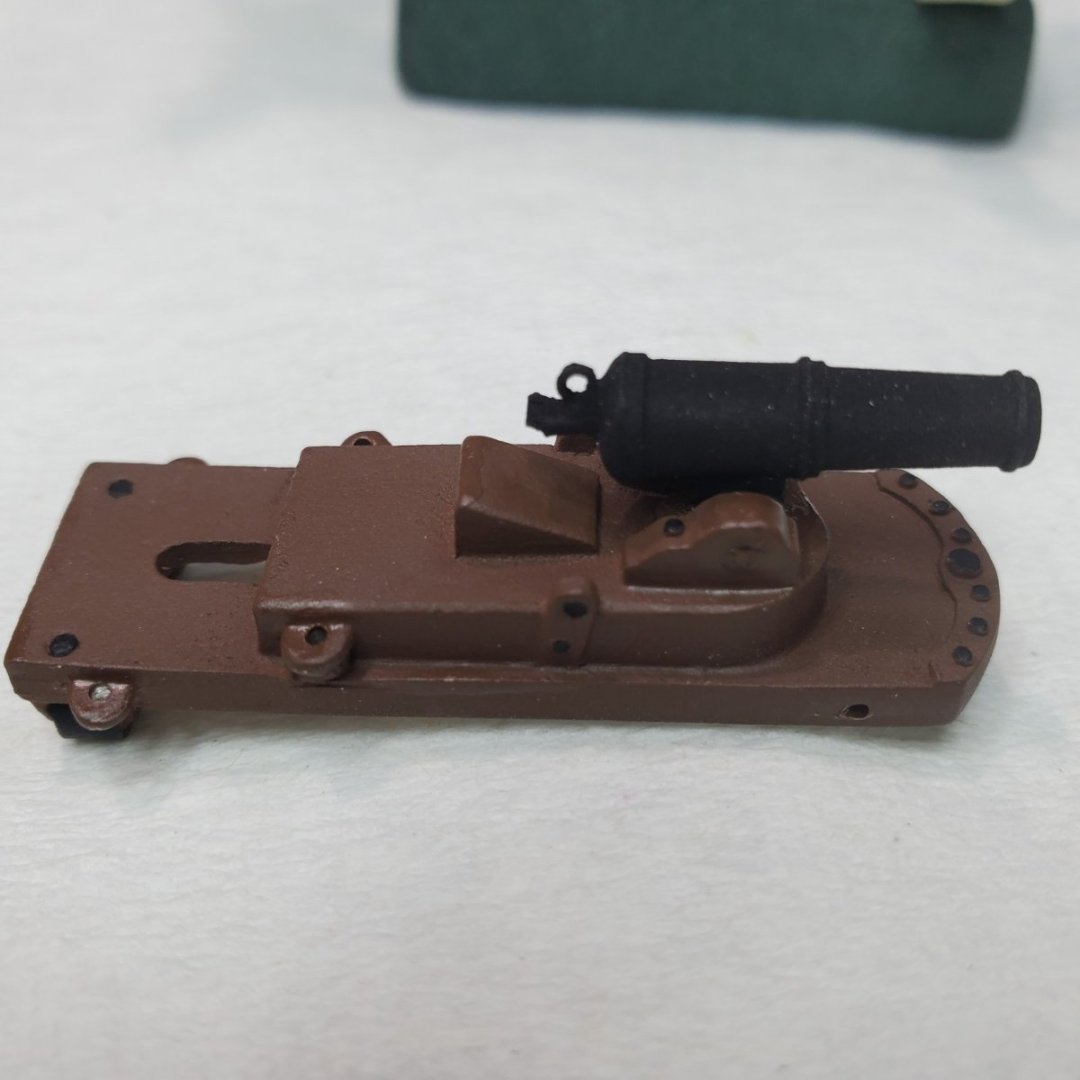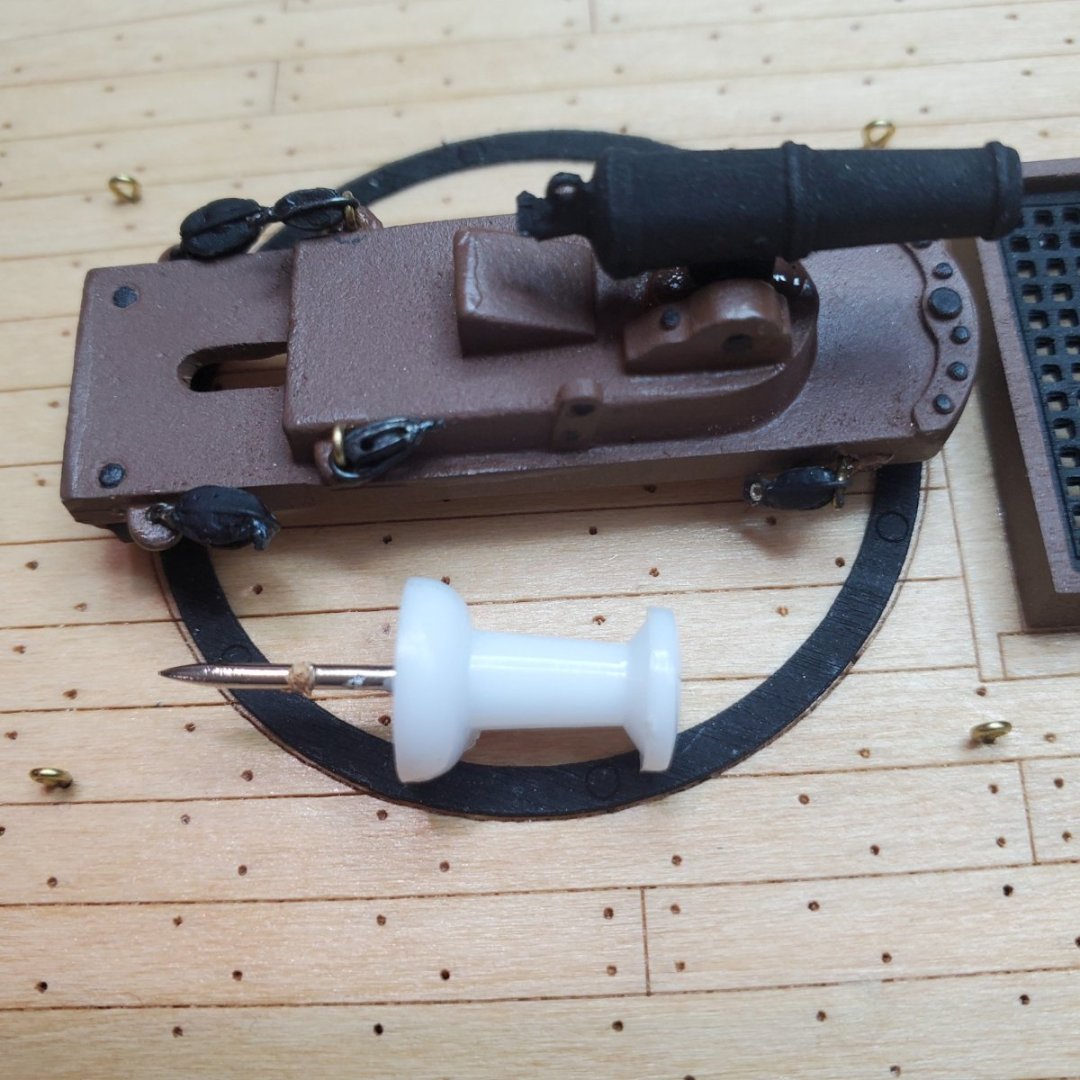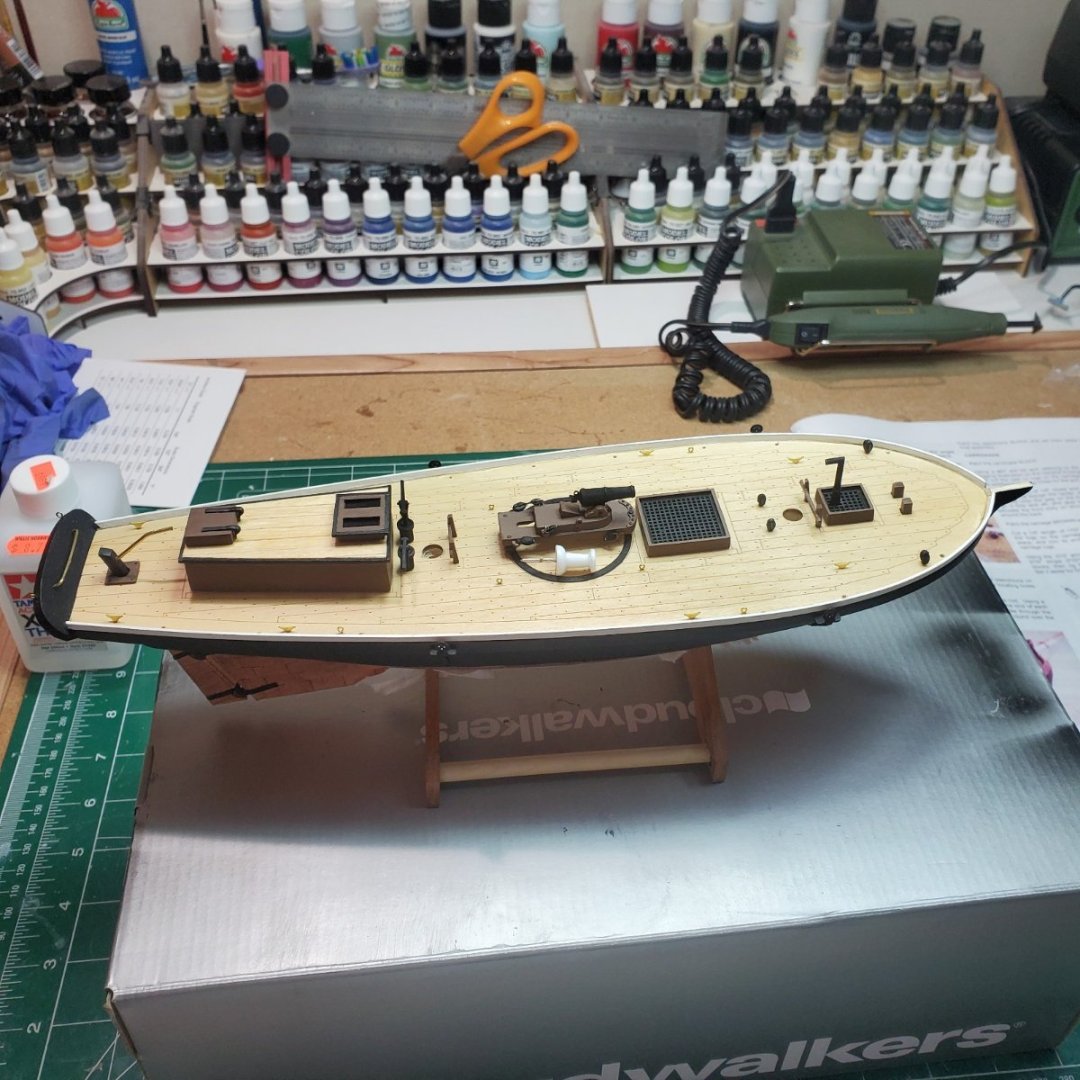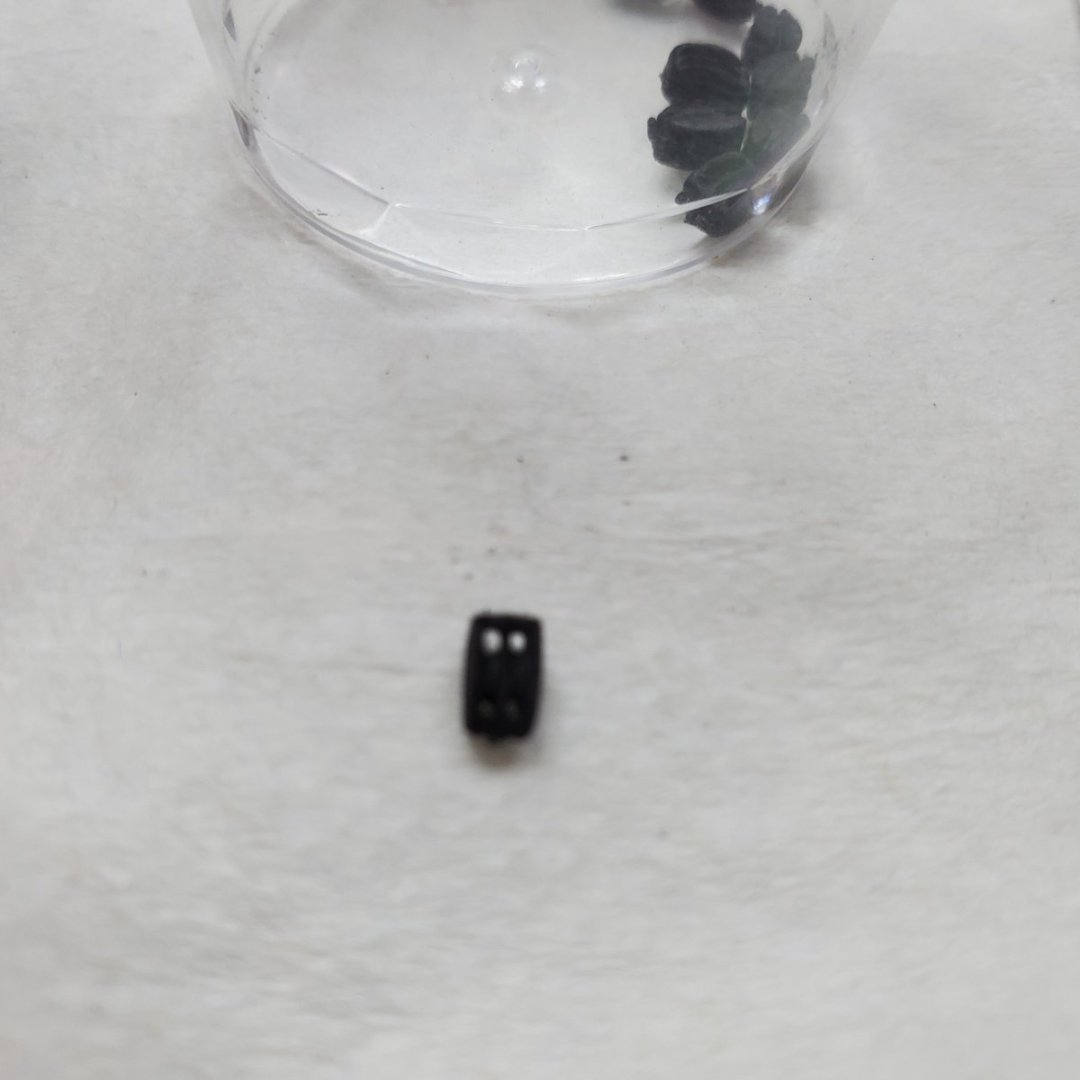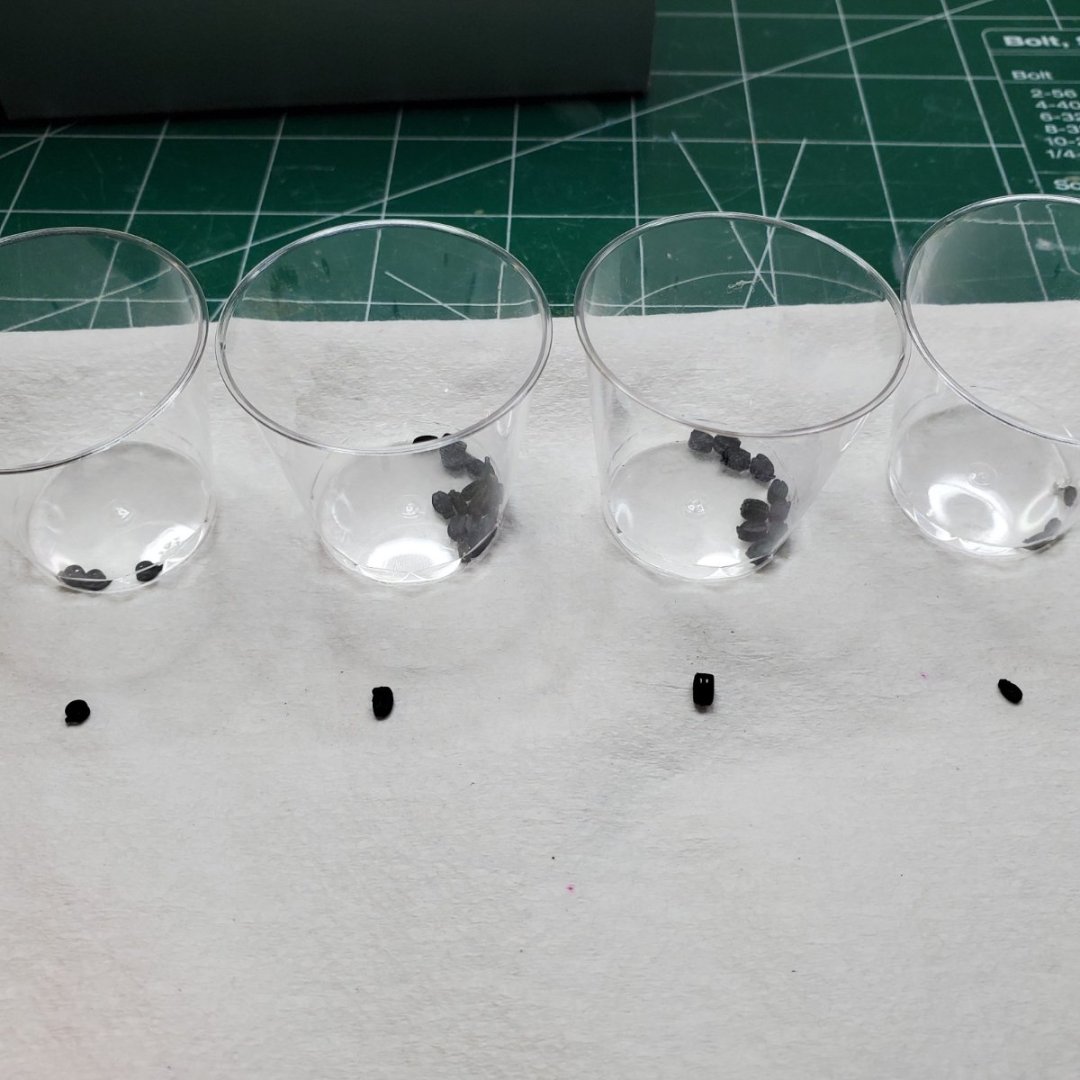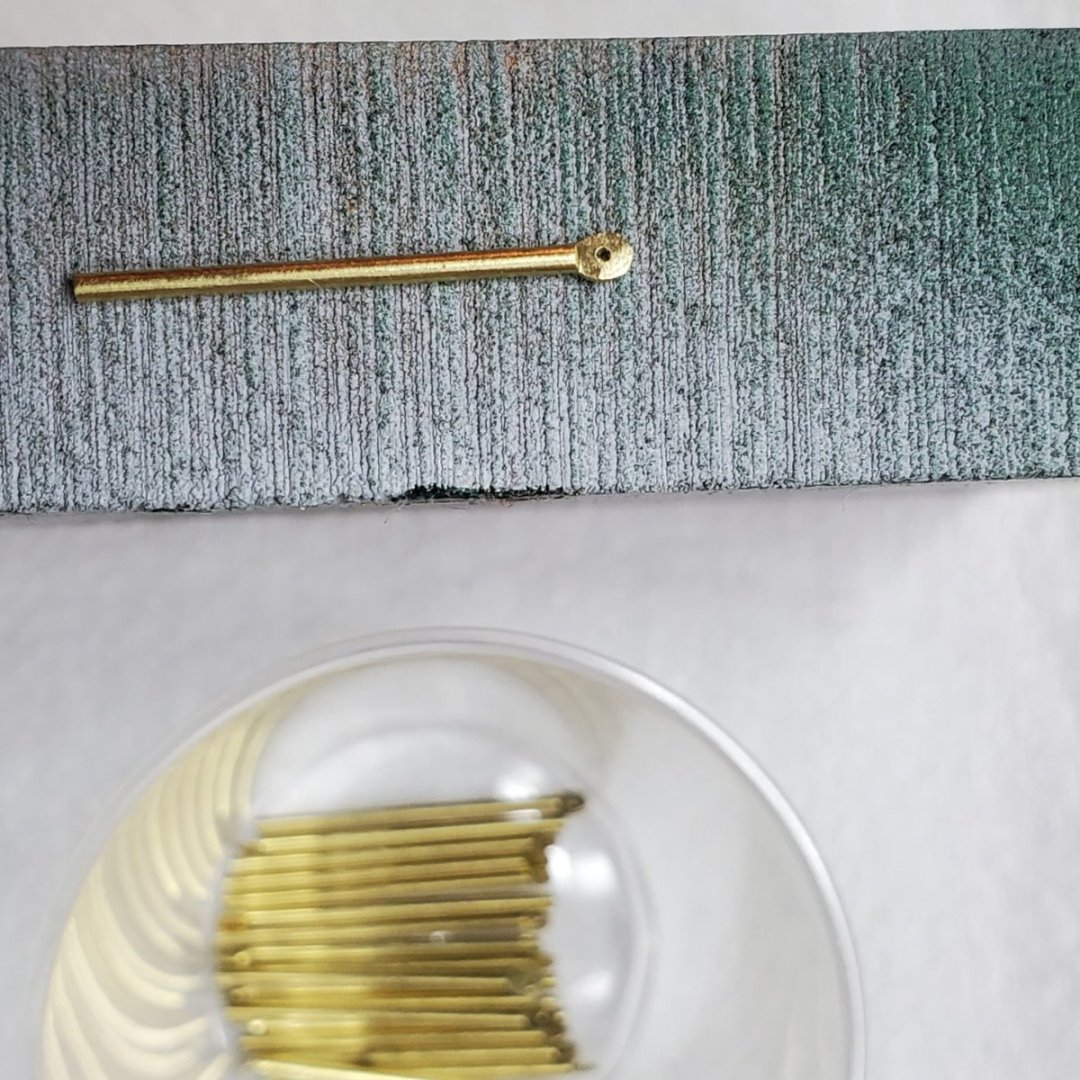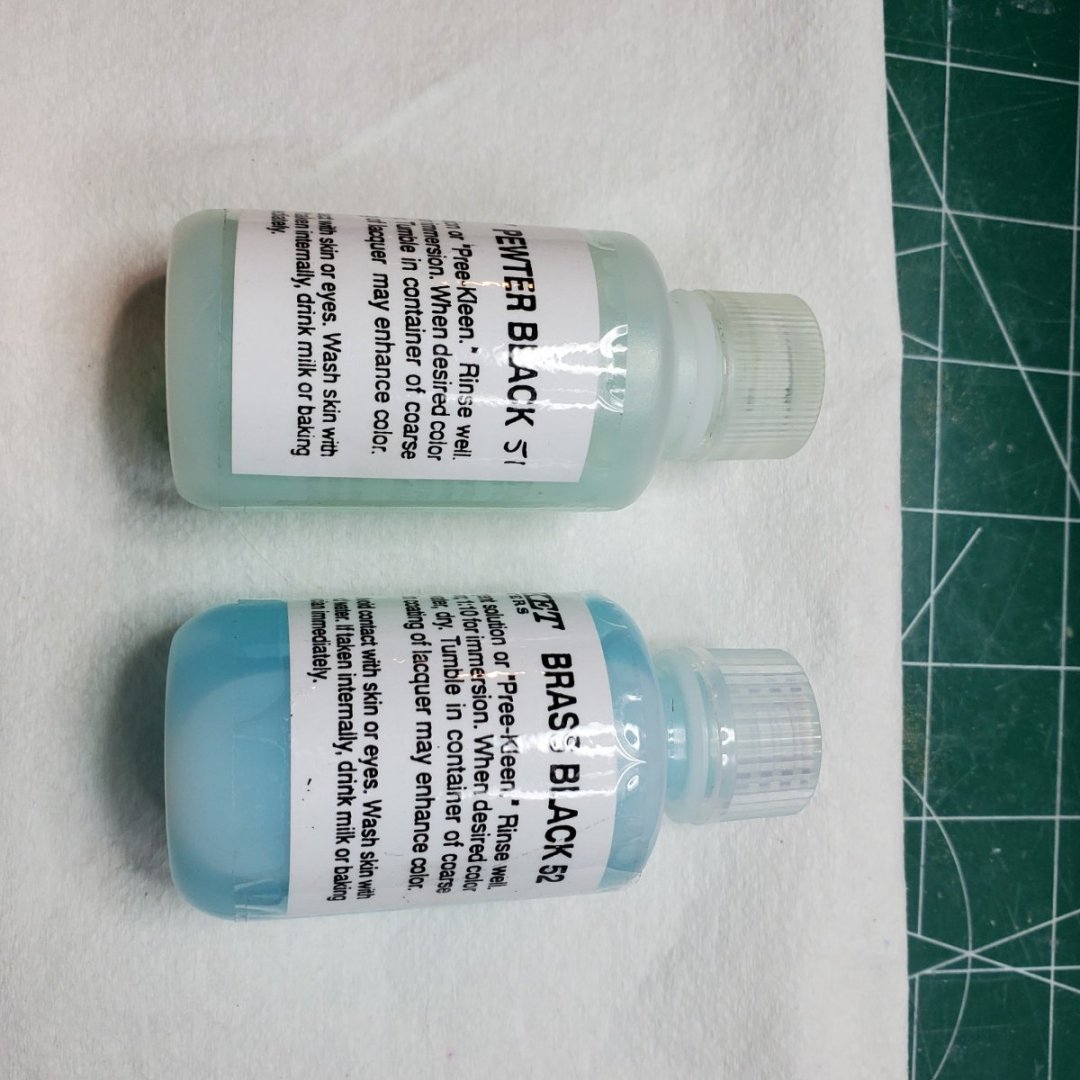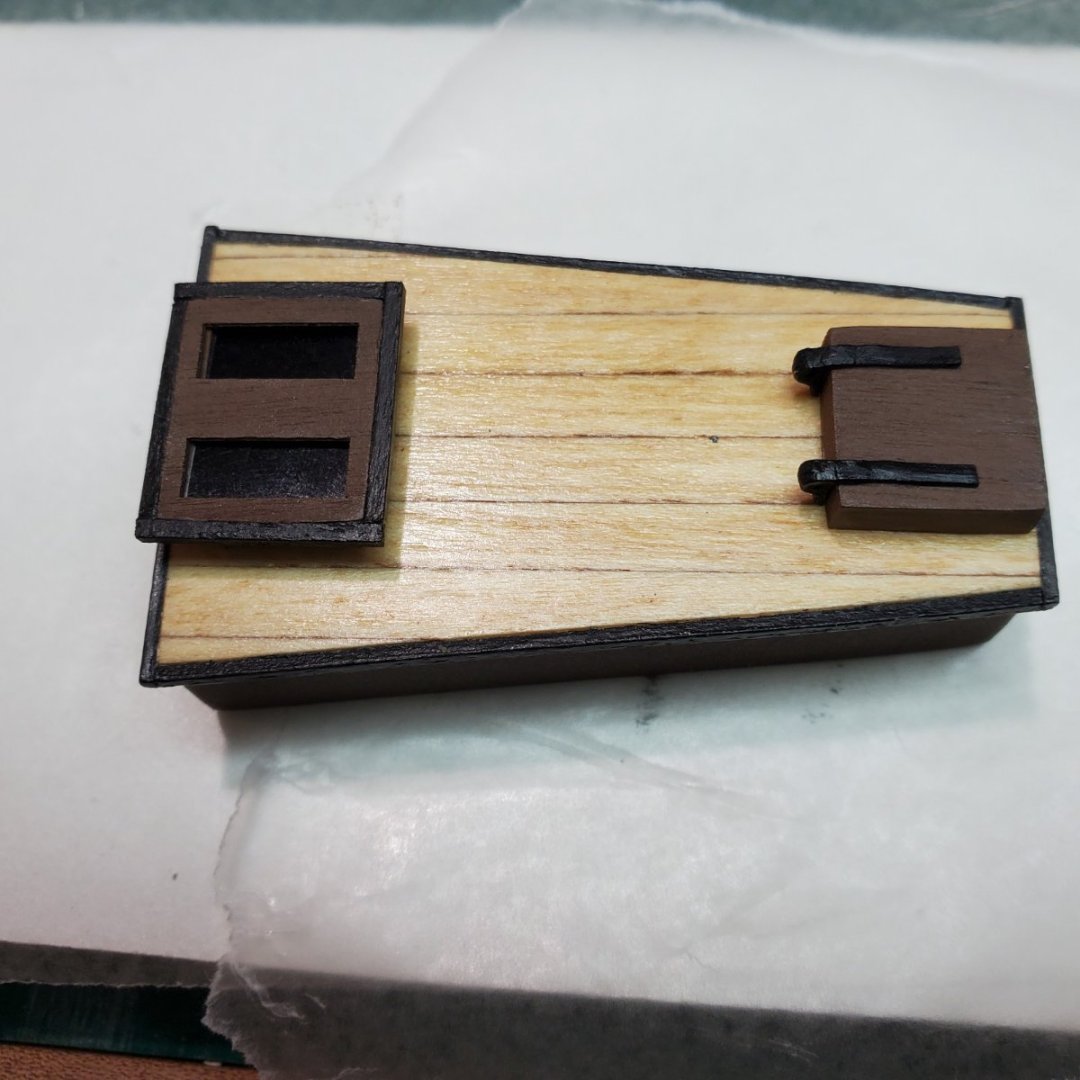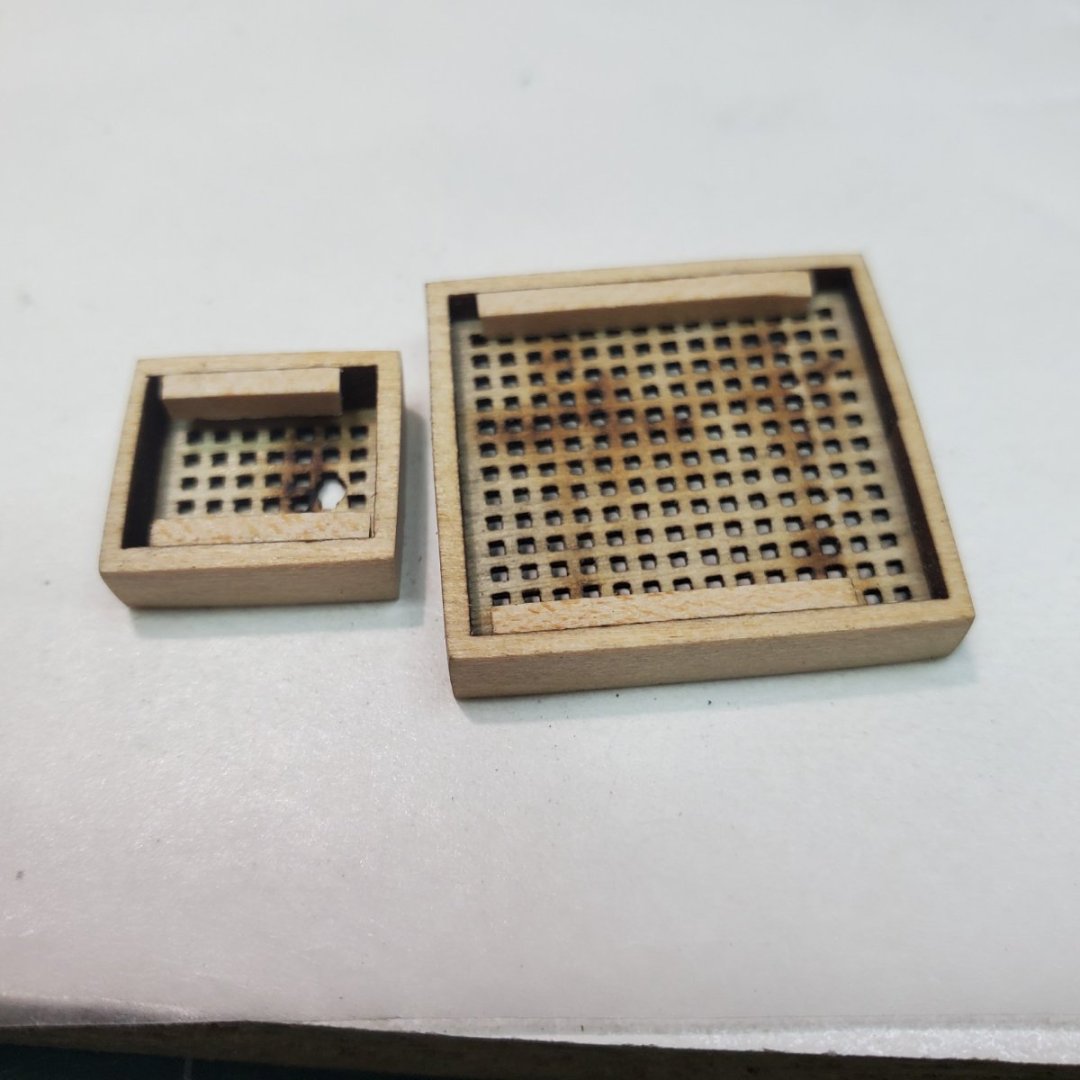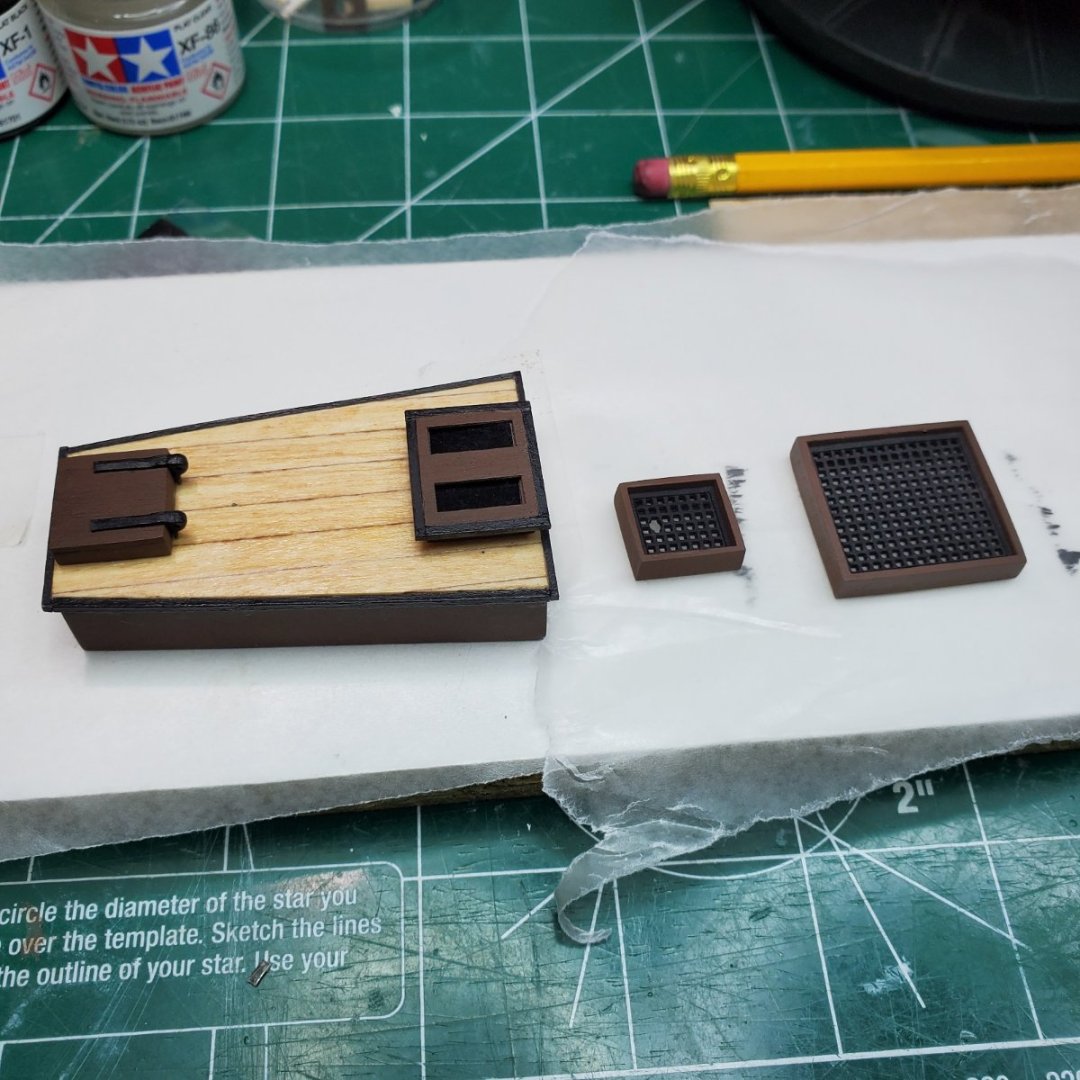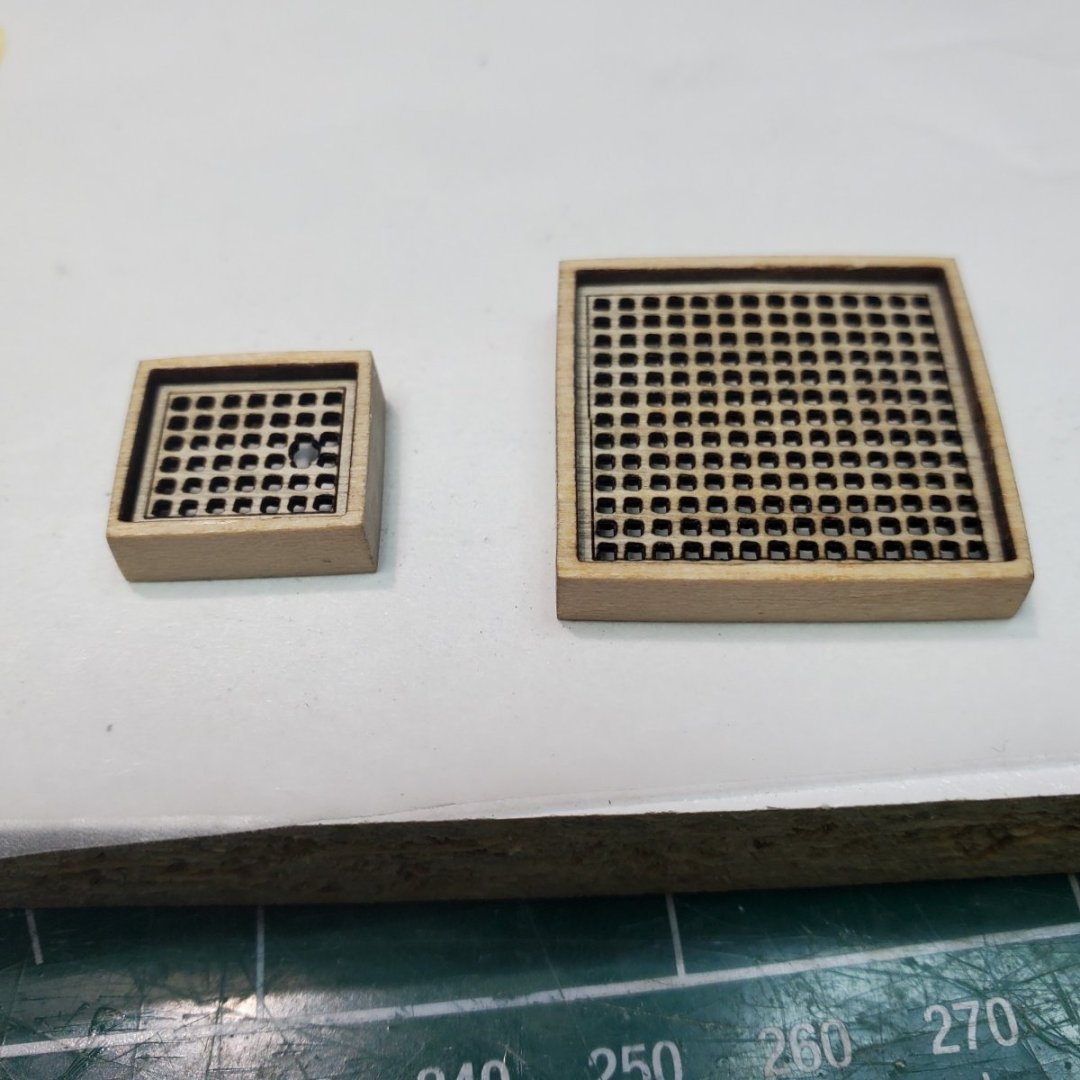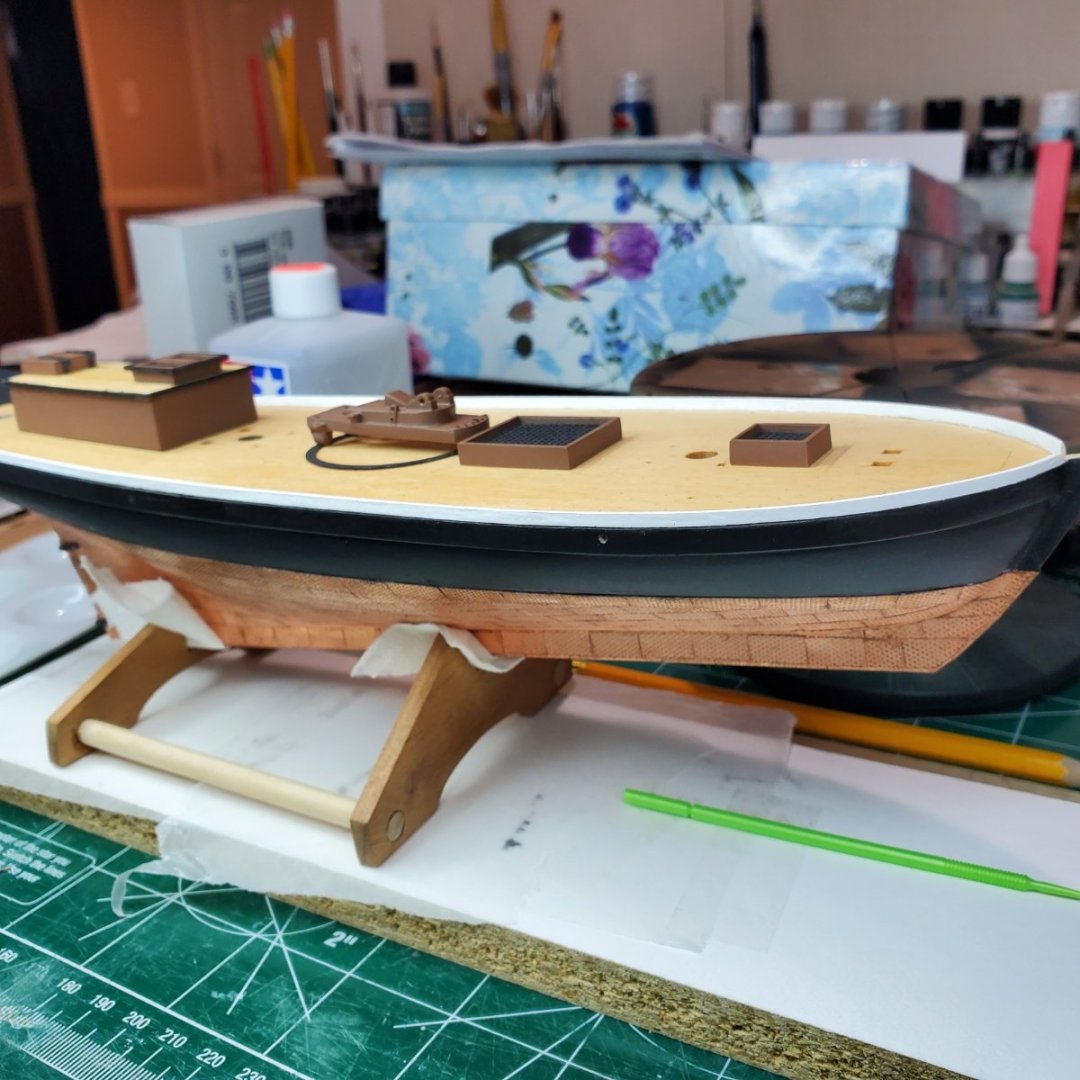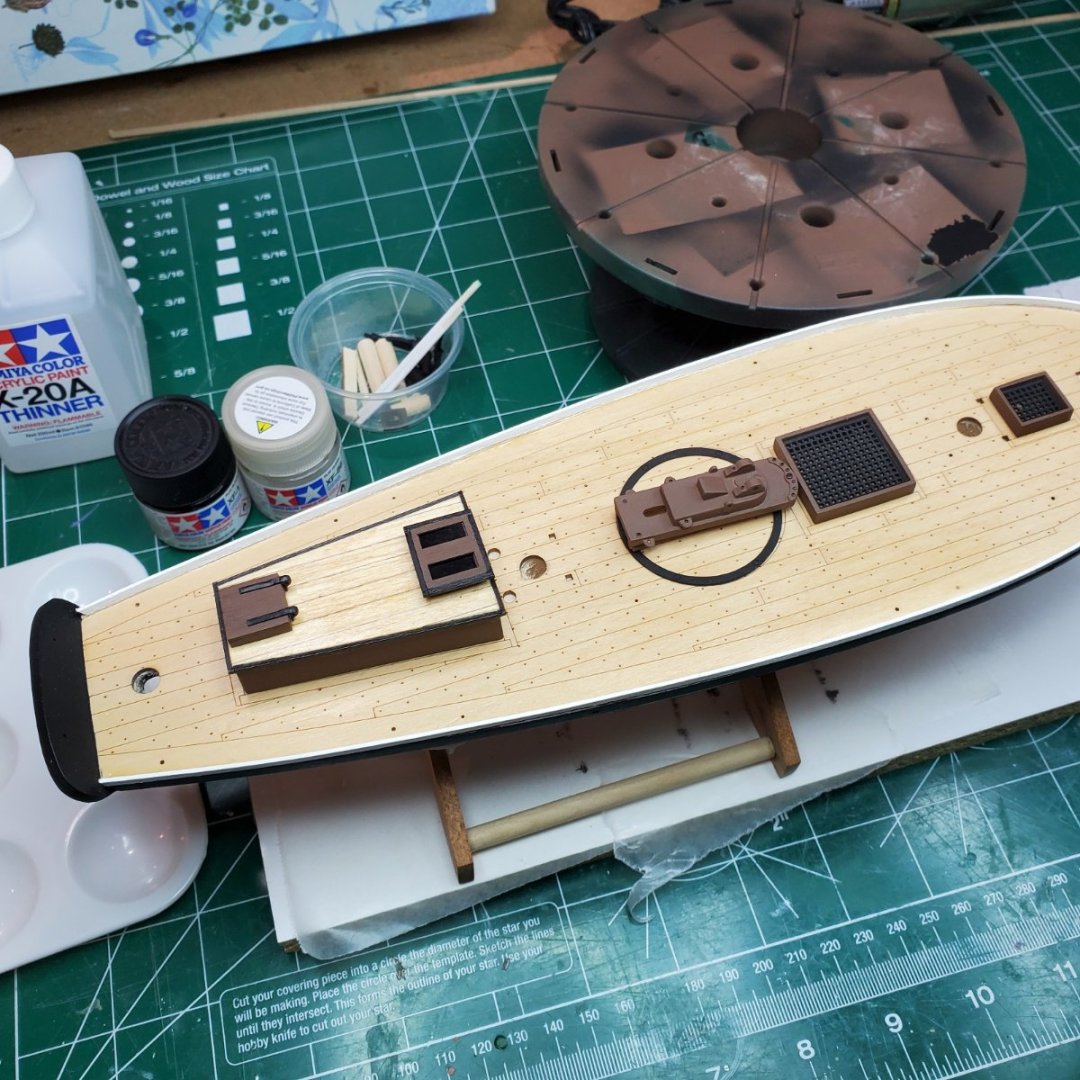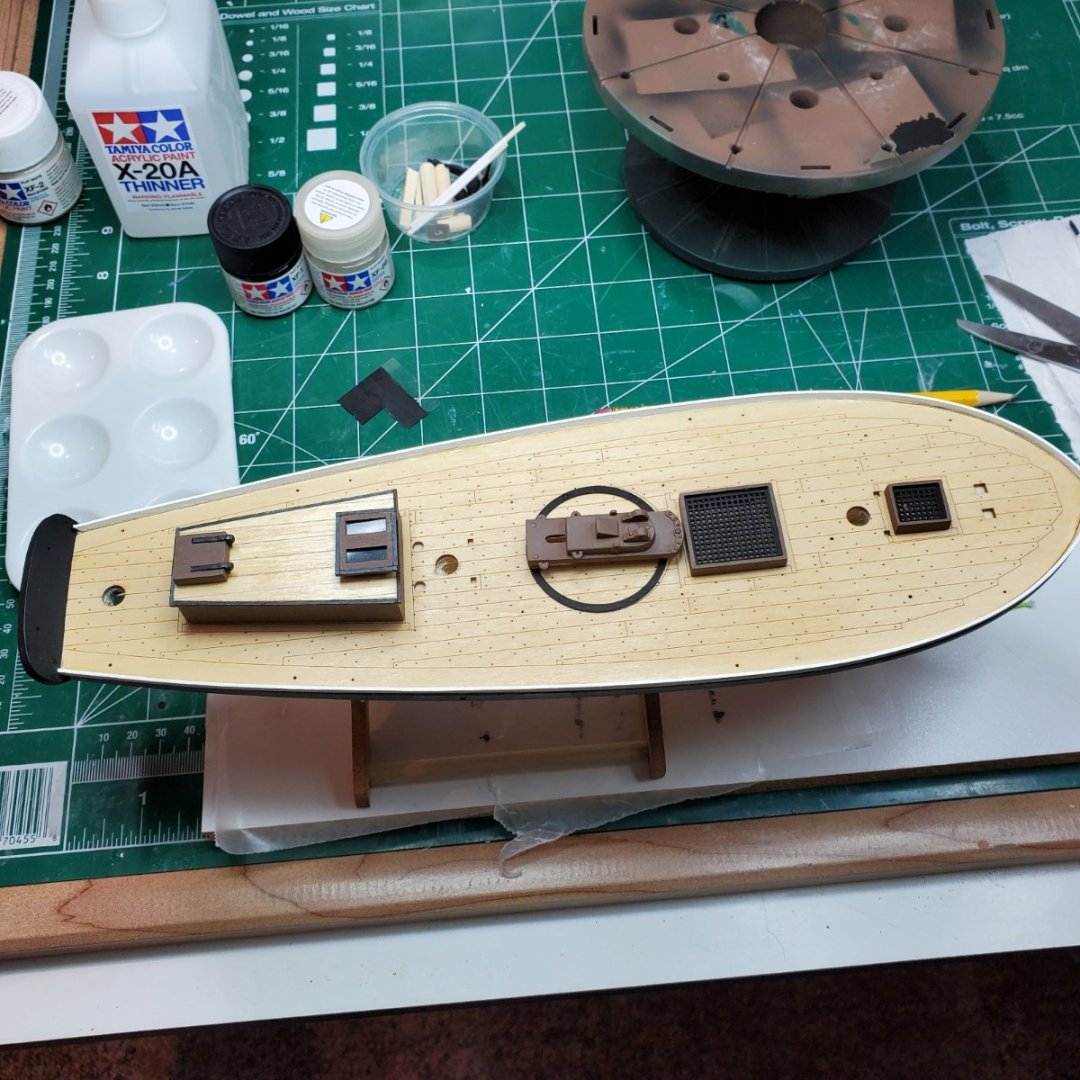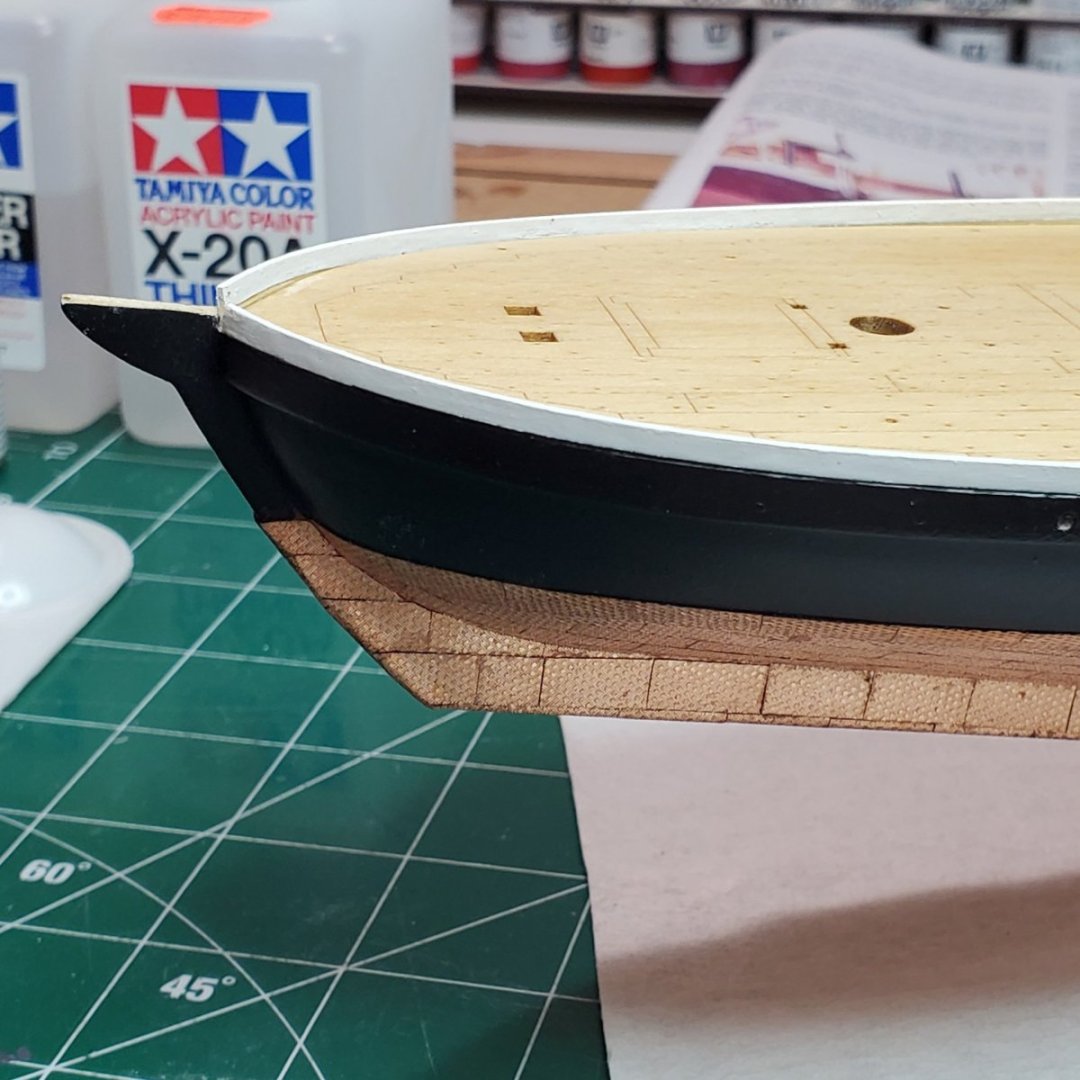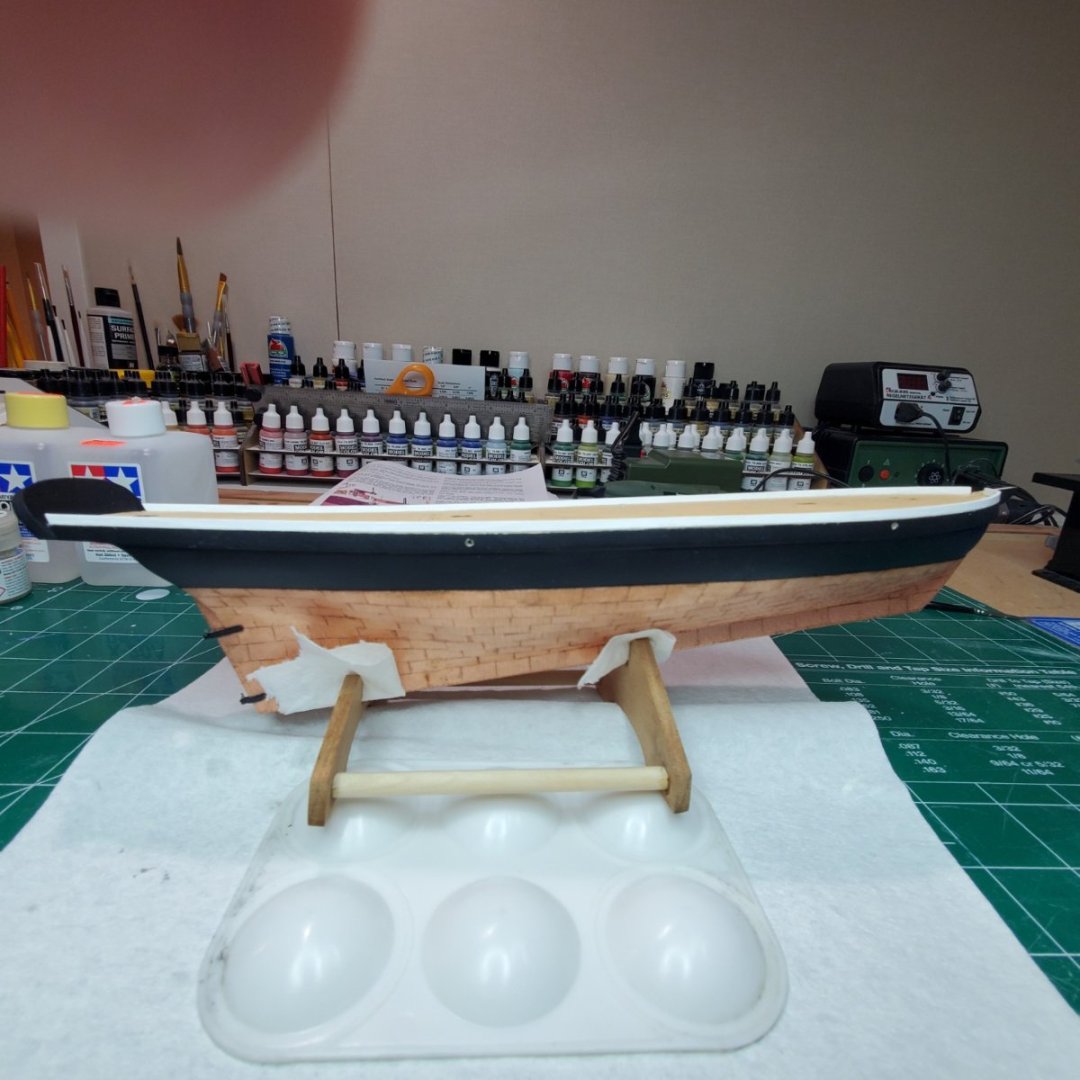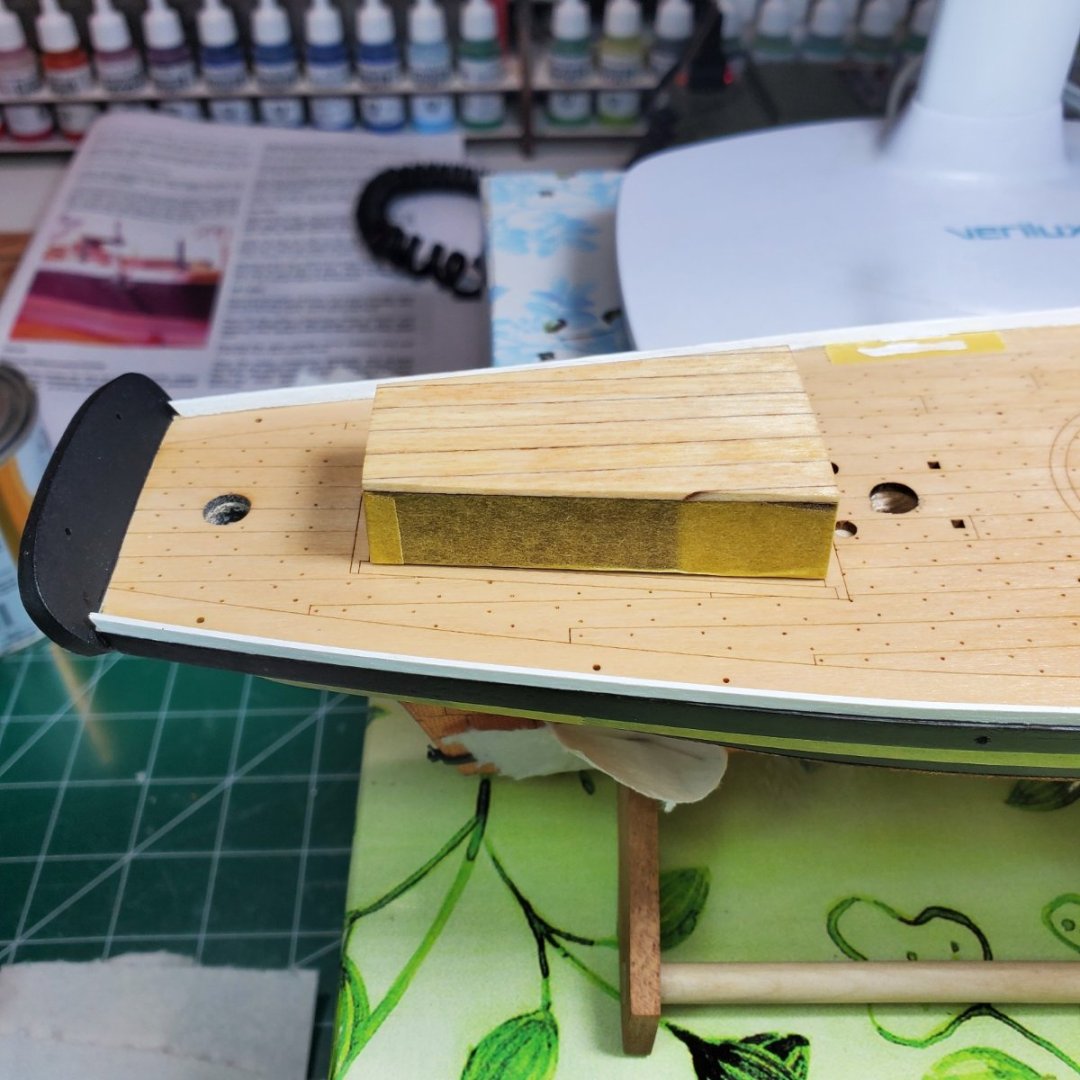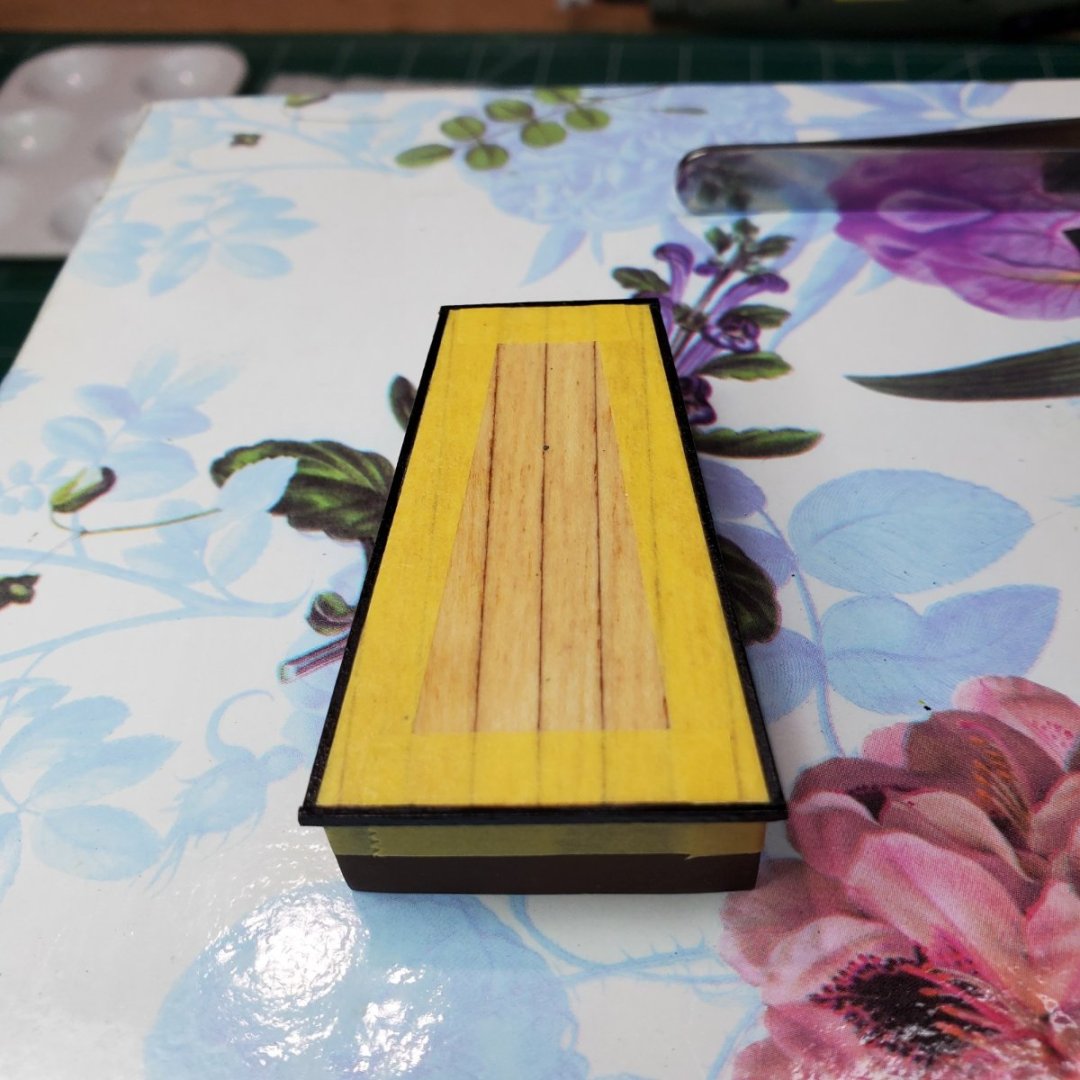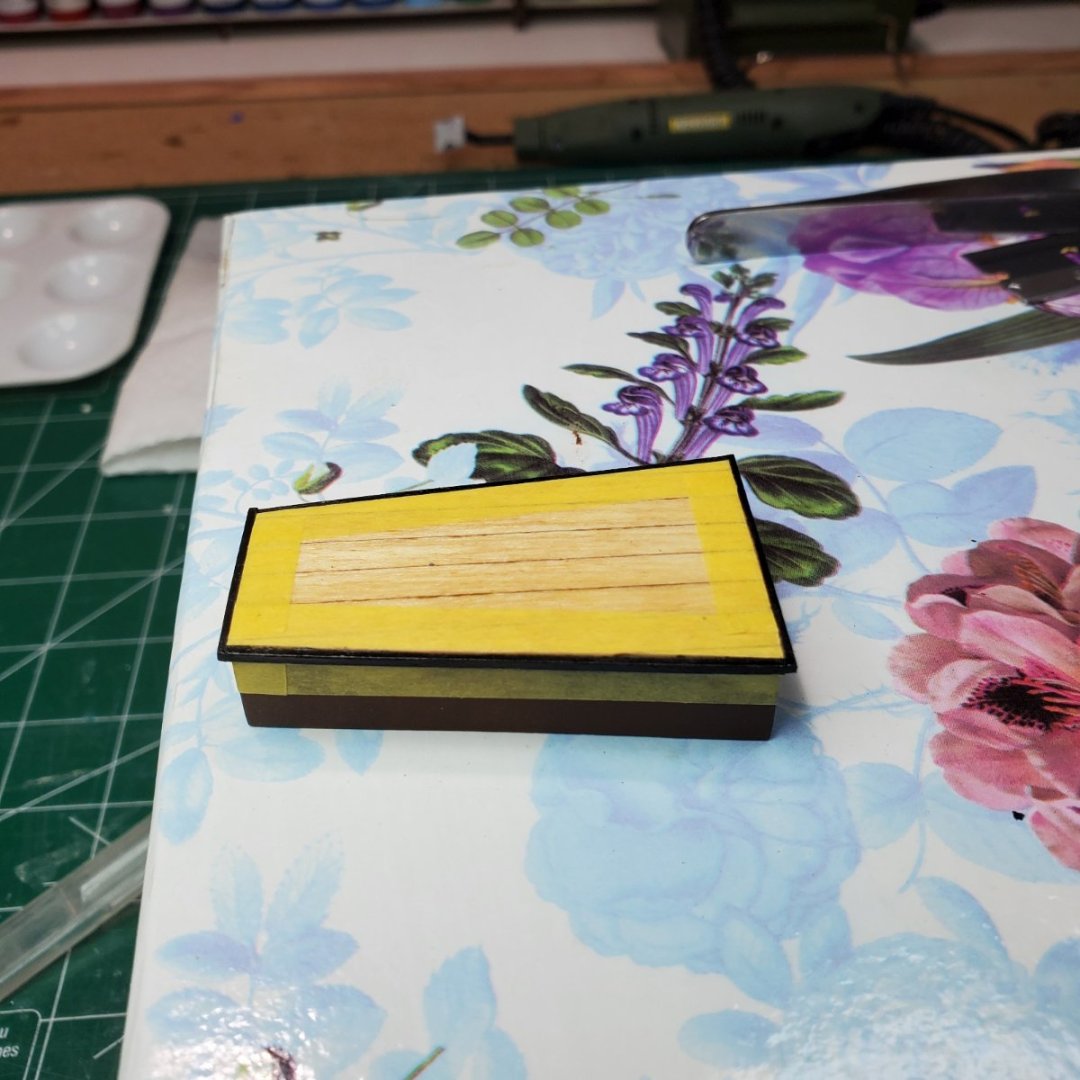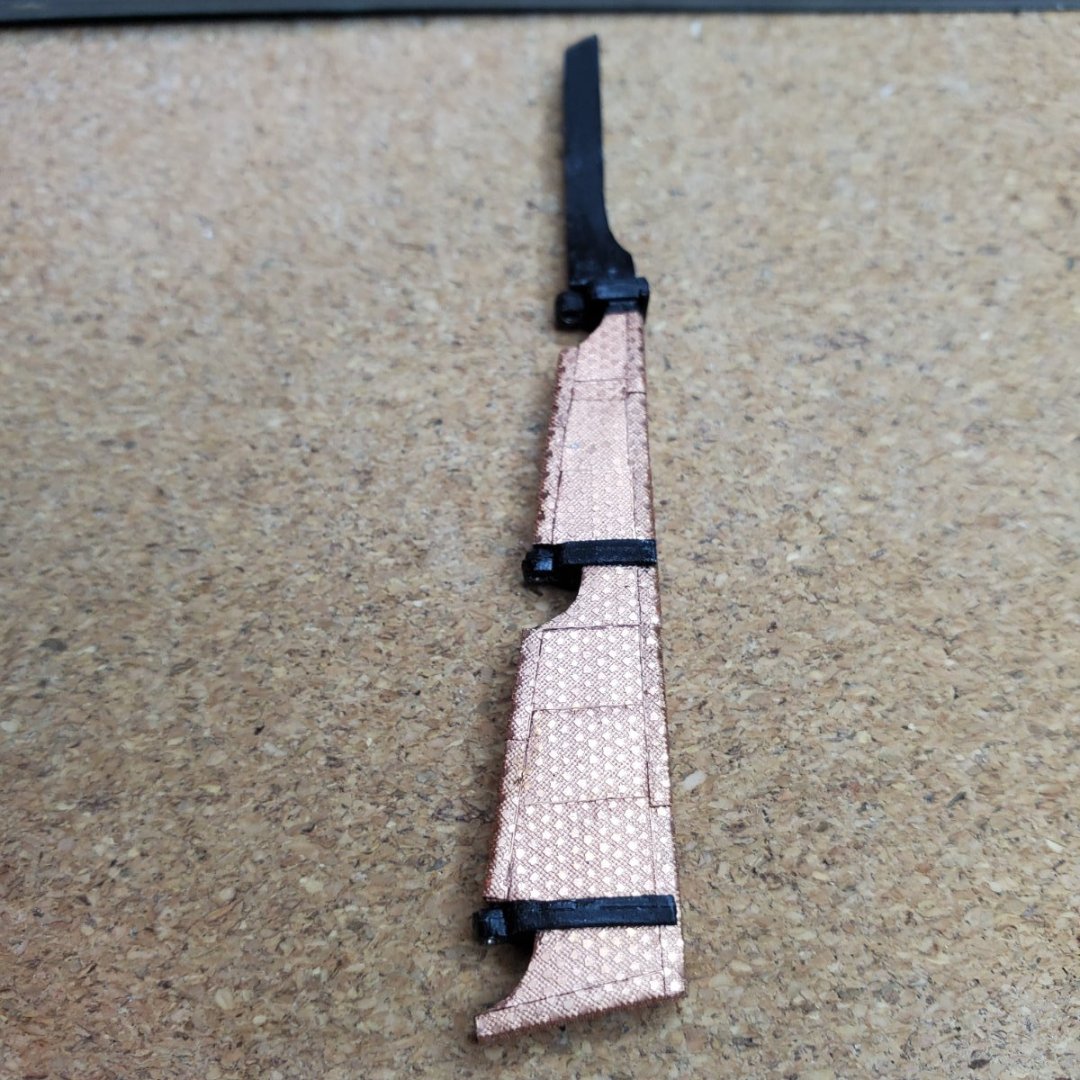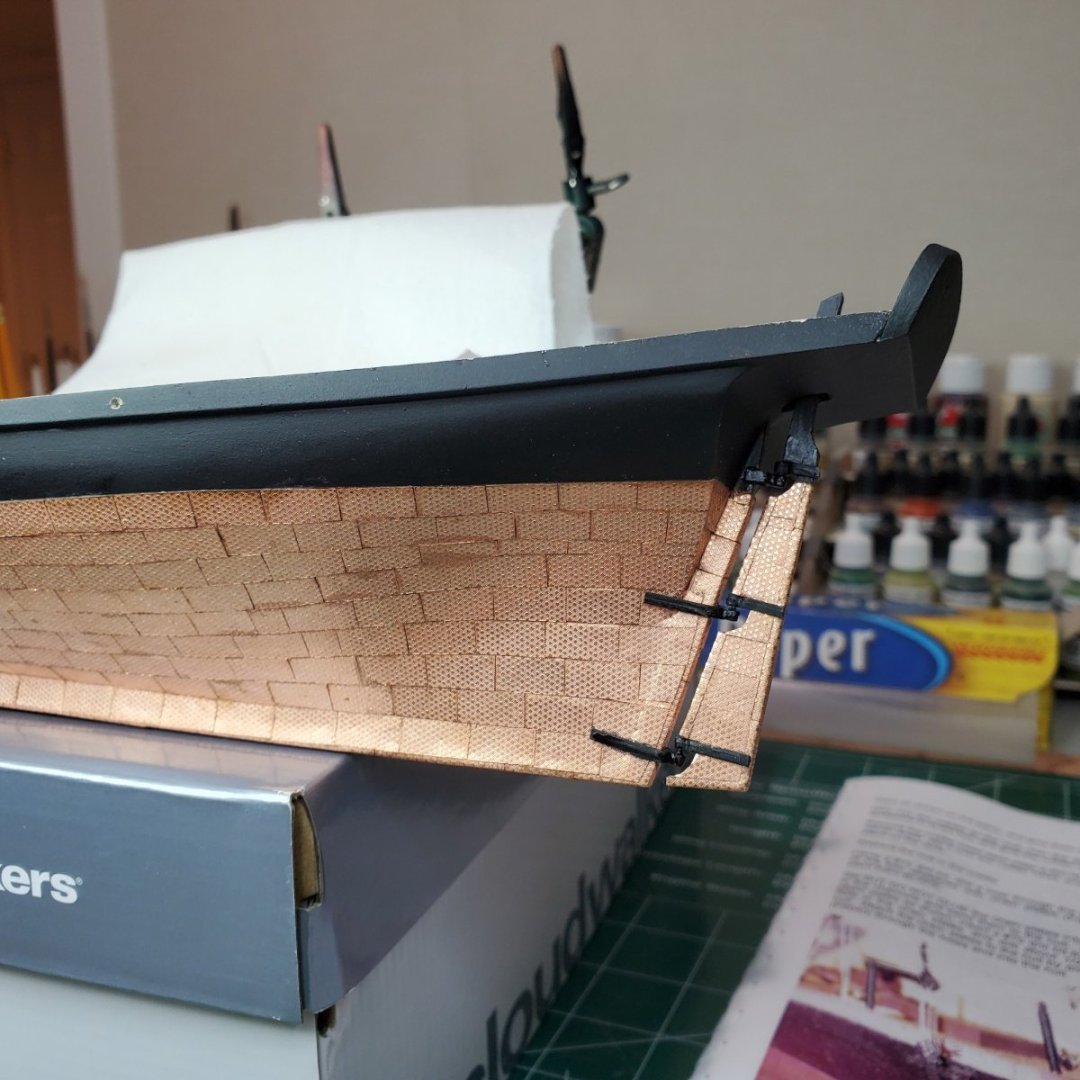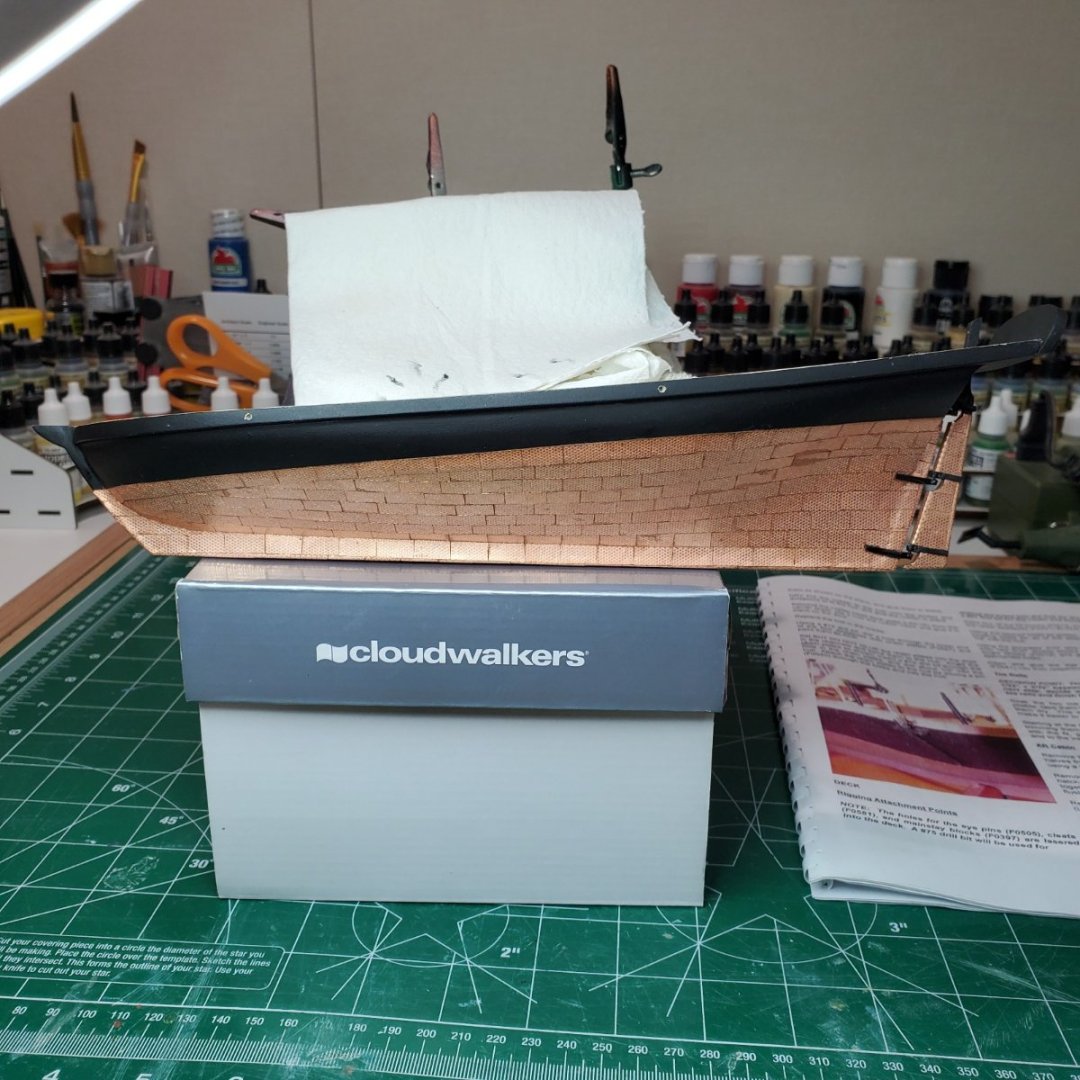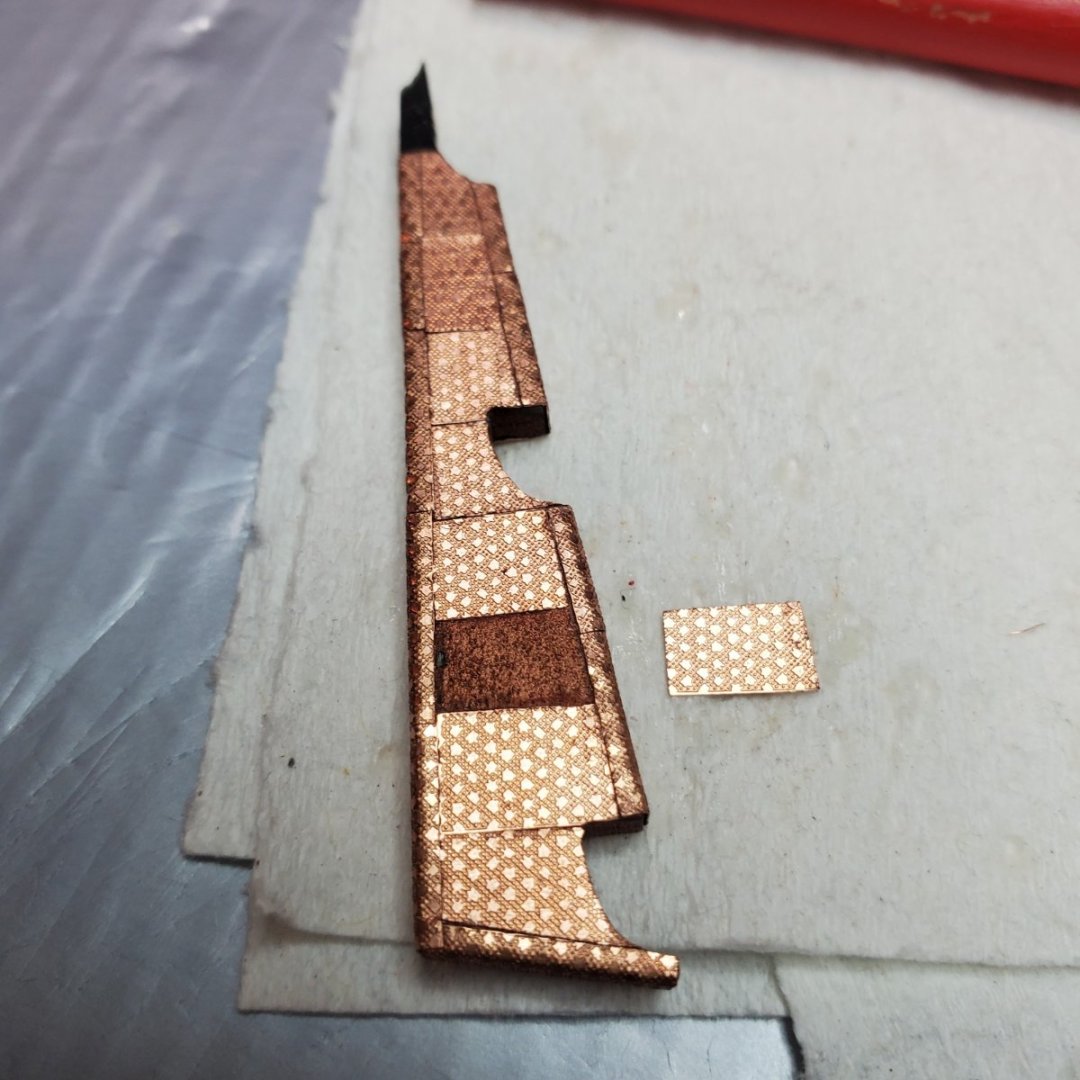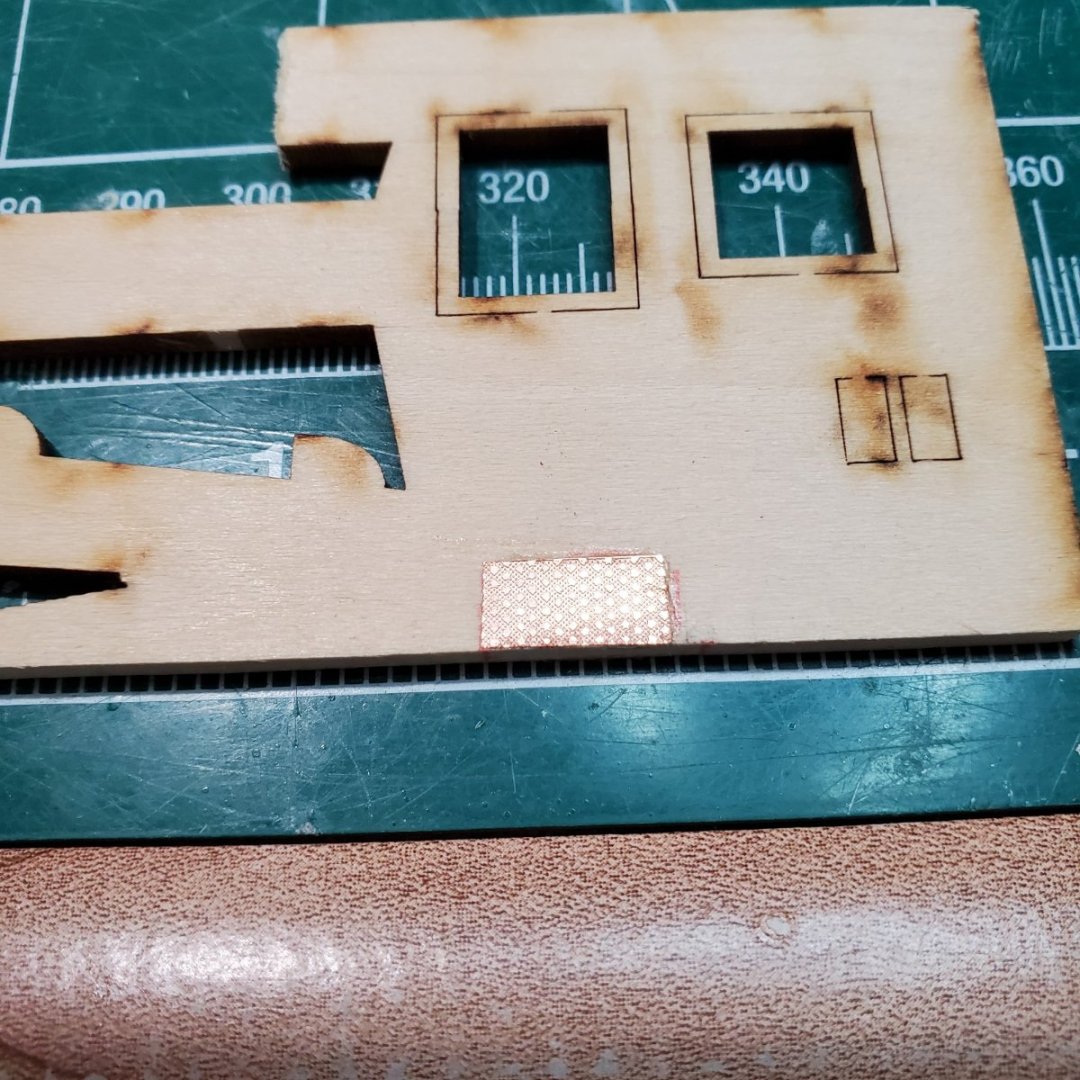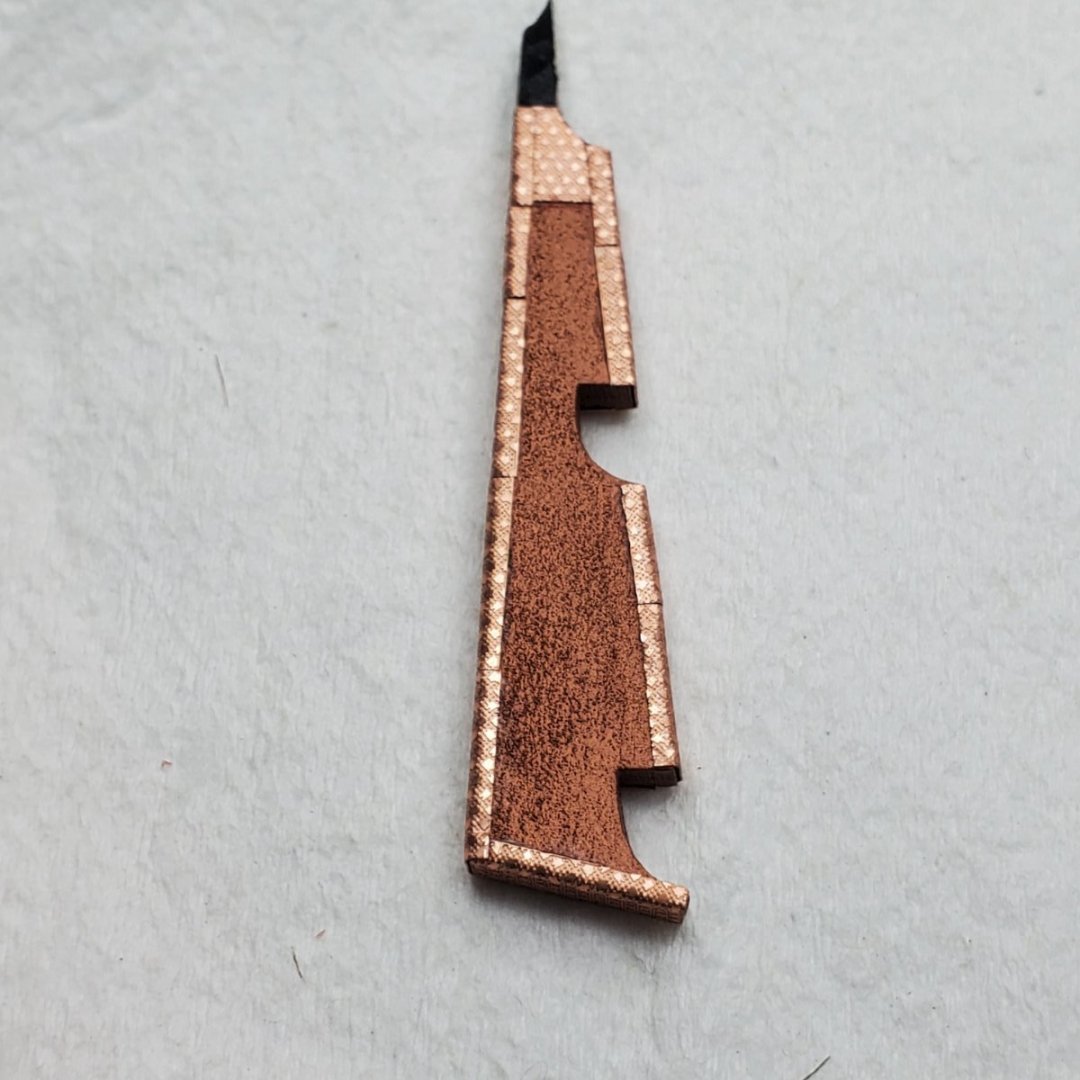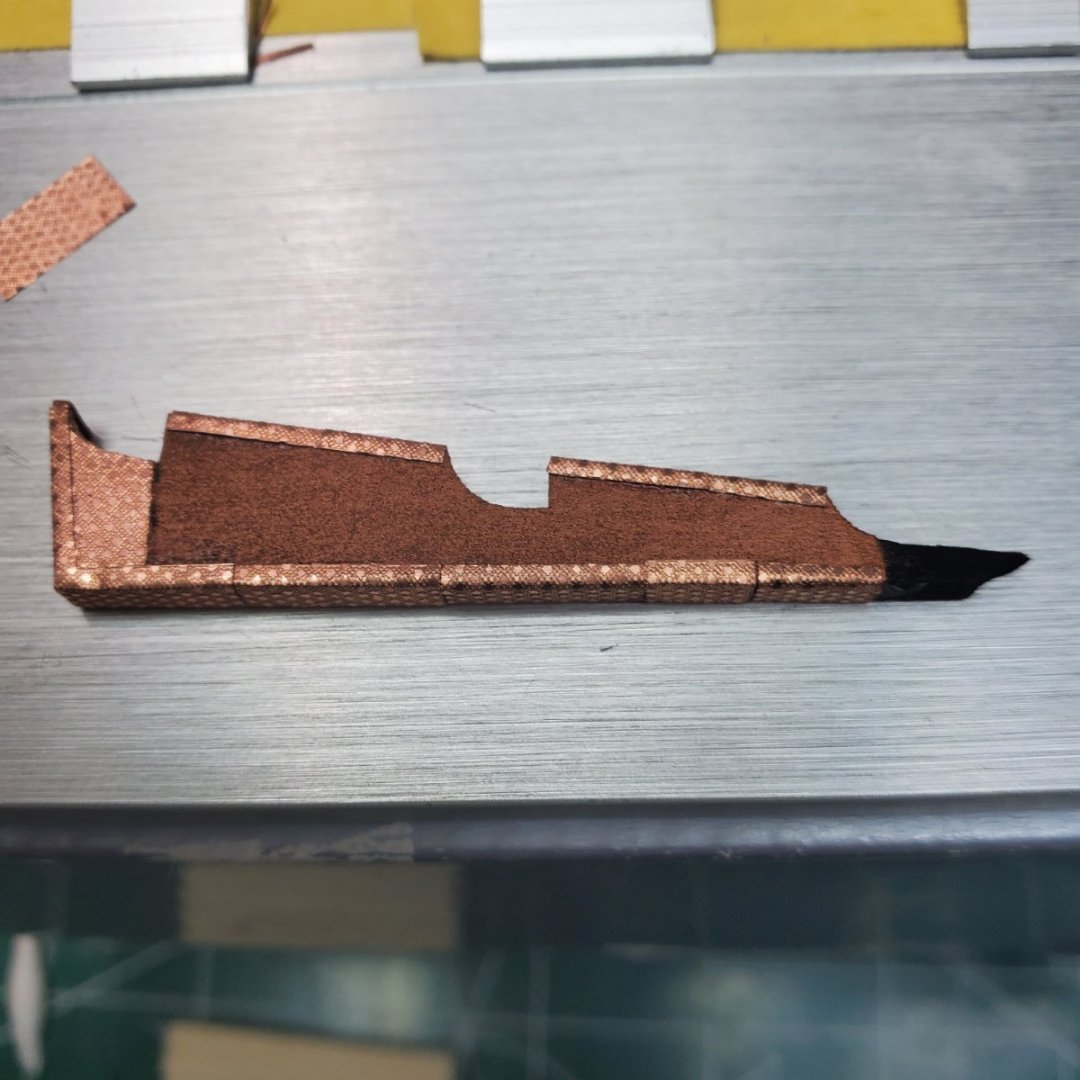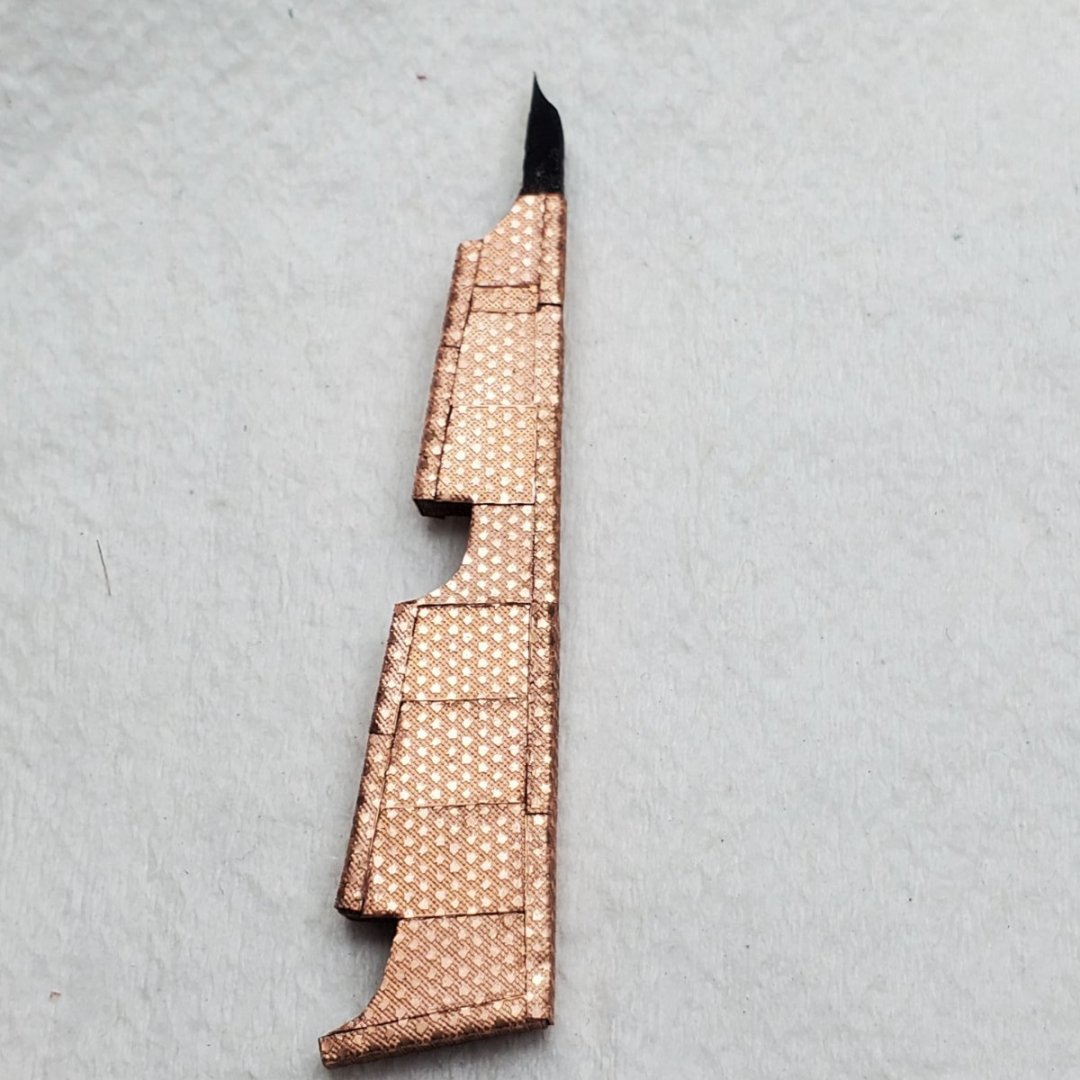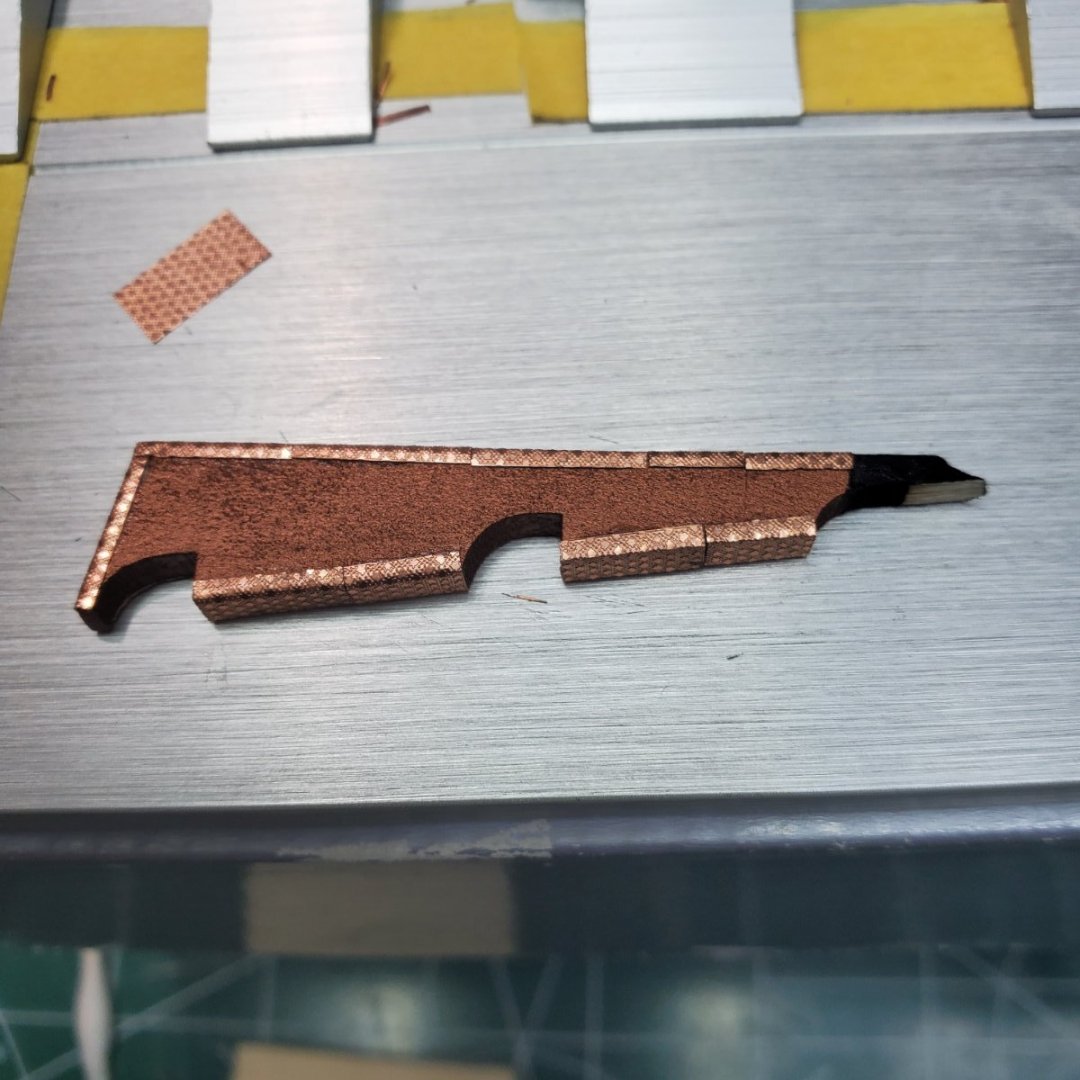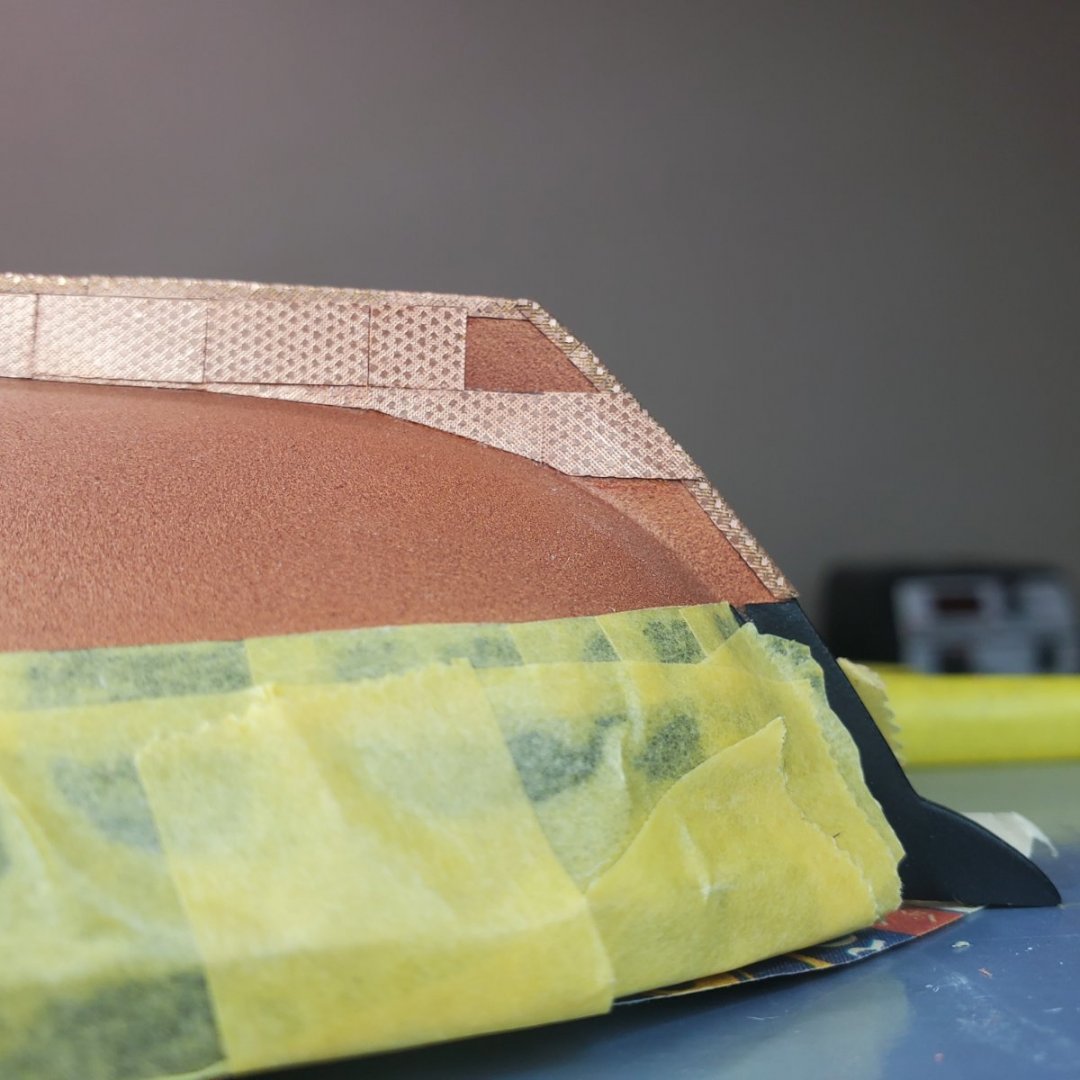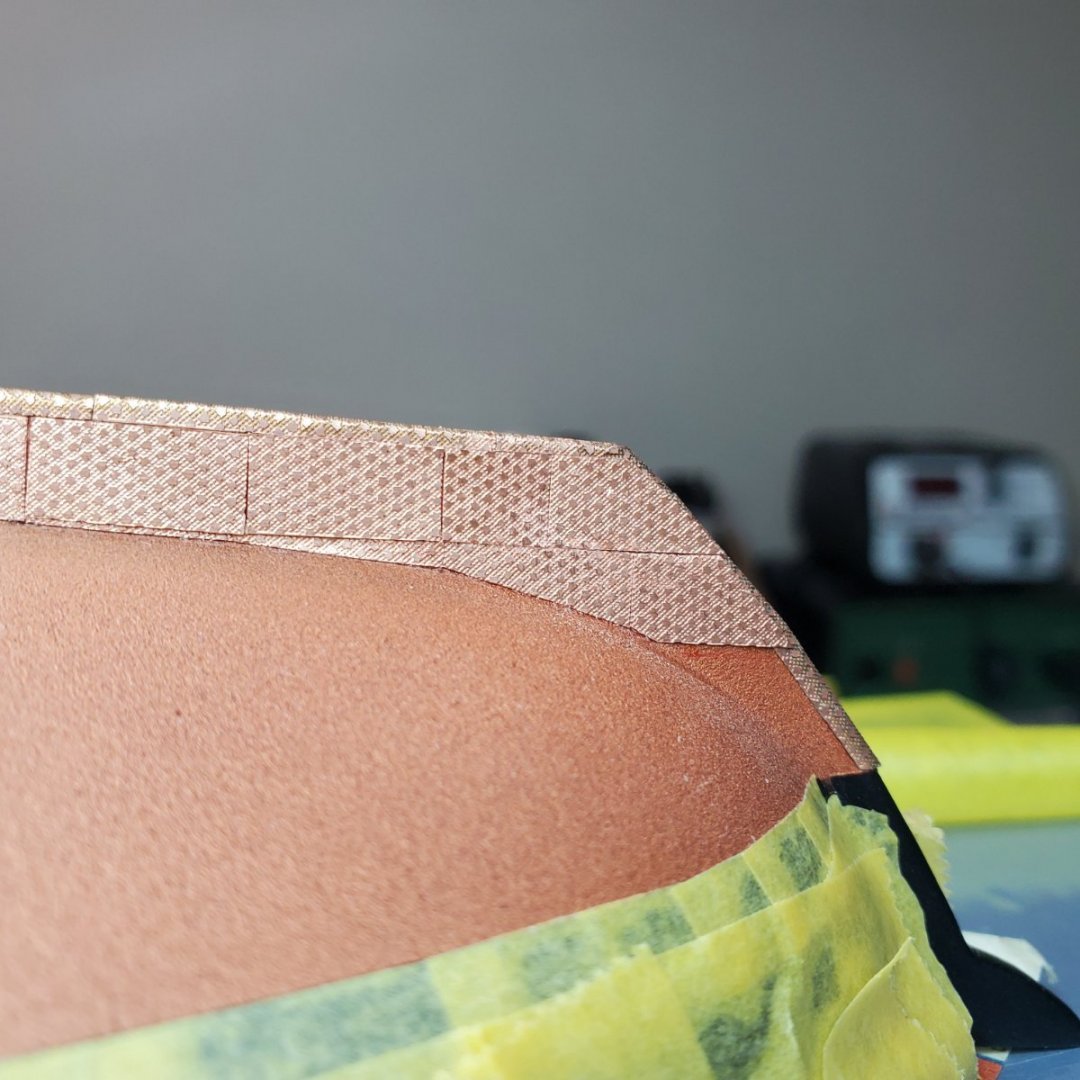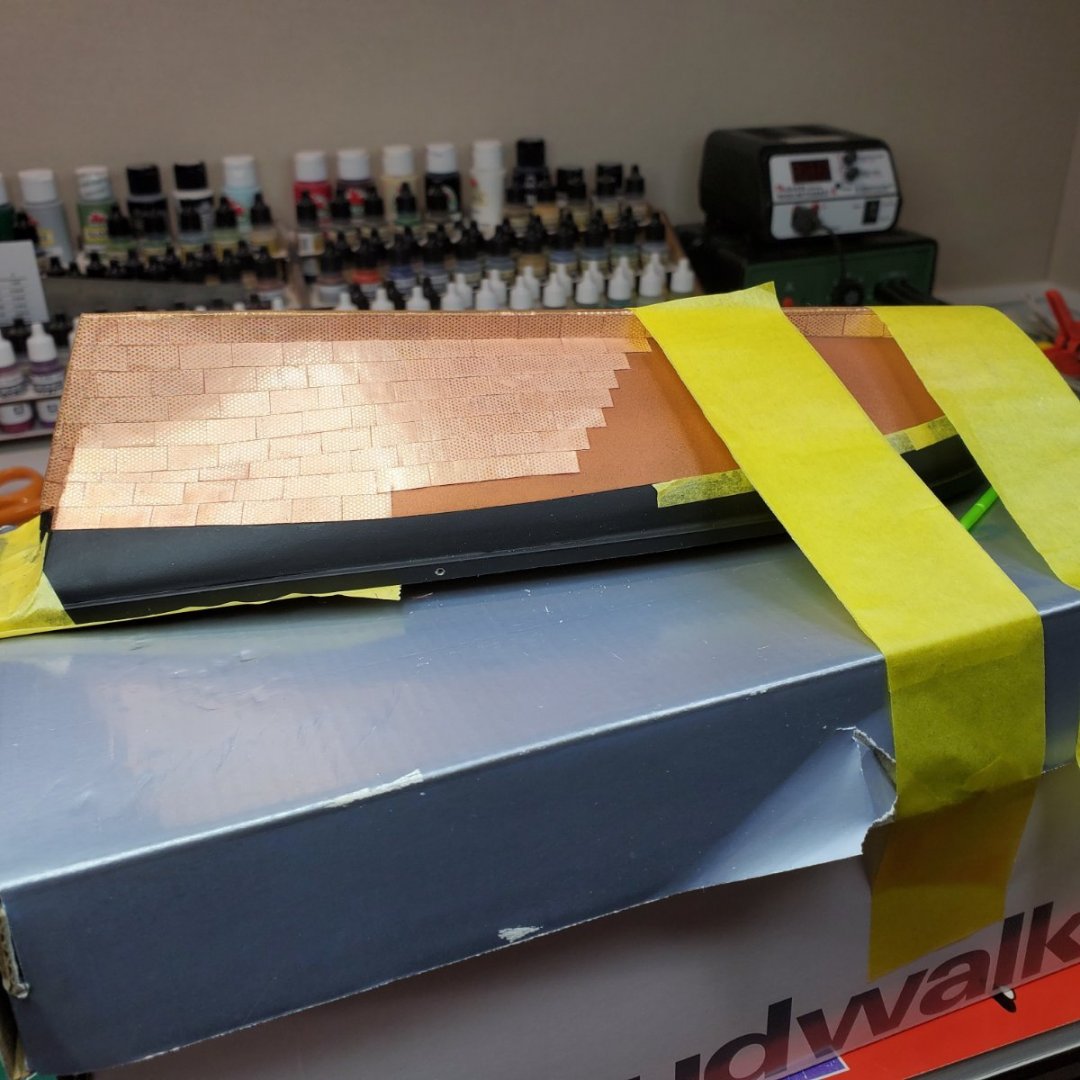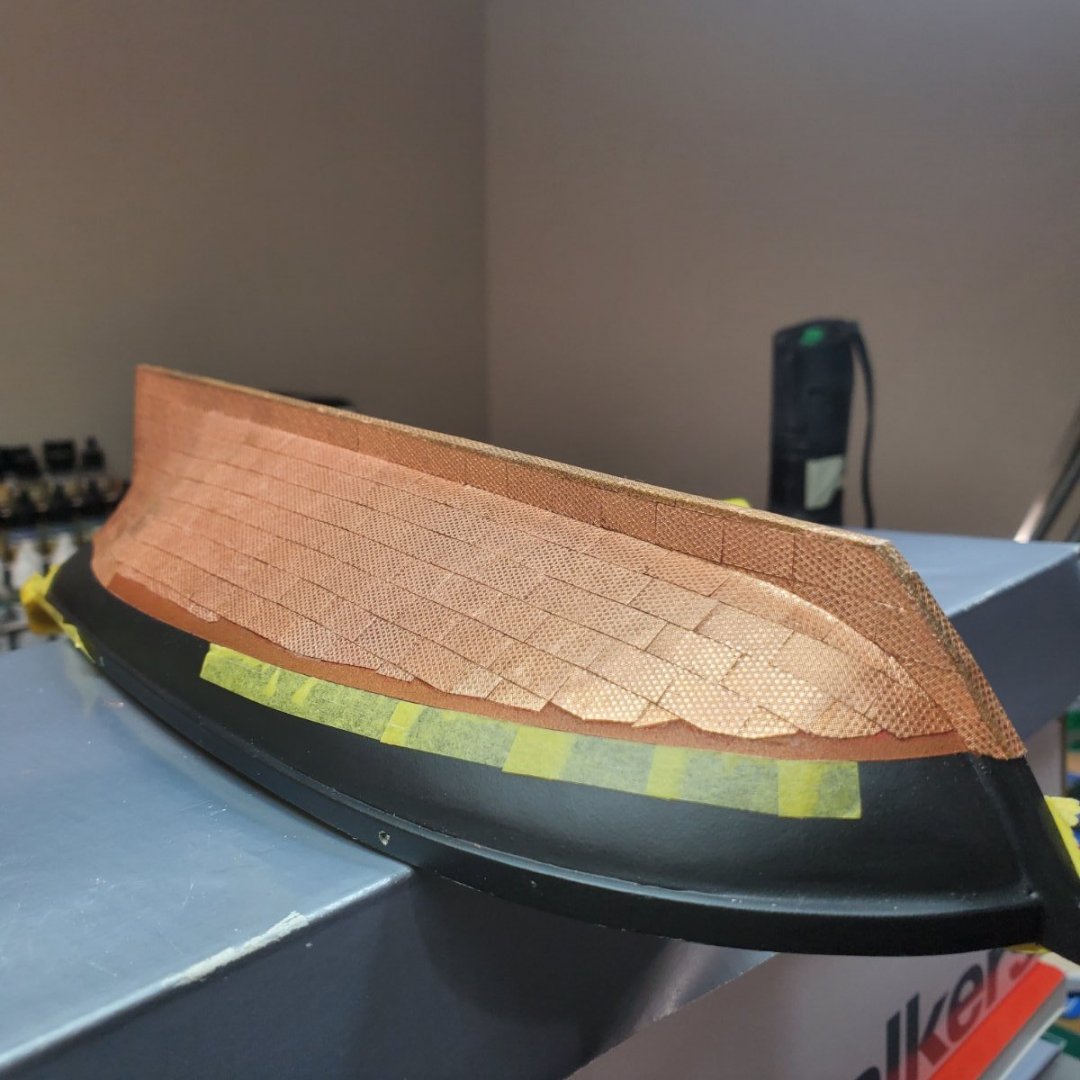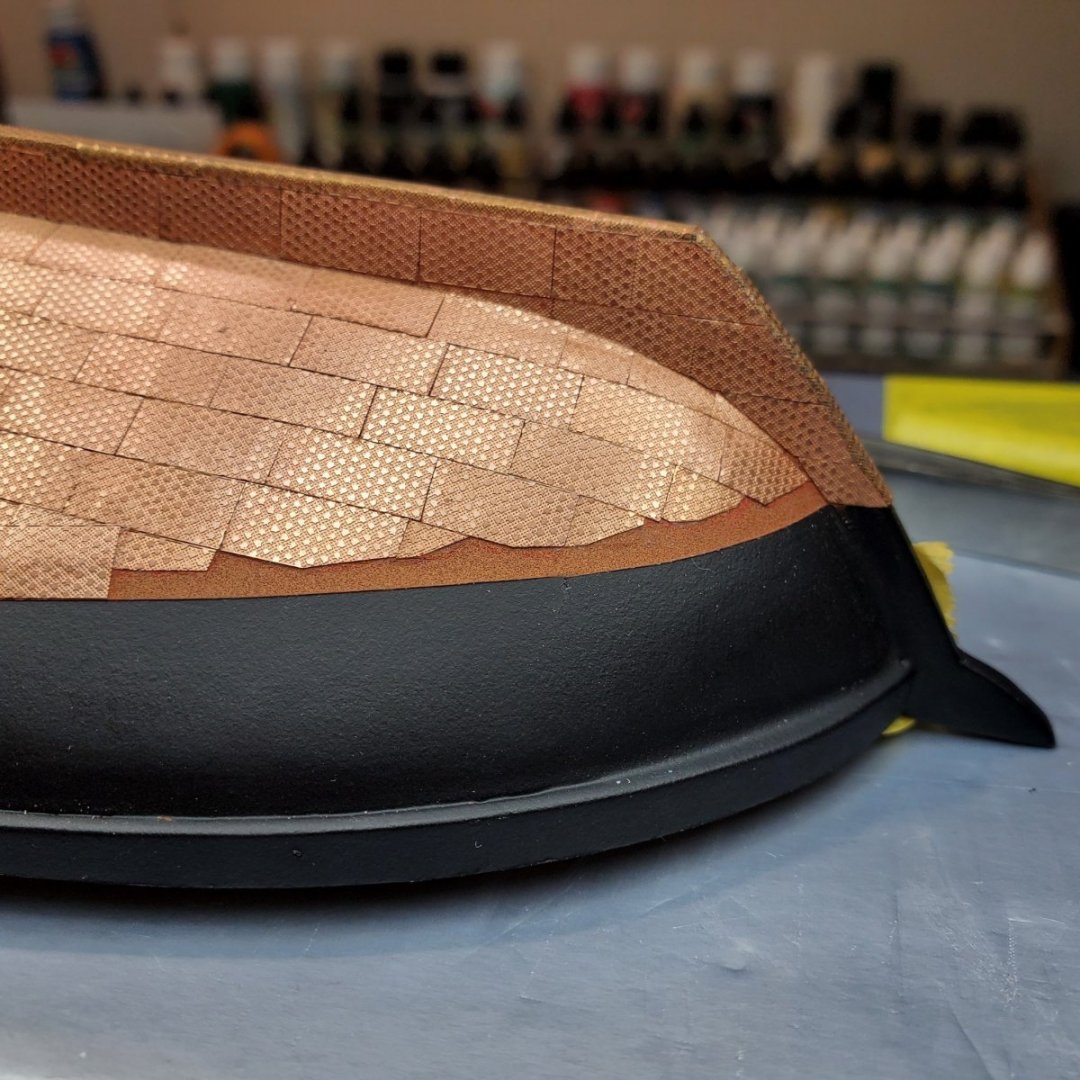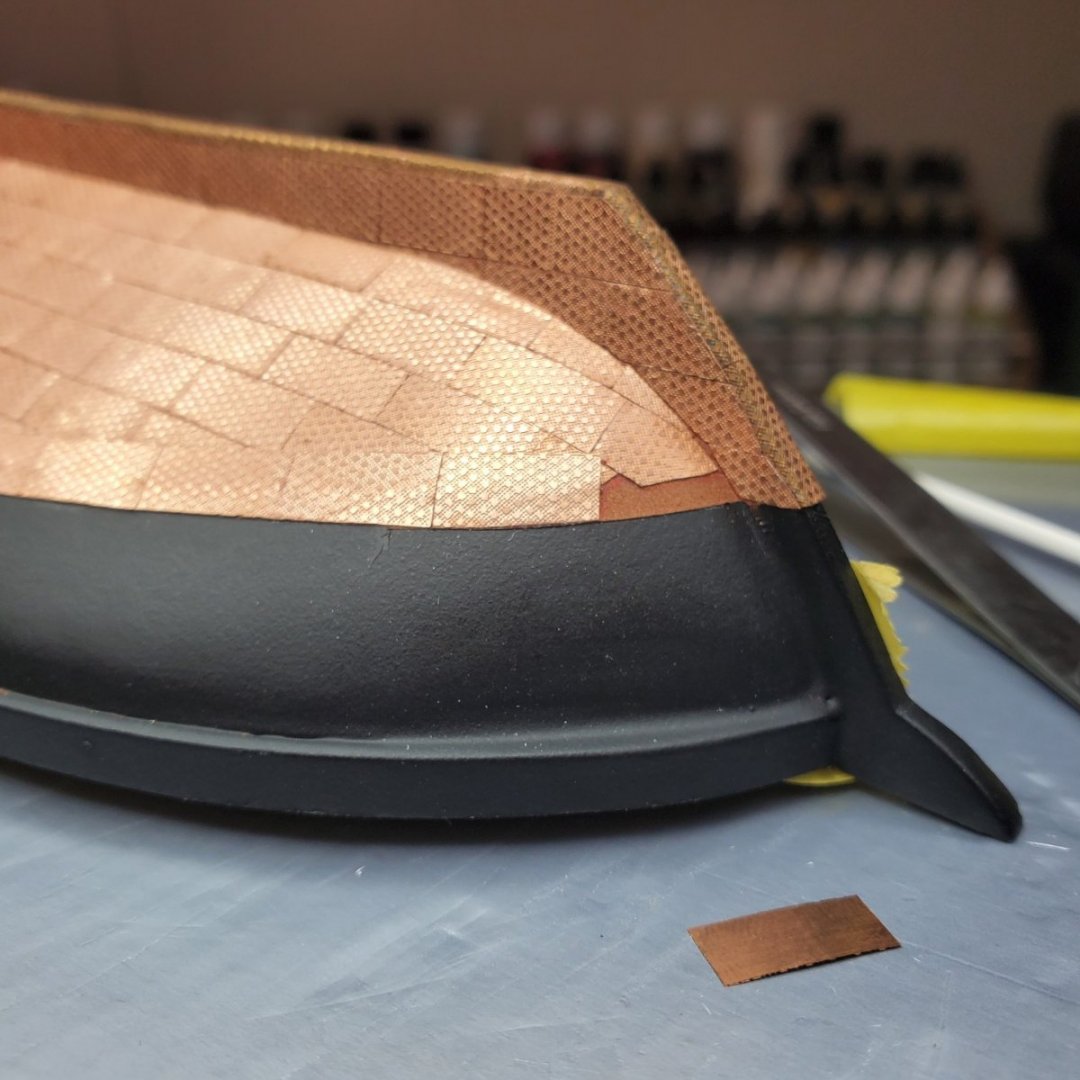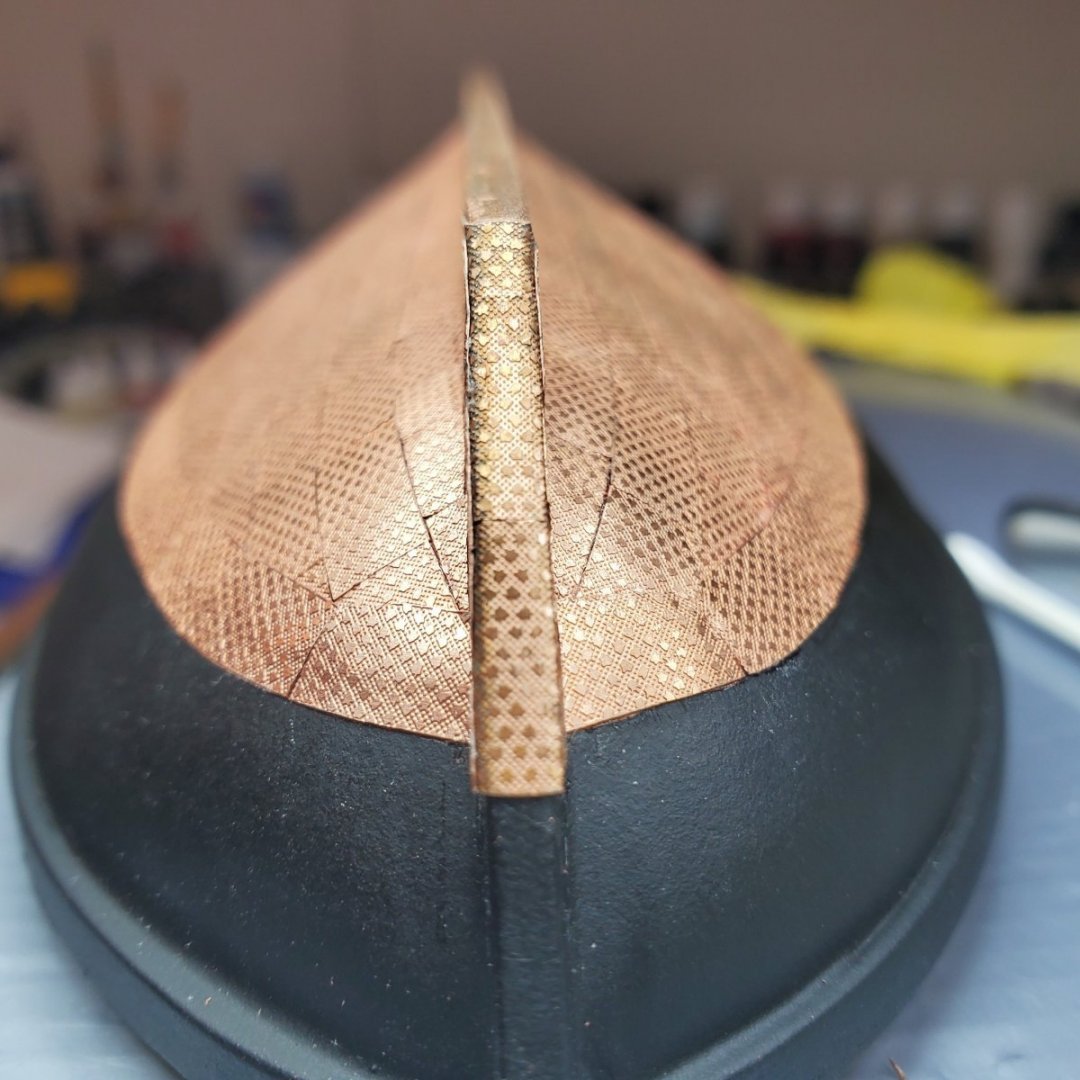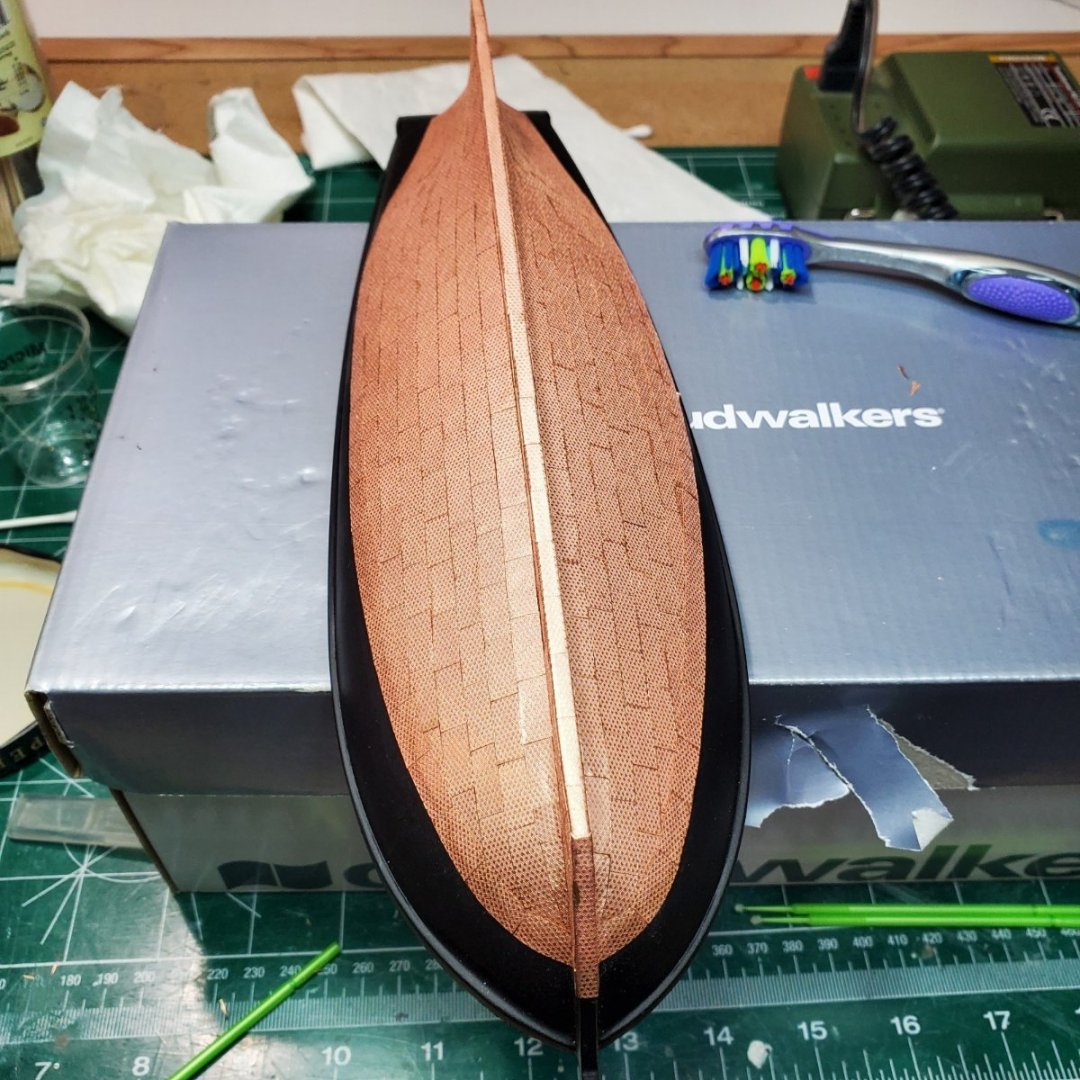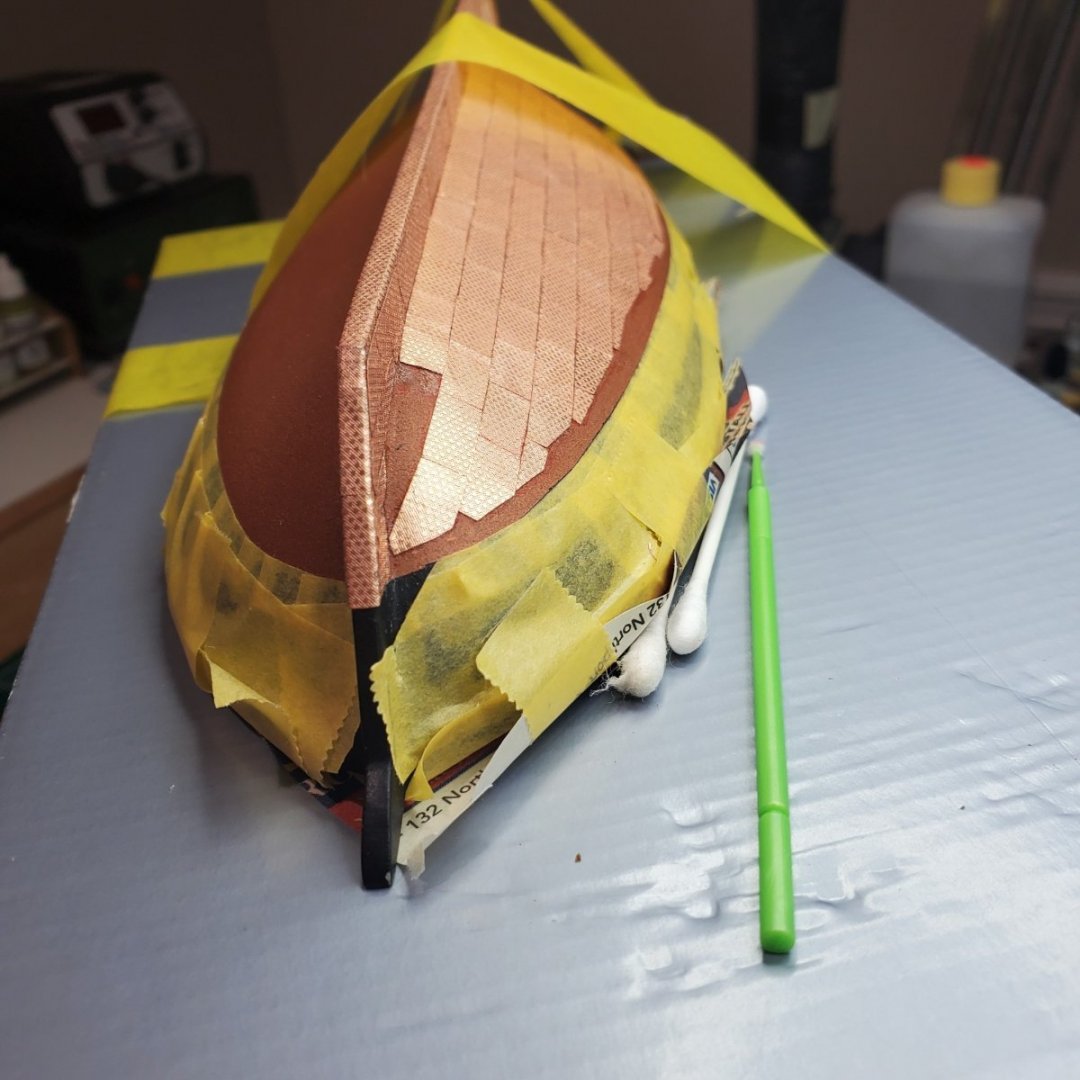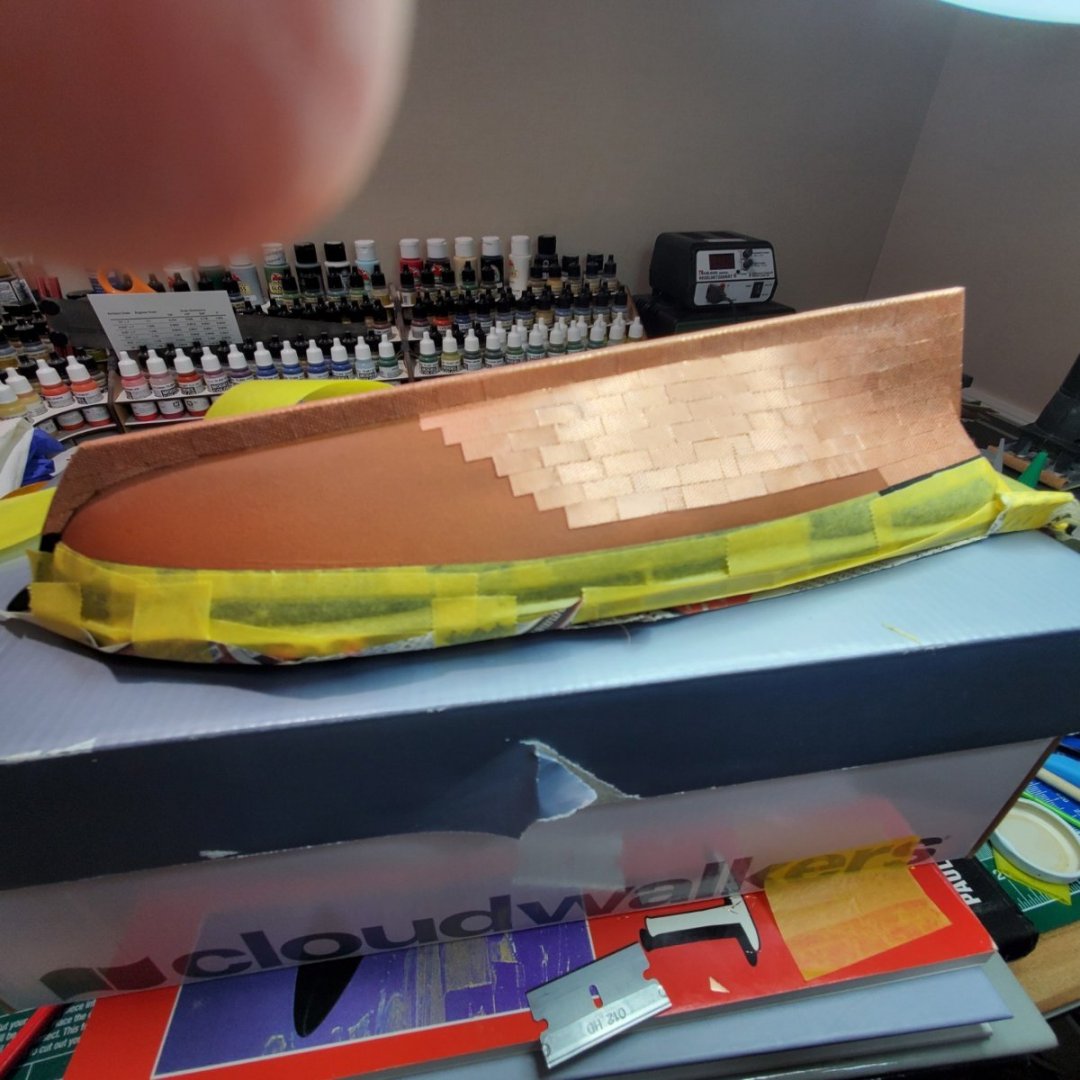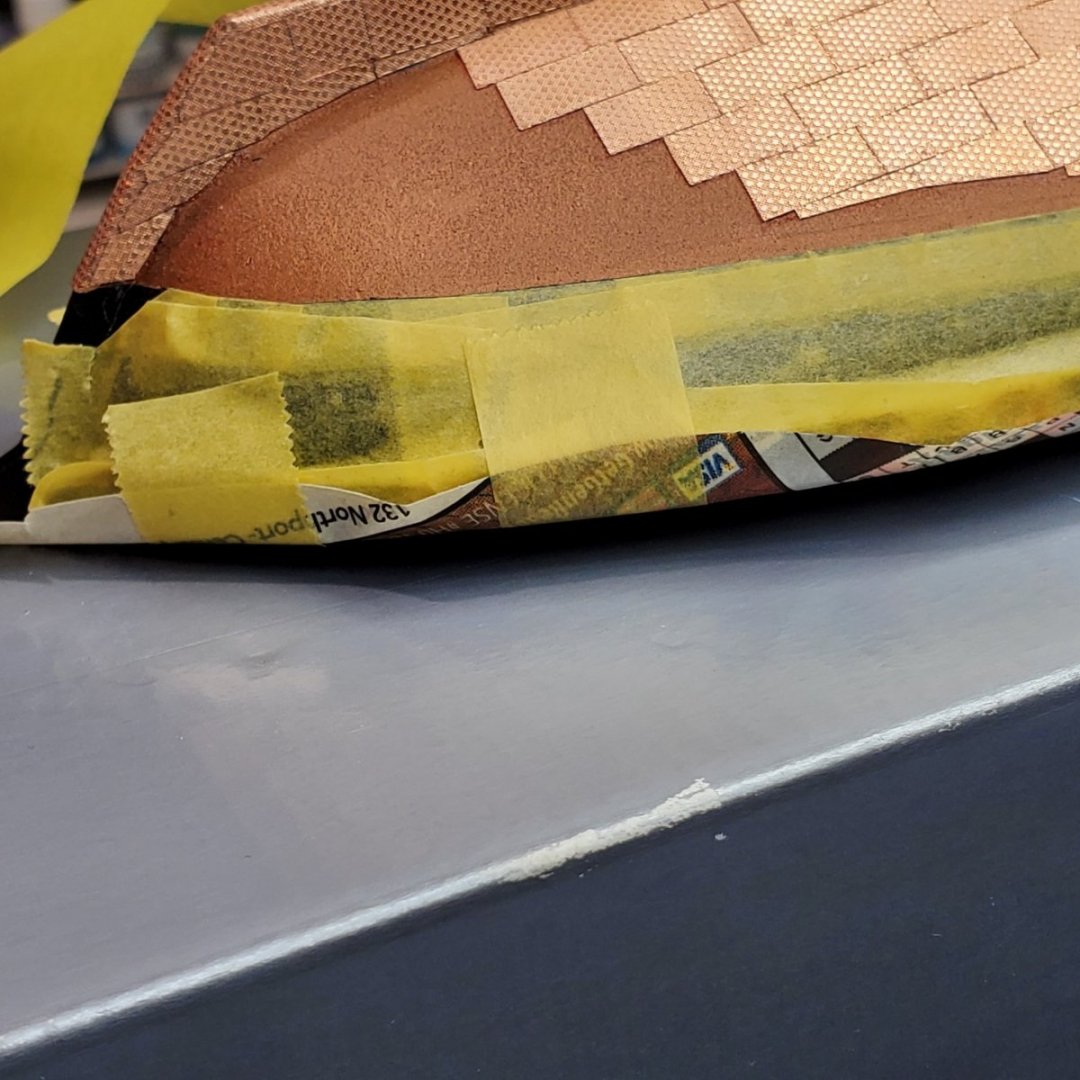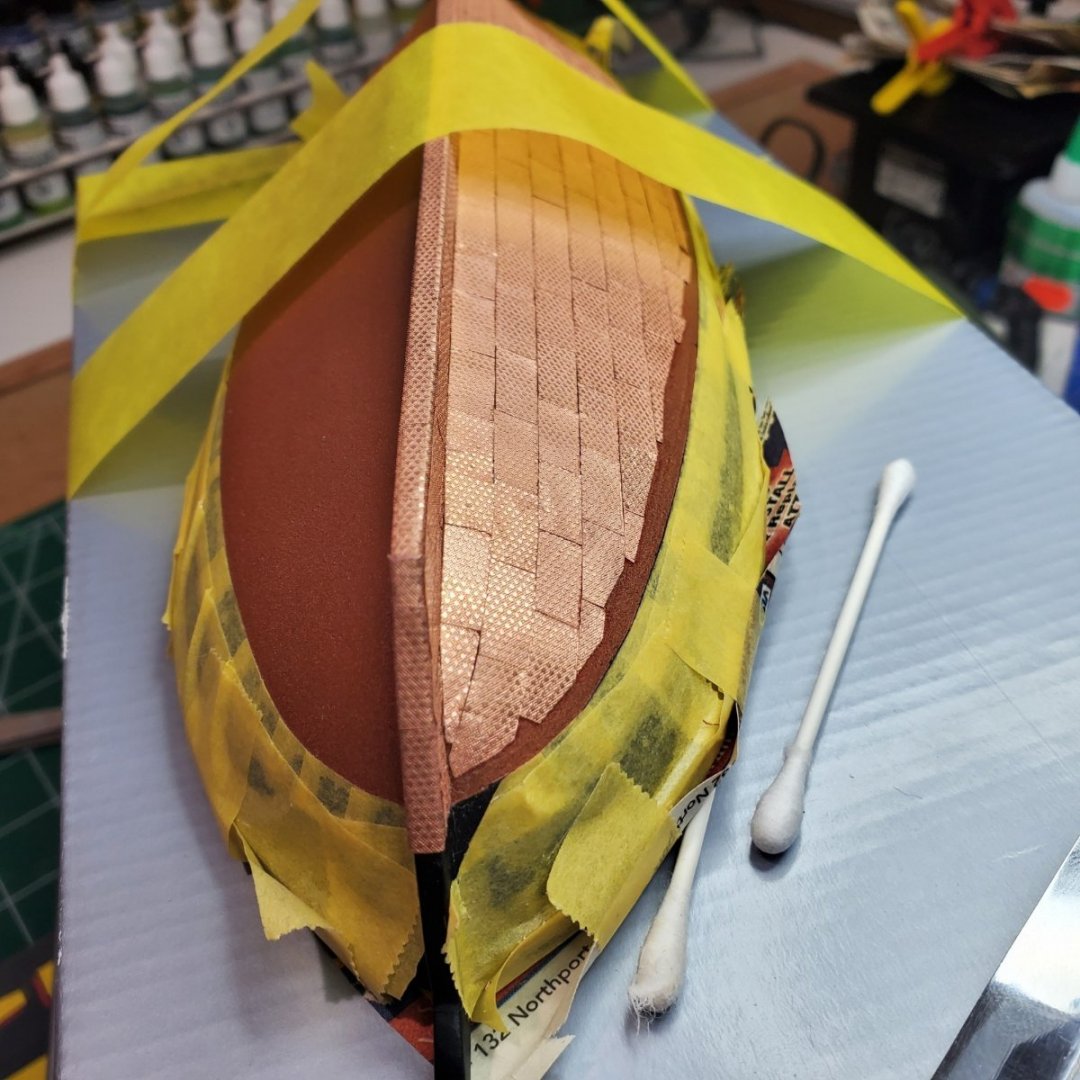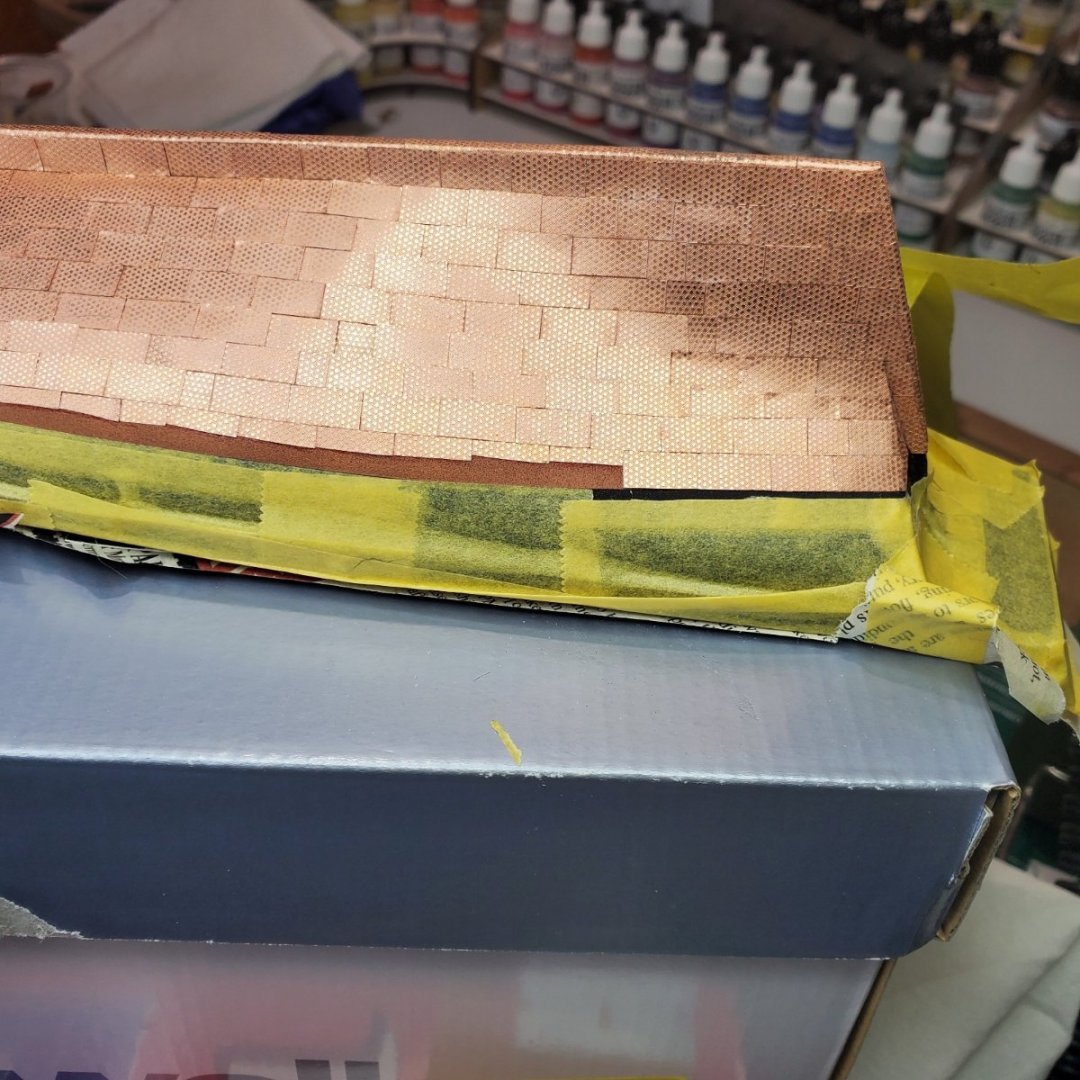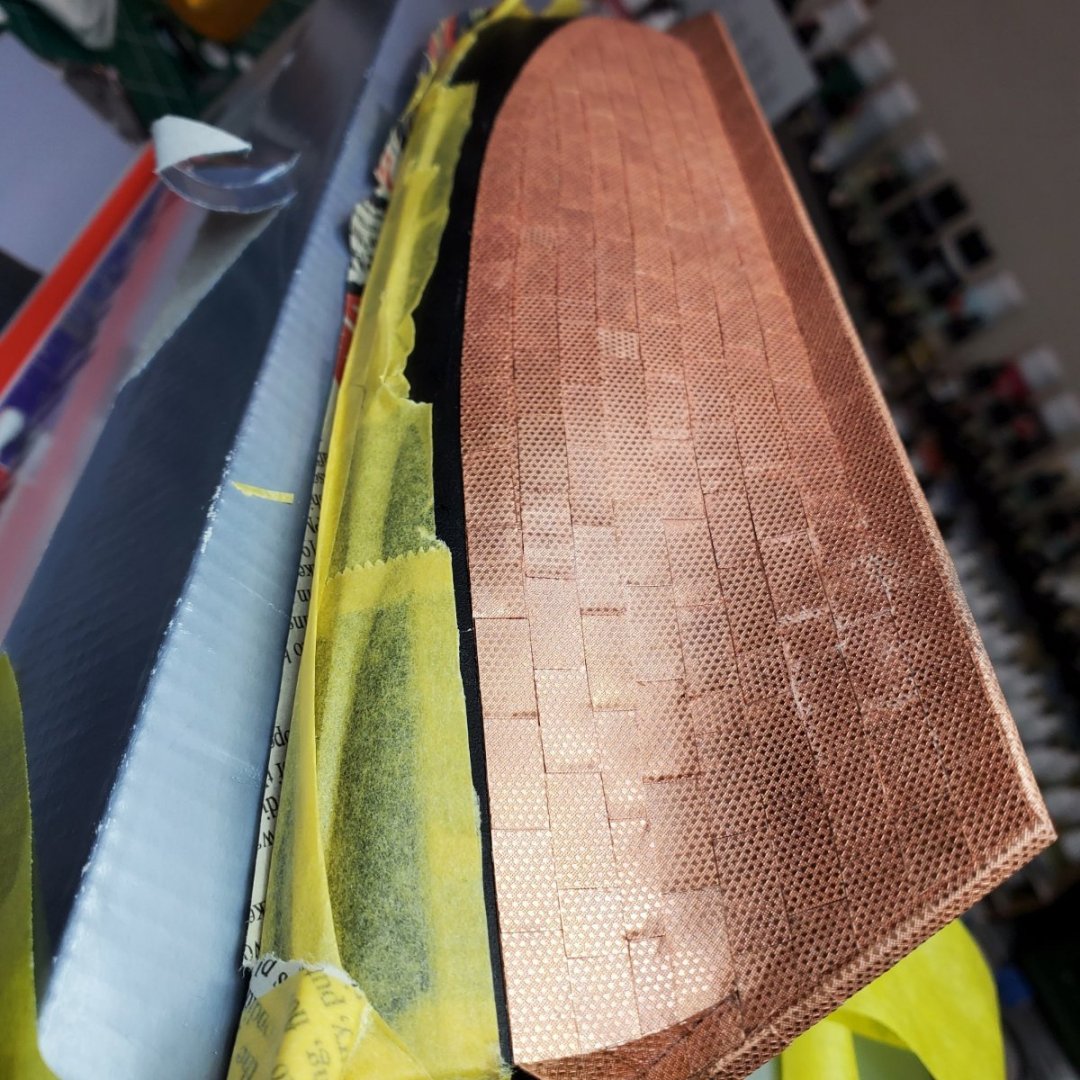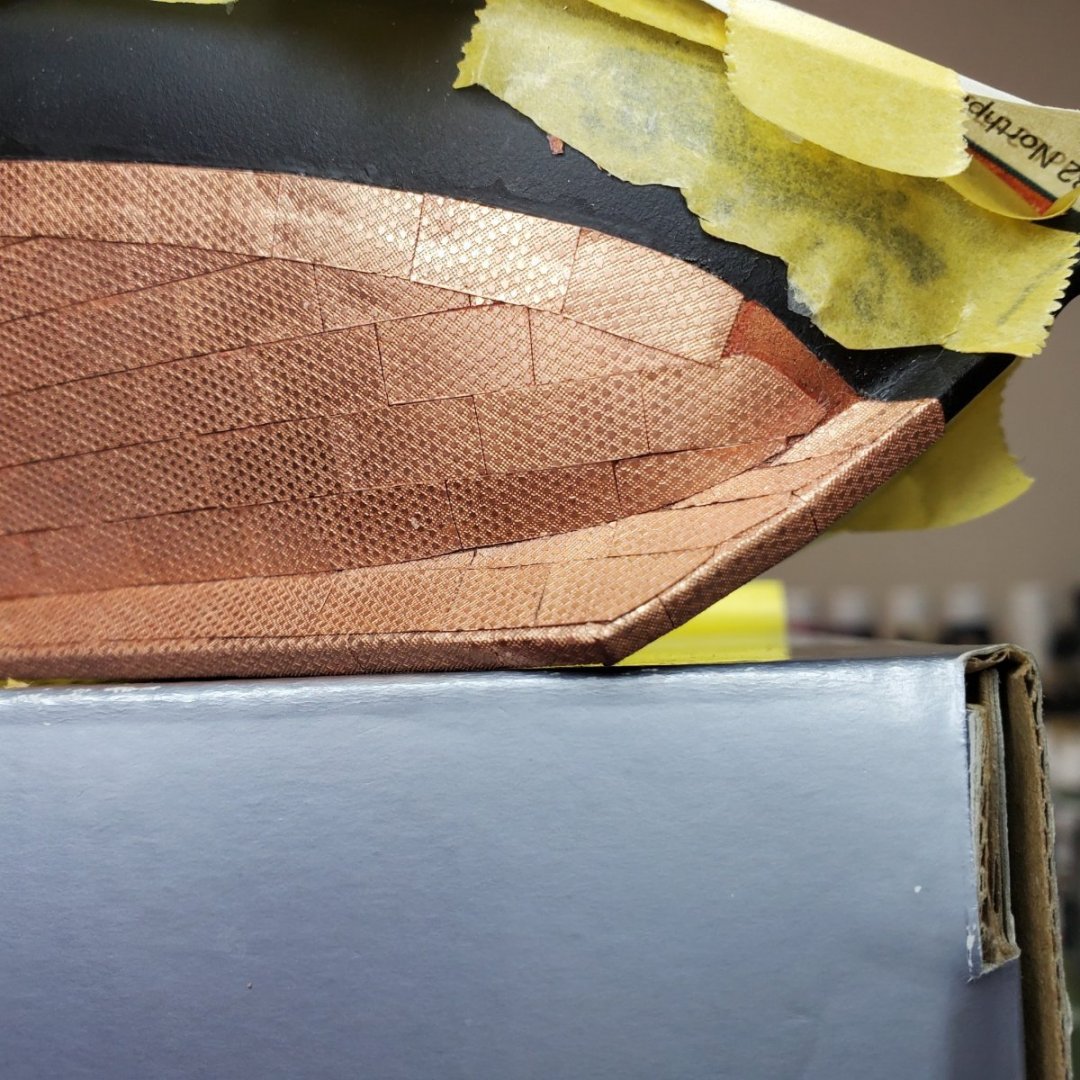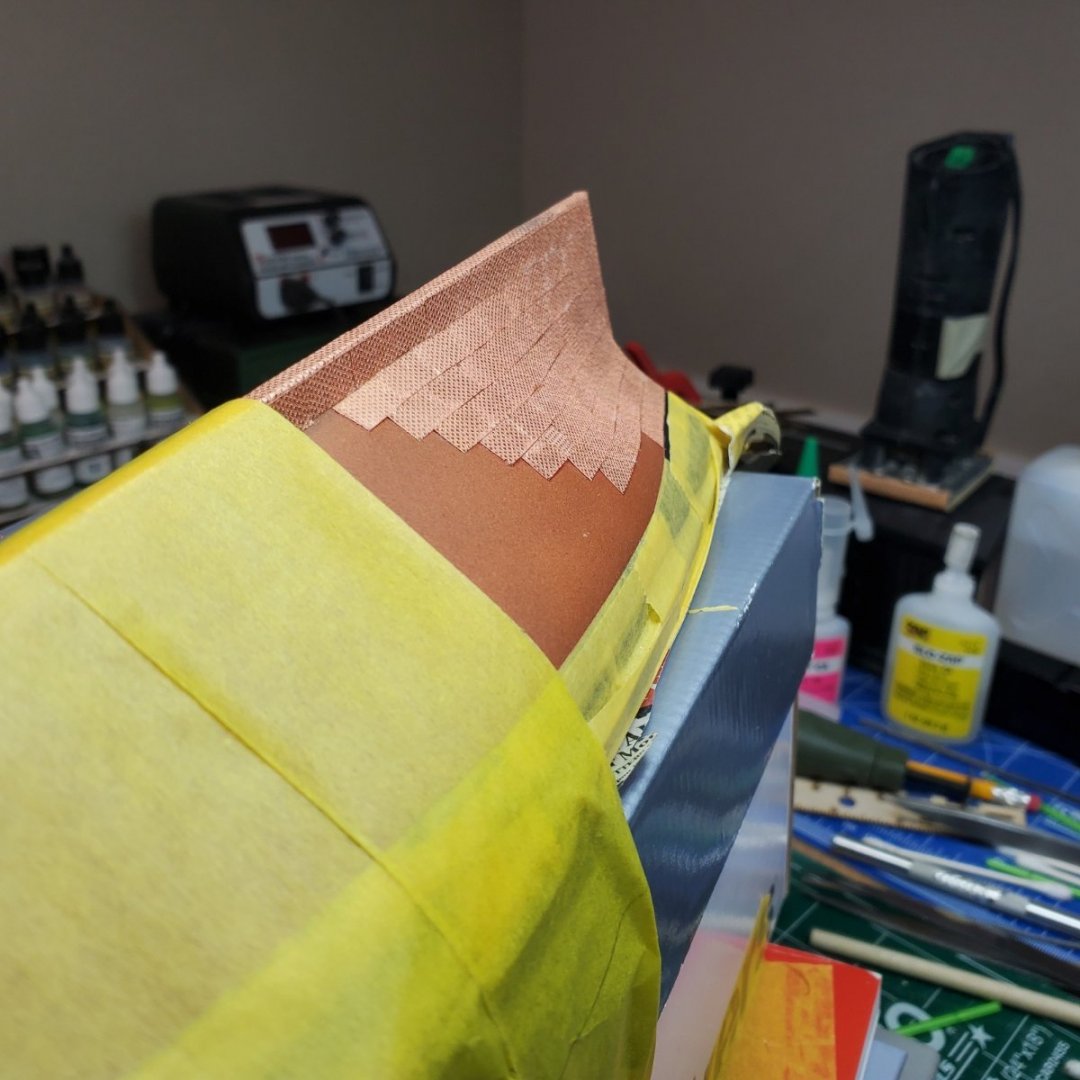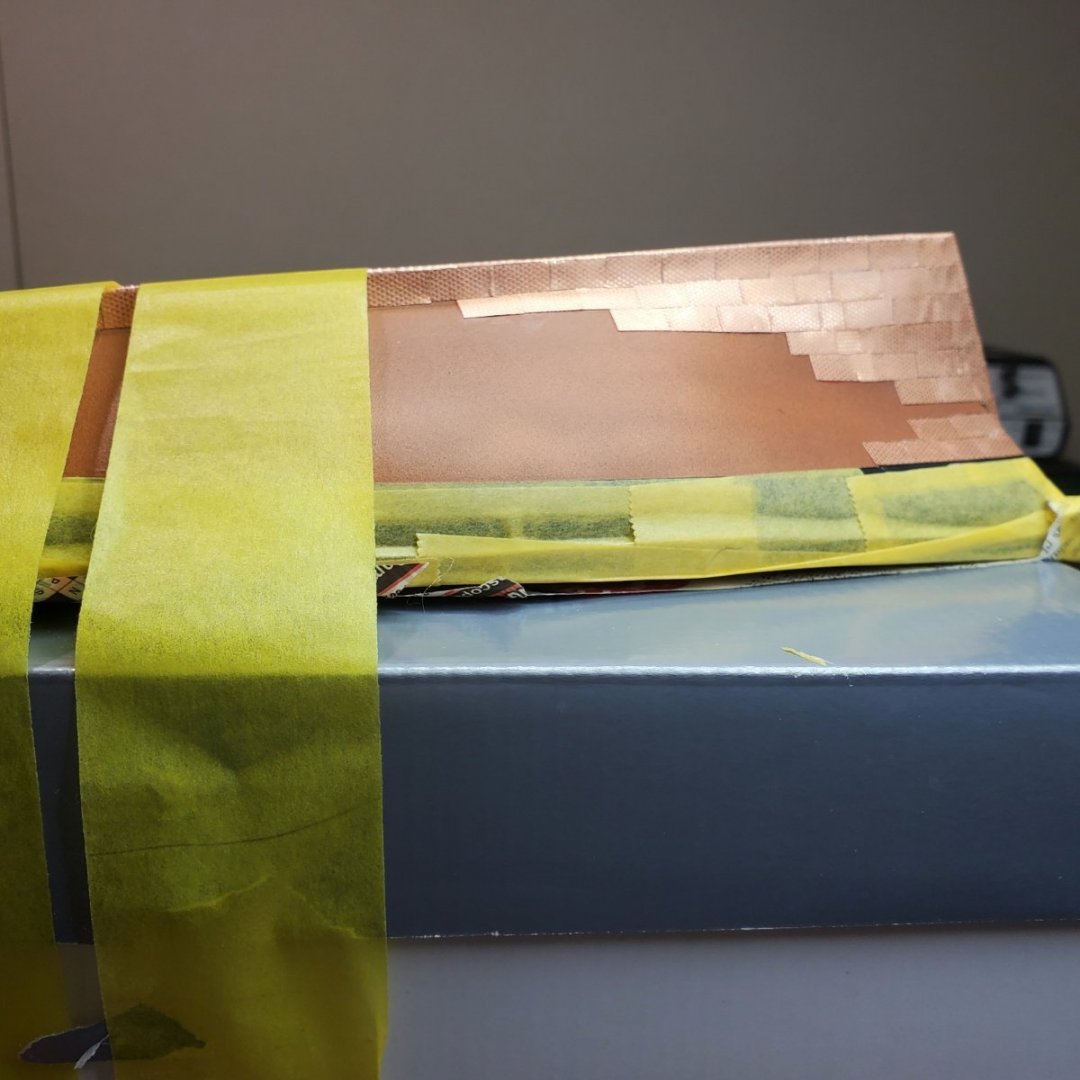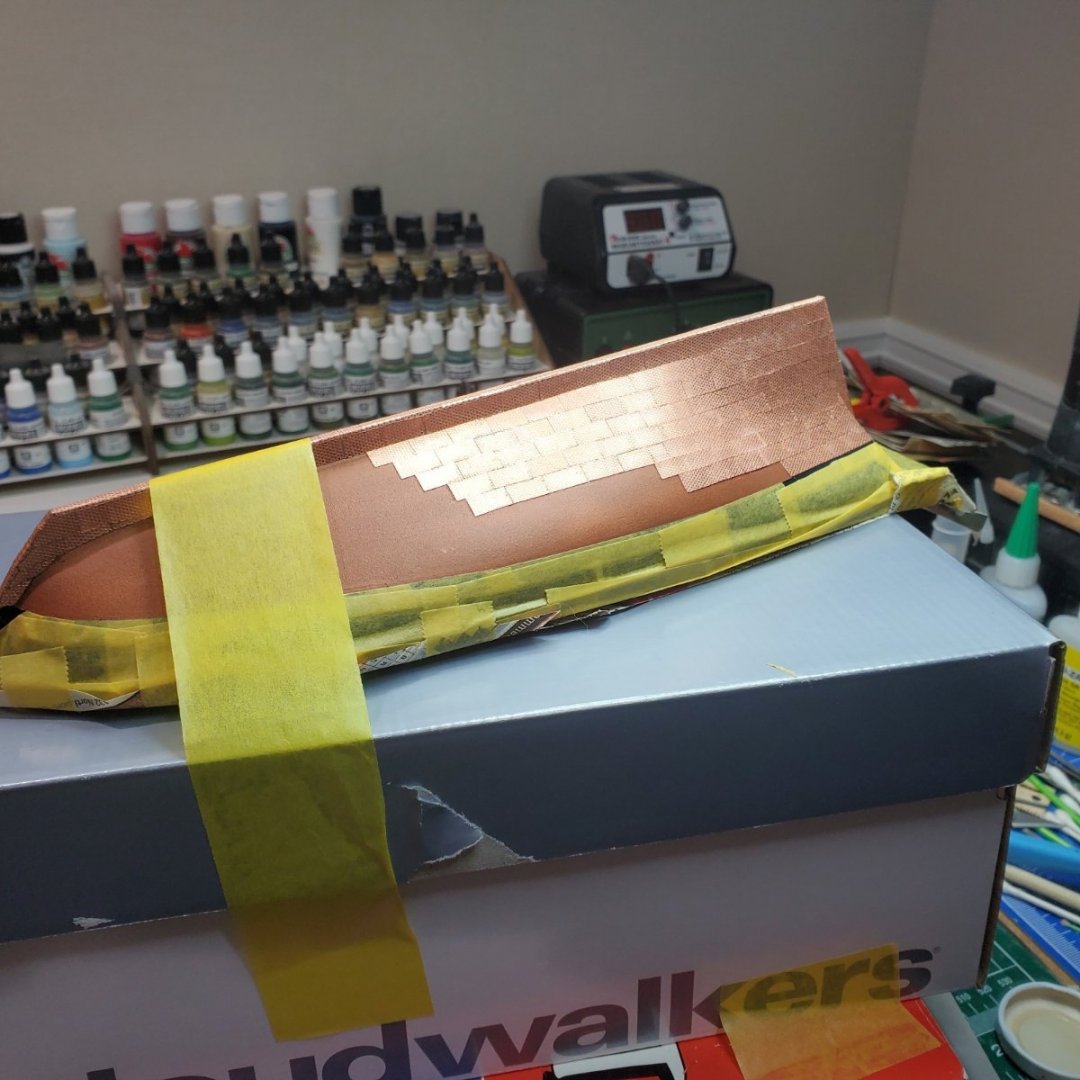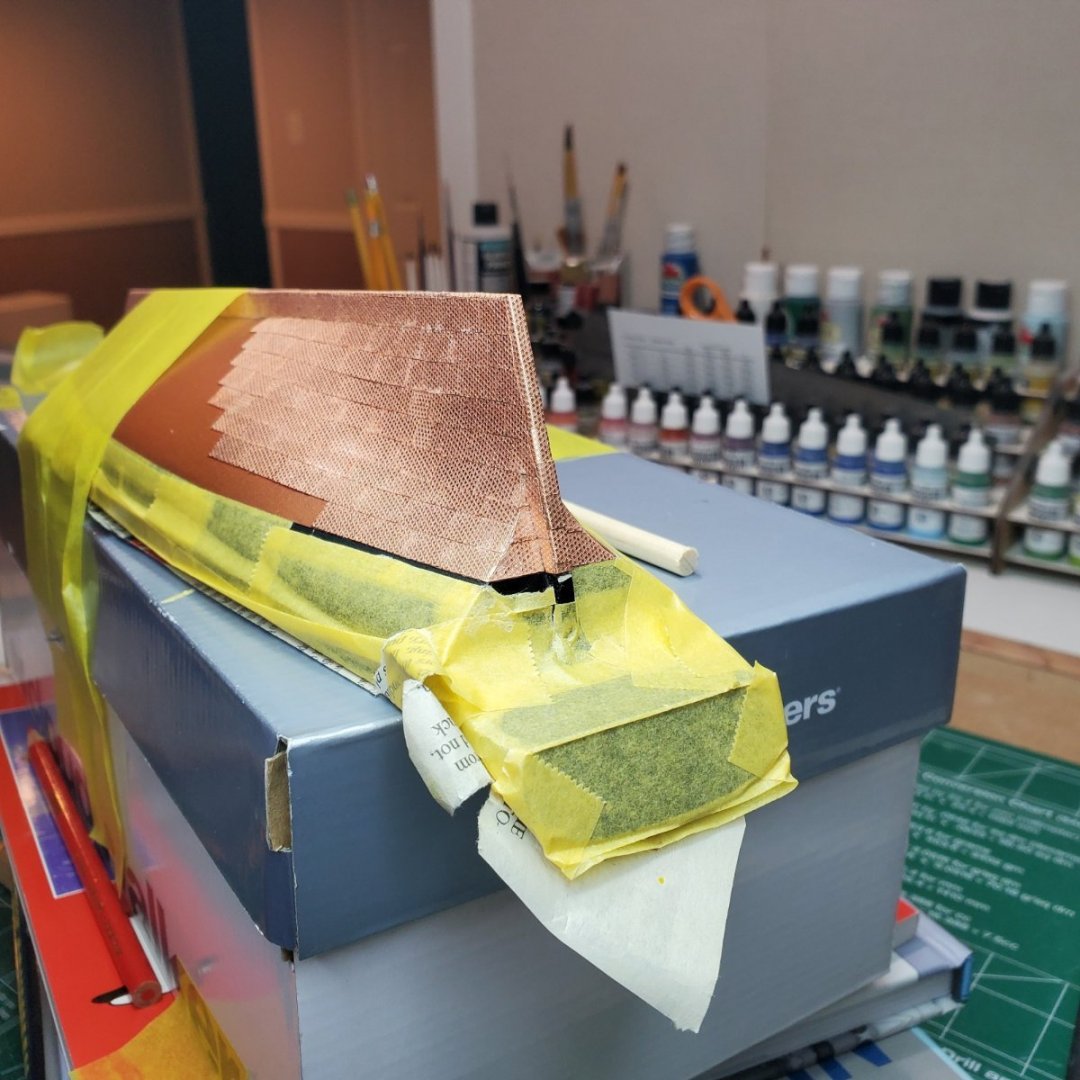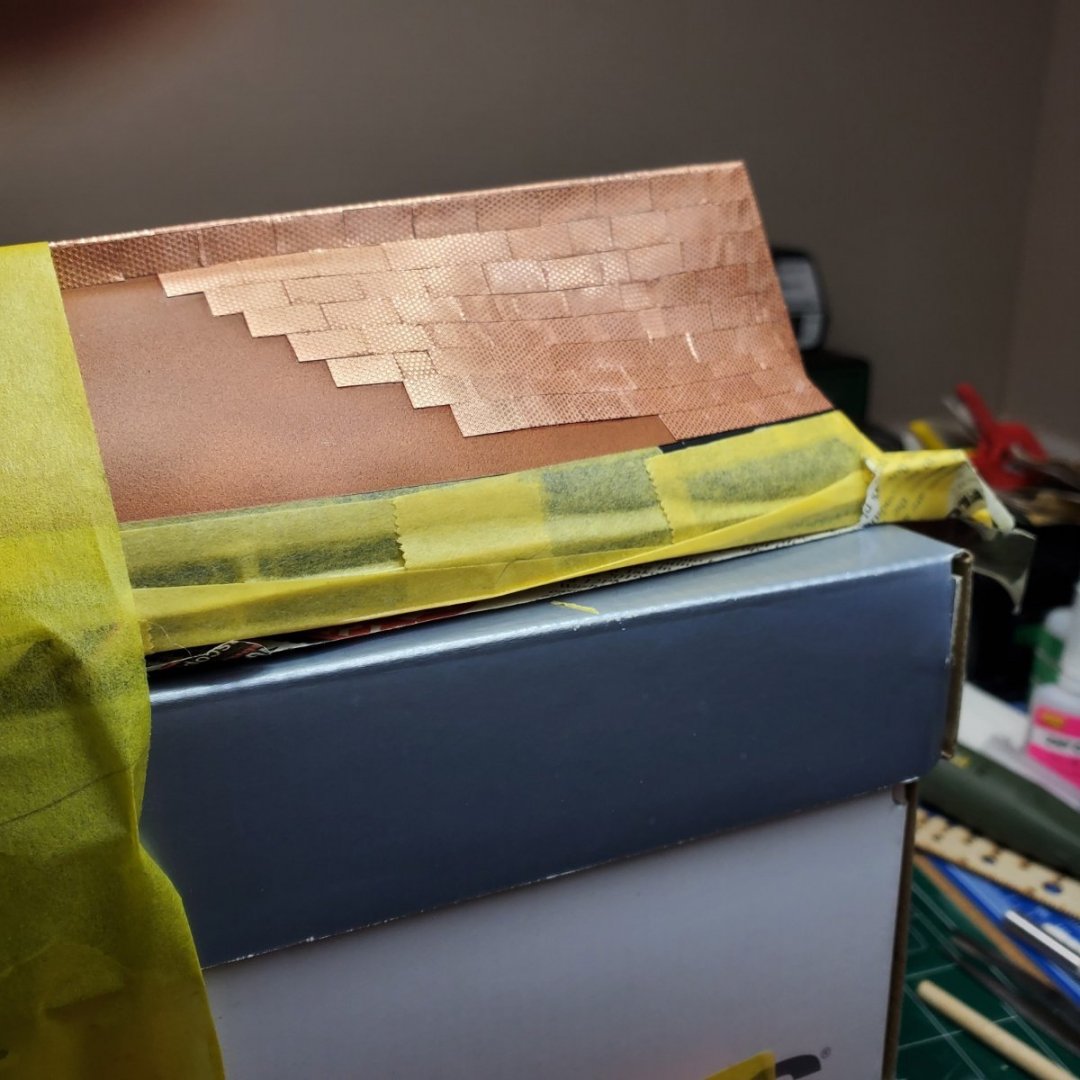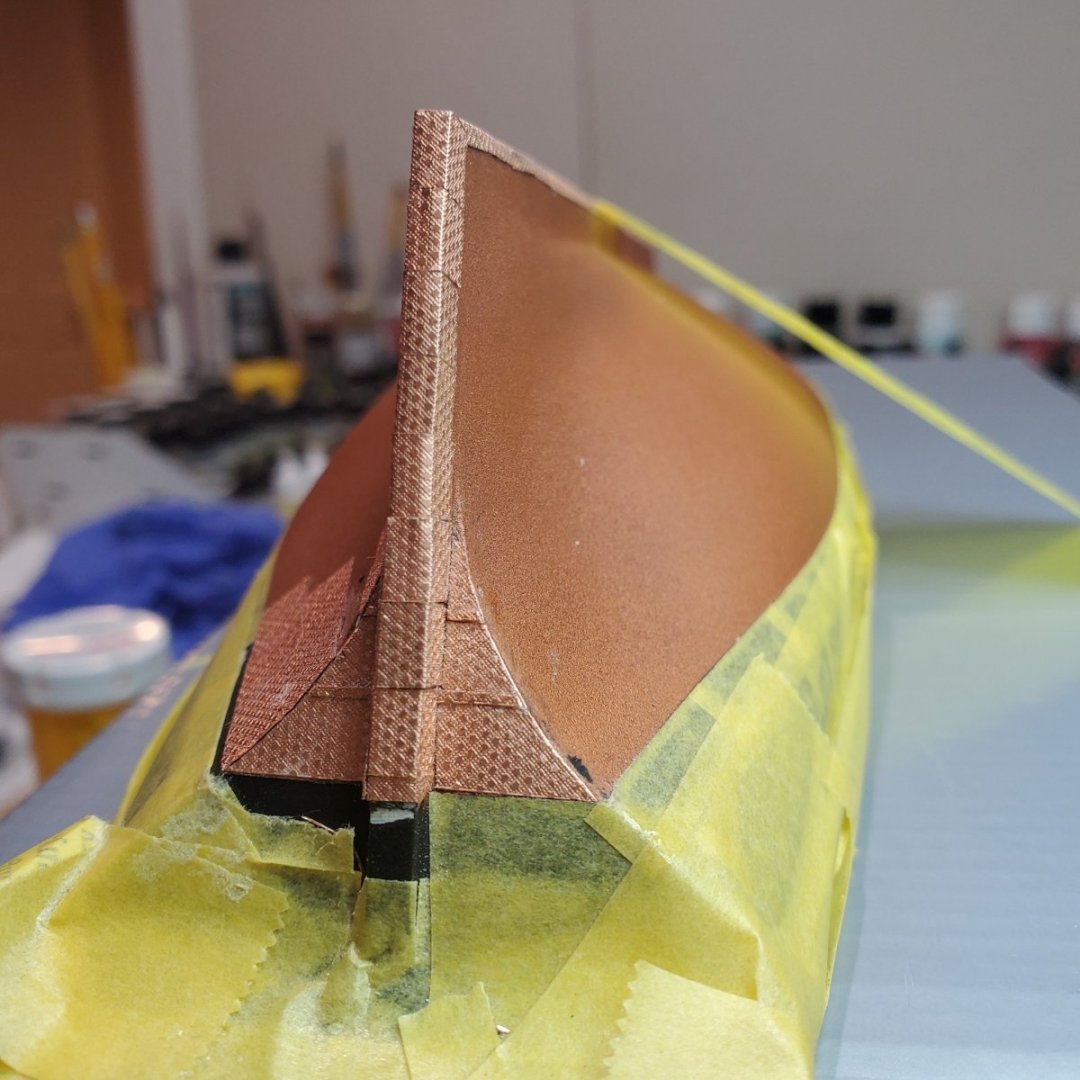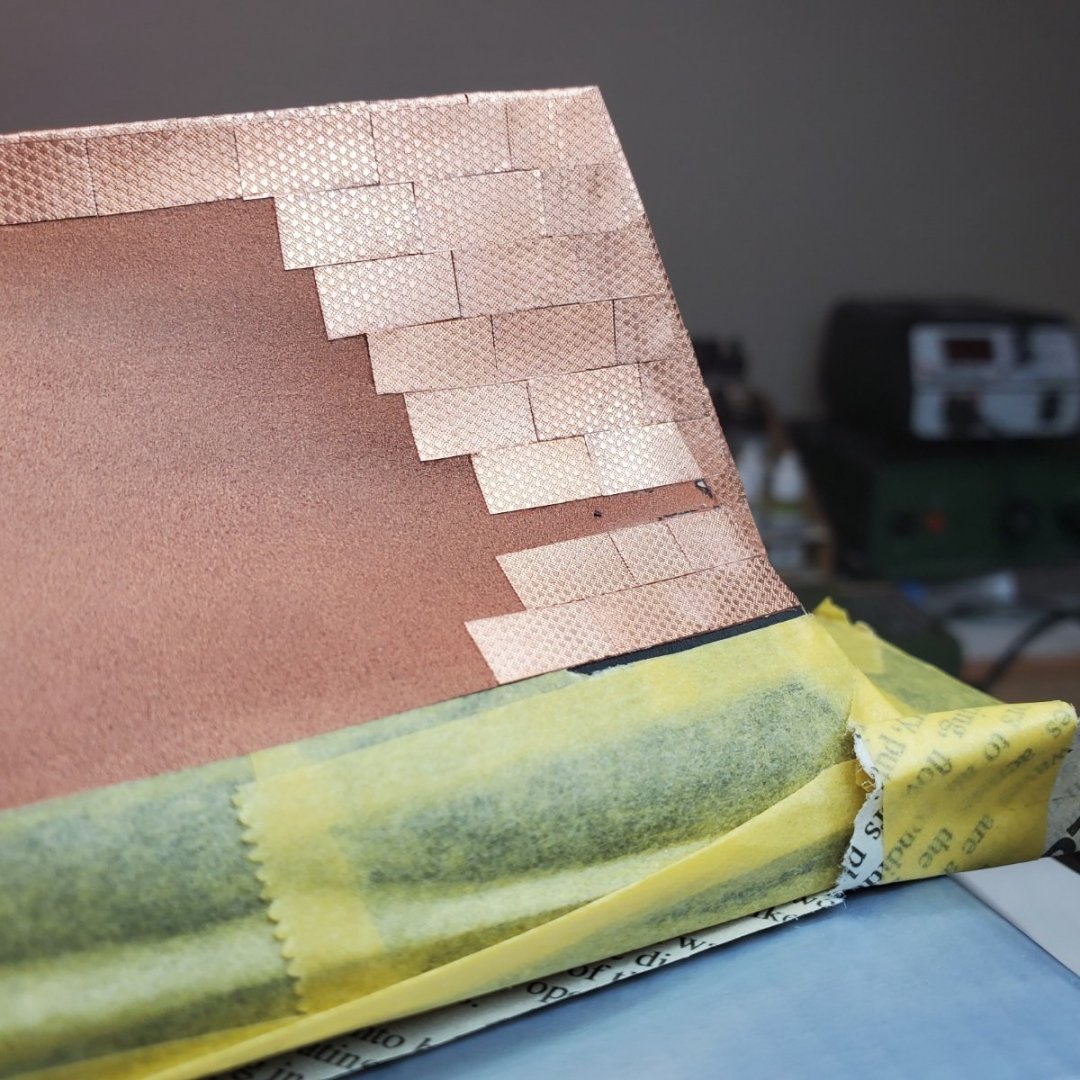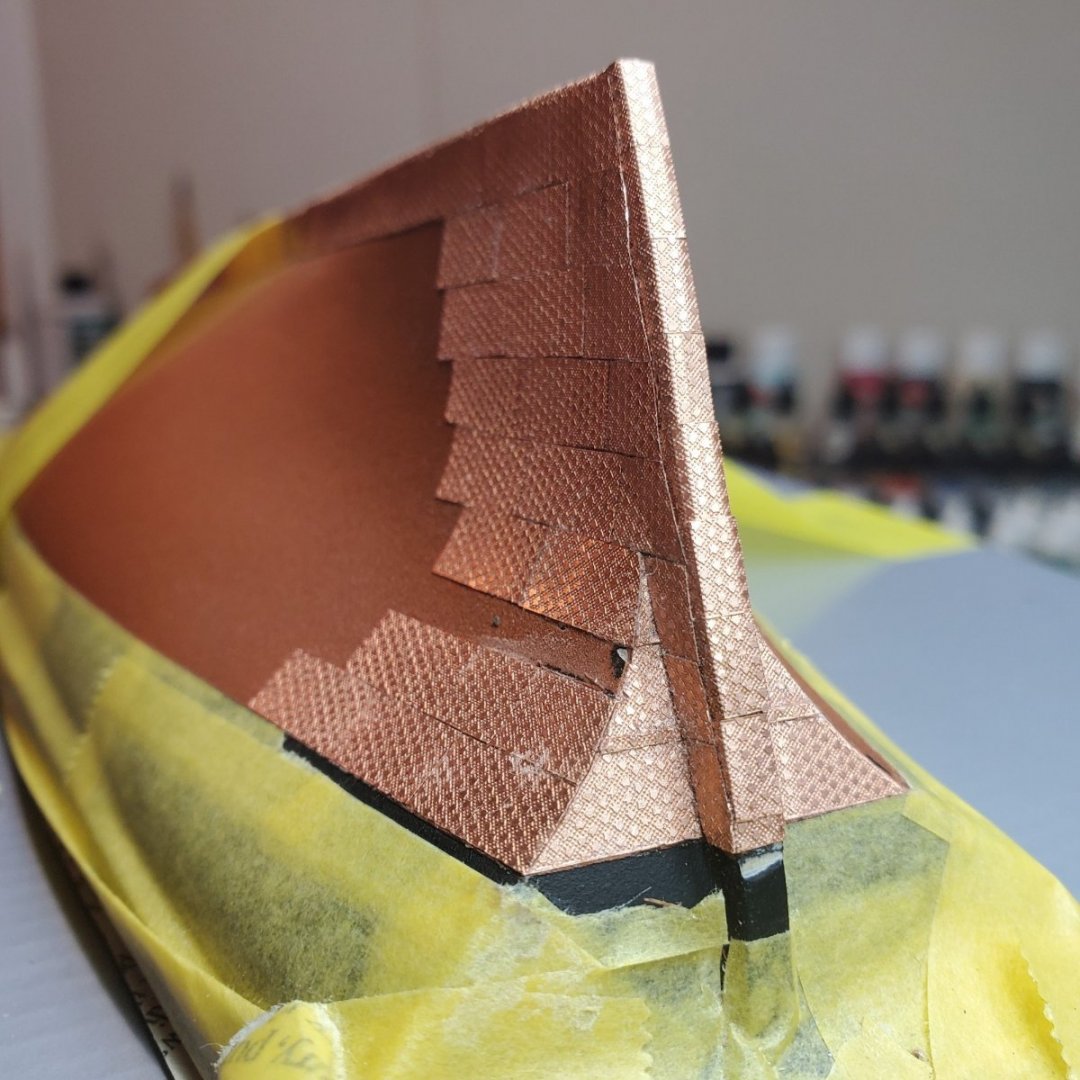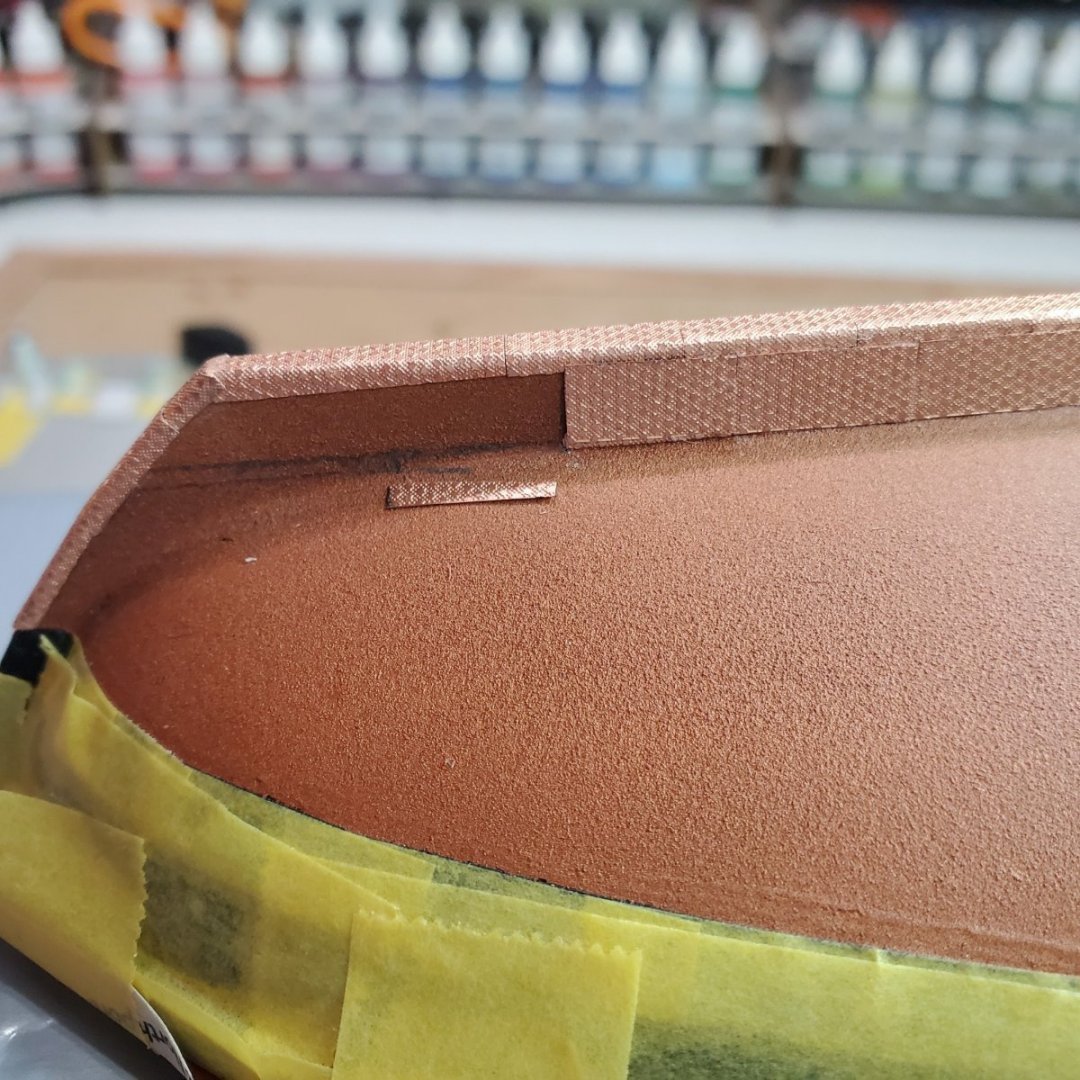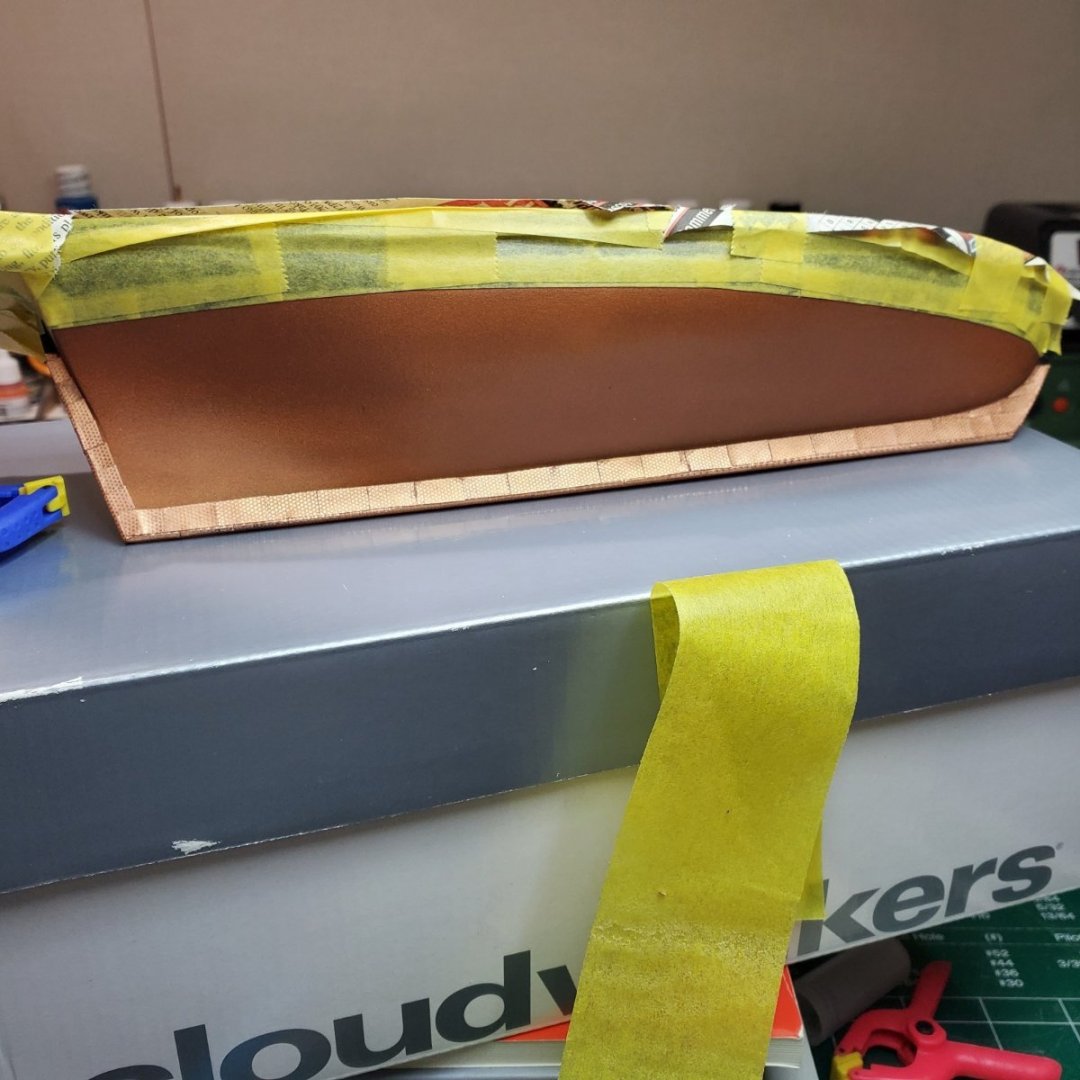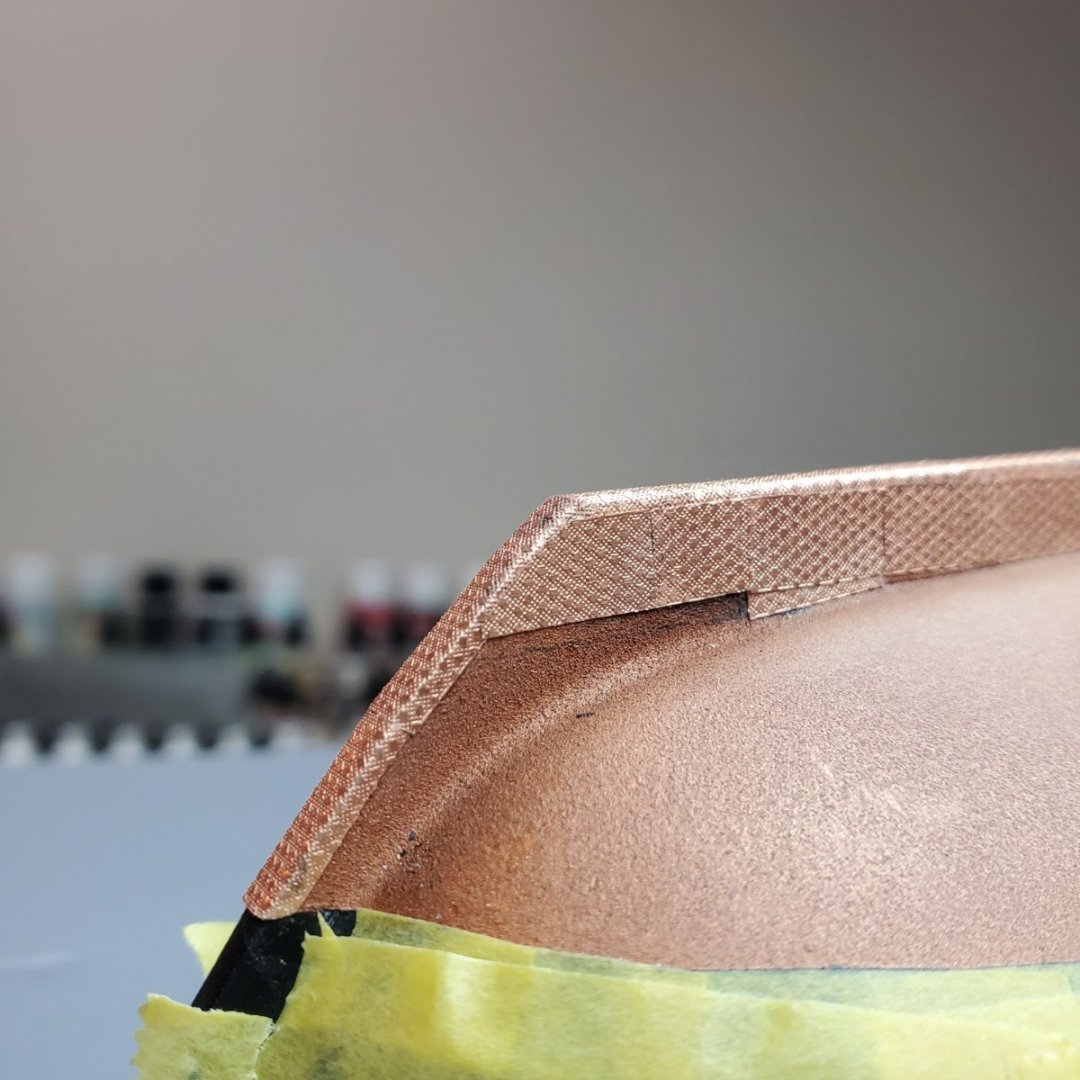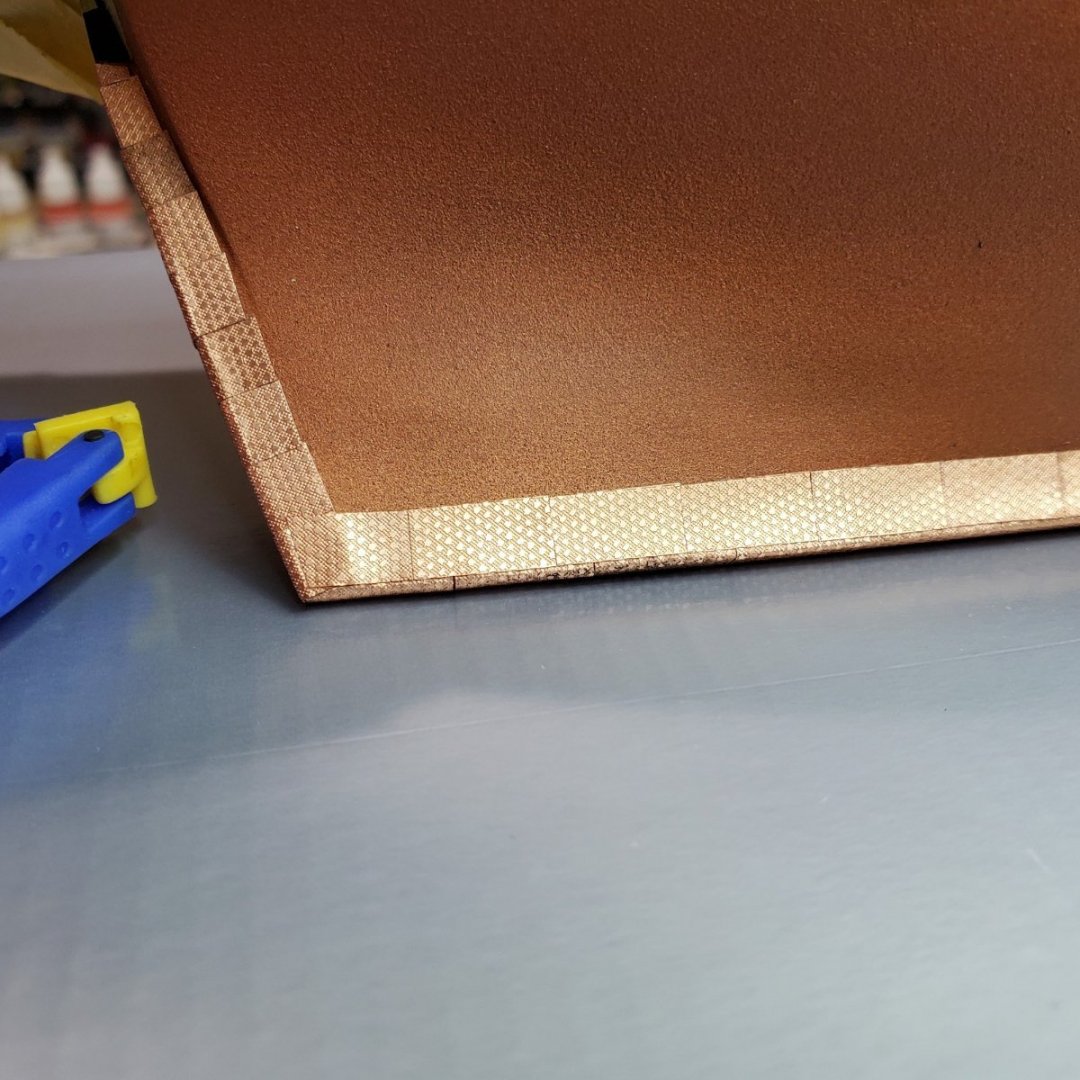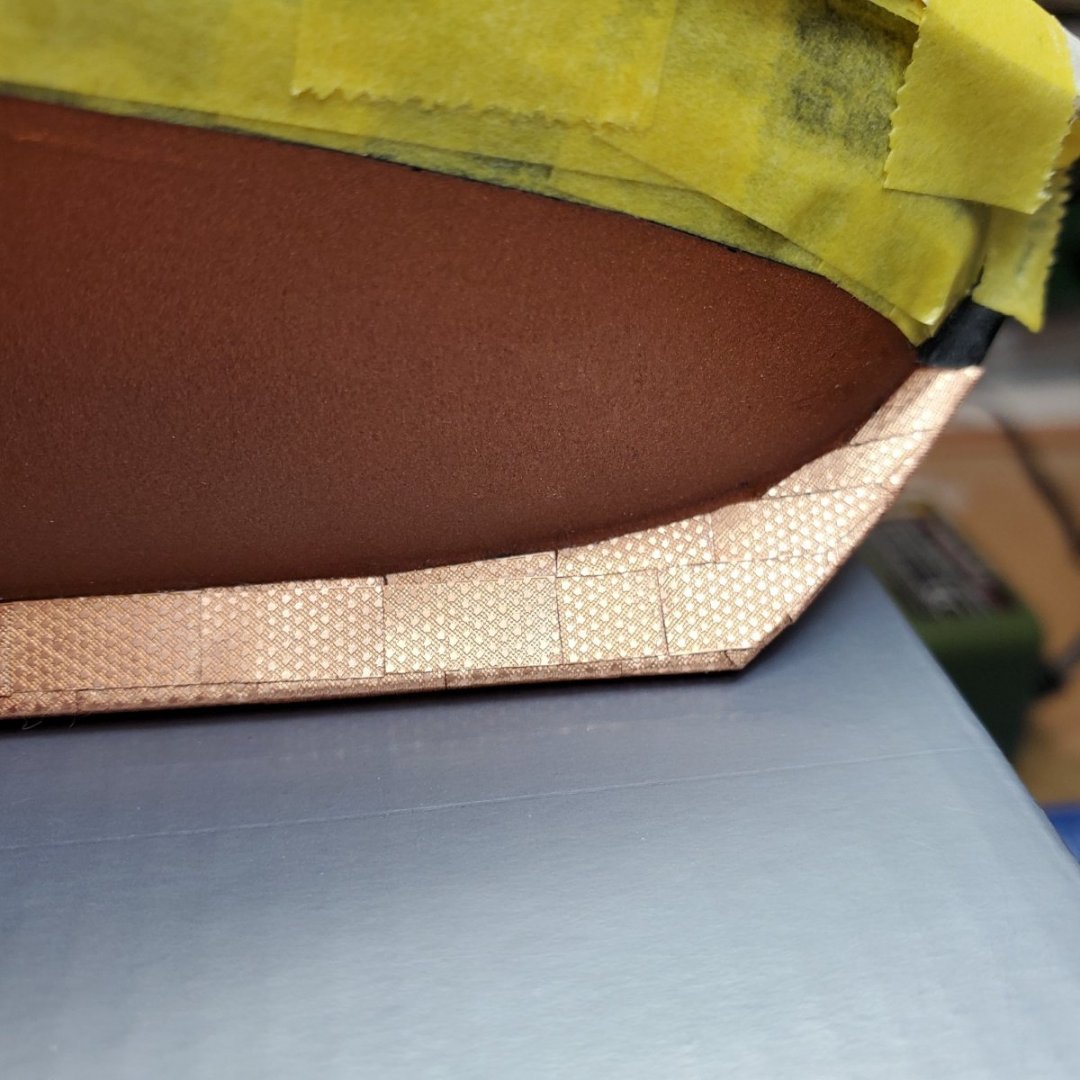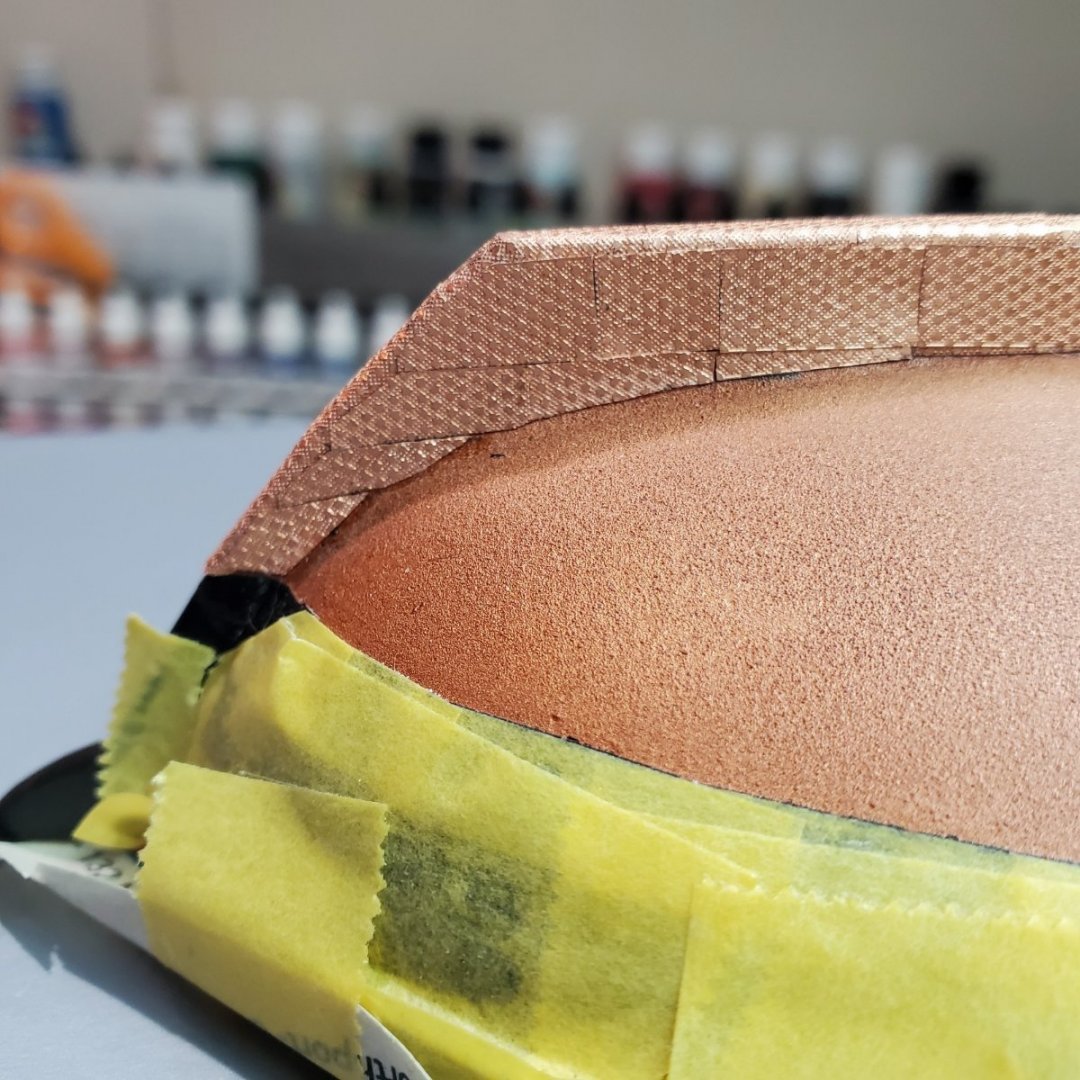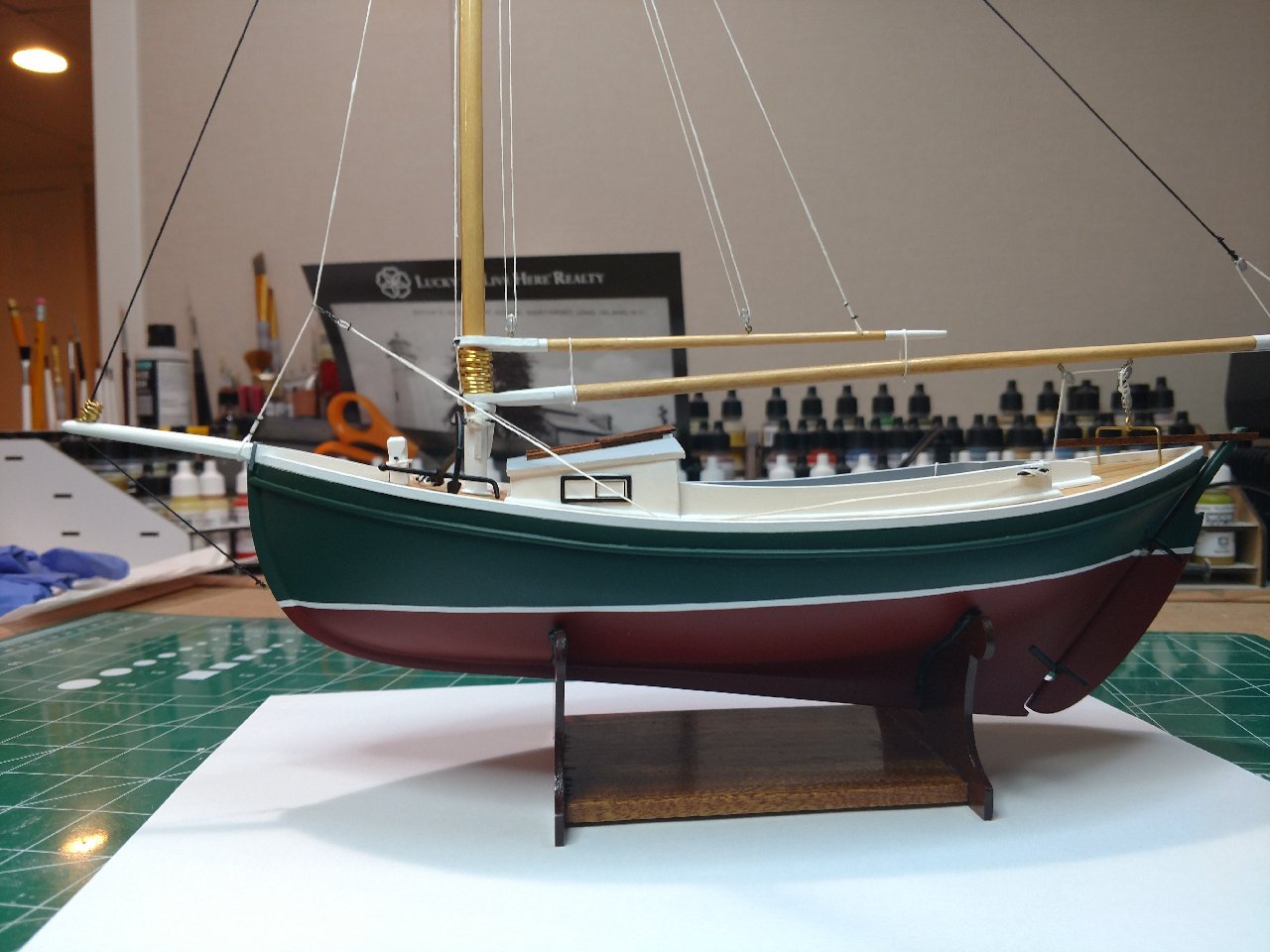
wtimlen
NRG Member-
Posts
103 -
Joined
-
Last visited
Content Type
Profiles
Forums
Gallery
Events
Everything posted by wtimlen
-
Hello Folks, Been a little busy at work, however I have kept up with the pictures when I could sneak in some time with the Revenue Cutter. All pieces are assembled and it is time to begin the process of rigging the model (finally). Some Notes on Spars, Masts and Bowsprit: Spars / Mast Caps: Be super careful drilling holes in these pieces for the blocks. I severed both a spar and a mast cap trying to drill holes for the blocks, next time I will use new drills and or probably just tie blocks using thread. Blocks and Spars: Dry fit the spars to the masts prior to gluing the blocks onto them to get the correct angle for them for rigging purposes, the blocks on the spars should be set at an angle so they meet nicely with the blocks on the mast (and vice versa mast blocks to spar blocks). Mast Caps: As usual did not follow the paint scheme, I painted the mast caps flat black (Tamiya XF-1). Bowsprit: Assembled as per instructions and gammoning completed as well. I painted the cap flat black (Tamiya XF-1). I will not glue this part onto the hull until I rig the cannon on the deck and I am completely ready to rig. I guarantee I will break the bowsprit (as I usually do). Next Post: Cannon rigging, and standing rigging (I hope). Be well all, Bill T.
-
Hello Folks, Long time, no post. Work prevented me from doing work on the Revenue Cutter, however I kept up with my limited pictures. Work is beginning again on a regular basis and having fun again! All spars, masts are tapered, shaped, stained and sealed according to the Blue Jacket plans. Used a Proxxon Lathe to accomplish this portion, a real time saver. All holes are drilled. All remaining mast parts are painted (of course I strayed away from the original paint scheme) ready for assembly later today (I hope). I still need to do some final clean-up on the painted parts, sometimes it seems clean-up is a never ending process! In my next post will show the blocks with the pigtails completed. Tomorrow I hope to post the assembled masts. Nice to be back!
-
Hello CF, When referring to using a wire to attach the spar to the mast I am referring to a "Fid", I am about to use this method on my Blue Jacket Revenue Cutter. At the end of the Boom or Gaff which will butt up against the mast, drill a hole with a #75 drill bit. Then cut a piece of 0.020' brass rod (accessable from BlueJacket or local hobby store) that protrudes out 1/8" from the holes drilled into the Boom or Gaff. Glue the brass into the holes. Conversely, drill a hole into the mast where the Boom or Gaff are to be located on the Mast. Then just fit and glue the Boom or Gaff with the brass wire protruding into the mast hole drilled on to the mast. When rigging in general I always with inboard rigging and proceed to the outboard lines. I use this sequence to execute the rigging in general: Rig Boom and Gaffs Attach and Rig Yards Rig fore and main stays rig back stays rig braces I hope this helps, if not the people at BlueJacket are great at helping you through any difficulties you maybe having. I you wish, send me a picture of where you are at and will detail how I proceeded from where you are stuck. Good luck! Bill T.
- 57 replies
-
- finished
- yankee hero
-
(and 1 more)
Tagged with:
-
Hello Folks, Although posts have been few and far between doesn't mean the Revenue Cutter has been ignored (I kept up with my pictures though). I believe I am finally finishing up with the hull/fixtures and ready to move on masts and spars. Then my favorite part rigging. This post is as follows: I decided to color the stanchions black, I colored them using the Blue Jacket Brass Black #52. Then I sprayed them with Tamiya Flat Black (XF-1) and Flat Clear (XF-86). Pleased with the final result. Drilling the holes on the deck for the stanchions was slow process. I needed to bend a few stanchions to make the 90 degree angle. (I wish I knew a way to make a jig to ensure the holes were all the same 90" angle). All is well though. I test drove the stanchions prior to coloring them to ensure no roadblocks occur at the point I need assemble them onto the deck. I also rigged them at that time as well, just as a test. This portion was completed prior the coloring of the stanchions (FYI). Then it was onto the carronade, this was more challenging than anticipated. (This part was a "mini-kit in itself). Attaching the pigtails to the frame of the frame was challenging for me (especially for the 3/16" blocks!). I decided to use leftover eyelets from my previous rigging classes (which I highly recommend for anyone with rigging challenges) to assist me in affixing the blocks onto the carronade frame. It is now complete and placed aside for placement onto the deck. A lot of touch up work done for such a small piece on the deck. Thank god for my magnifying glasses! 🔍 Time to clean up a little bit and onto the mast and spars (I hope). Excited to try my Proxxon Lathe for the first time! Be well folks.
-
Hello Ogontz, I hope all is well, I did have a little bit of an issue with this. One can not notice what I did under the white paint. My jaws broke, I glued them each separately onto each side of the spar. In other words, when it split each jaw I had 2 assemblies (for each spar) and it worked out well. I ended up having a gap the end of the jaws though, I closed the gap with some putty though and all was good. A little extra work, however I was pleased with the result. I hope this helps your dilemma. Good luck with your build, if you have a log I will look it up! Bill T.
- 57 replies
-
- finished
- yankee hero
-
(and 1 more)
Tagged with:
-
Hello Bob, Thank you so much for the kind words, the Yankee Hero by Blue Jacket is a great kit.
- 57 replies
-
- finished
- yankee hero
-
(and 1 more)
Tagged with:
-
Hello Folks, Happy New Year's. A quick post tonight, probably another larger one this weekend. Status on the Bluejacket Revenue Cutter is listed below: Blocks: Drilled all blocks with #75 drill bits to clear out the holes. Cleaned them all with Acetate and let dry overnight prior to the Blue Jacket Pewter Black #51 bath the following day. Did NOT want to paint every block... Even after the pewter bath I still airbrushed them with a coat of Model Master Flat Black and a seperate coat of Tamiya Clear Flat (LOL). Worked out nicely so far... Stanchions (18) required however made (20): This was a project in of itself, however survived... Used a heavy vice grip pliers to flatten the 1/16 inch to drill the hole for the safety rope. Filed each stanchion (rounded the tops) as outlined in the building manual. Used an blade #11 to create a small canyon for a #75 drill bit. Drilled a #75 drill bit hole into the stanchion, trashed about 5 drills doing this part. Did this manually with a pin vise. The brass was not to kind to me. Drilled another hole with a #72 drill bit to widen the hole (with an electric drill) a little to ensure there would be no issues with rigging the safety line. The reason for this was that this assembly would be completed at the finishing line of the build with all the rigging in place. These will be black stanchions on the finished model using BlueJacket Brass Black #52 Solution to color the pieces. Will probably airbrush these pieces as well (similar to the blocks). Most importantly found the need to purchase a light weight flex shaft rotary machine and 3 sets of (#61-#80) Drill Bits from MicroMark to avoid the pin vise drilling (and breaks) for repetitive jobs like this. Brass and Pewter Darkening Solutions: Used BlueJacket Solvents to darken the blocks and stanchions BlueJacket #51 & #52 solutions. Next Post (I hope this weekend): Finished Stanchions (colored) Finished Hull with dry fitted stanchions. Completed Carronade And then on to mast and spars.
-
Hello CF, I had the same situation, the model instructions include a section which outlines to use rigging threat tied across the open portion of the "shoe" to keep the spar on the mast, the rigging will take care of the rest (See slide #34 above). However, you can also install a small piece of brass wire into the spar so it sticks out and then drill a hole into the mast at the position you wish to affix the spar to the mast (With some CA Adhesive). I believe they call this a Fid. I did not end up using this method however it would have worked fine. I hope this helps, I will look up your build on MSW. Any other questions please feel free to ask. Good Luck & Happy New Years! Bill T.
- 57 replies
-
- finished
- yankee hero
-
(and 1 more)
Tagged with:
-
Hello Folks, Zoom Meeting over! So getting back to my post relating to my deck fittings on the BJ RCutter: Outside of detailing the deck house differently I also completed some other fixtures differently and dry fitted them to the deck. In addition to the deck house molding being in black trim I followed the same with the sky light. Both hatches I painted the molding Brown however I made the grates recede into the molding to add depth to the pieces. In addition I also painted the grates flat black to ad detail. Finally some dry fitting. Next up making the Blocks and Stanchions black with using pewter solutions purchased from Blue Jacket. Thanks for following, Bill T.
-
Hello Folks, First post in quite some time, however been busy on the build. I will probably split this into 2 seperate posts. One being completion of the Hull and the second on the deck detail. I really liked the Toe Rails on the Blue Jacket Yankee Hero so I decided to paint them Flat White like the Yankee Hero (Model Master) as opposed the staining them. I was pleased with the outcome. I generally follow the suggested paint scheme, however never exactly as I have mentioned in prior posts. The Toe Rails were somewhat challenging due to the paint mixing with the CA. I repainted the portion where the Toe Rails meet the hull to rid the boat of the reflection of the CA. This took some time and extra steps, however well worth it. Again deviating from the normal I decided to cover the rear cabin with decking on the top with the thought this would be a working area for the deck hands to a certain extent. I broke out some scrap wood from my "wood shed" to accomplish this. I painted only one side of each plank with Vallejo "Mud Brown" to match the laser detail color on the deck. After gluing them together, sanded them and stained with Miniwax "Golden Pecan", same as I used for the deck. Finally I used Flat Black paint (Model Master) to trim the rear cabin moldings versus the brown as suggested in the manual. I will have better pictures in my next post of the cabin. I will post again shortly, in an hour. Have a zoom meeting! Thanks, Bill T.
-
Hello Mike, Thank you for the kind words! That is the same order I went, the Yankee Hero by BJ is a great kit. Loved making it, I have a build thread for my Yankee Hero on MSW if you wish to check it out. Going from the Yankee Hero to the Revenue Cutter from a progression perspective is working out well. All the best, Bill T.
-
That is simply inspiring to me as a beginner. Thank you. Bill T.
- 110 replies
-
- Bluejacket Shipcrafters
- Constitution
-
(and 2 more)
Tagged with:
-
Hello Folks, Finally completed copper plating the Blue Jacket Revenue Cutter, sort of proud of it as I was intimidated by the task for a first time beginner. I learned more about modeling by plating the RC than any one single task on a model. I little rough in places however overall happy with the results. Here are some take aways from the task in addition to my previous posts: Bottom to top, back to front progression. When it comes to adhesives 2 things to mind, I used slow CA and less glue is more. To apply glue I used a dowel with a pin on the end to apply the glue. Every plate was fabricated one way or another (filed and or sanded), that why it took me 7 months I guess (01.31.2022 - 08.06.2022) Using 10X magnifying very important to ensure tight fitting plates. Needed to make a Jig for the pintles and gudgeons because I needed make them wider due to the thickness of the copper plates (picture below). This was an unexpectedly hard part of the process. I also ended up using a pair needle nose pliers and squeezed at the locations of the pintles and gudgeons to thin locations of the hull they were located on the hull and rudder, this worked great at my wits end! I plan on affixing the rudder last as I am sure I will break it during remaining build, hoping things go quicker now. Onto the toe rails! Thanks, stay cool as it is hot in NY, Bill T.
-
Hello Folks, A short post today for a change, I am working on coppering the rudder of the BJ Revenue Cutter. I am a little over halfway completed with the rudder, a lot more challenging that I anticipated which I will note below (lot of small delicate pieces (10 hours so far I logged, however I take into consideration my beginner status). My next post will be with the rudder complete with the pintles and gudgeons affixed to the rudder. Some notes: I coppered the fore and aft of the rudders with the same method used on the false keel. Then I used the line from the aft part of the rudder to align the plates from bottom to top, except for the top plate which I did with a full plate because I knew I was going to be filing it for shaping purposes. Used full plates on the rudder at the locations where pintles would be placed on the rudder because of the filing needed at those locations. Did not want to mess with filing half plates, not skilled enough to tackle that! Attempted to replicate the exact shape of the rudder with the copper plates, a little rough however satisfied for a newbie. I also broke the rudder early, however unlike Life it broke at a place that made the rudder easier to handle. I guess there is always a first. Happy 4th to all! Bill T.
-
Hello Folks, I have been distant however busy on the BJ Revenue Cutter coppering the hull. After many moons of plating I have finished the entire hull. Pretty cool to be a part of the copper plating club, never thought I could do it. It is rough in some parts however learned a ton about modeling in general. Plating is repetitive so I will list some things that I learned from the process in hopes of helping someone in the future: Started 01.31.2022, completed 06.12.2022. Use a photo-etch jig to bend the parts if possible, (Keel). I used 10X goggles to ensure plates fit well and ensure plates were square where needed. I rolled every plate with end of my Exacto knife to ensure all 4 corners of all plates were down on the hull (A slight "U" curve). Less glue is more and saves a ton of clean-up time. Polyurethaned over the copper paint to ensure good adhesion to the hull. Plus the hull was sealed so humidity would not affect the and pop the plates off the hull. Used Slow CA to give me time to situate every plate, unsteady hands and a beginner I guess. After all complete, used Tarn-X to clean the plates so they now will age simultaneously. Blue Jacket Copper Plates great to work with. Beginners like myself, follow other builds with copper plating (thank you Sjanicki, Mr. Bluejacket and EricMichaelsWilliams (Spelling?) build threads). Last but not least, it was worth it and I am excited and happy to go from the "necessary evil of the hull" to embark on the boat fixtures and my favorite the rigging. Pictures are listed below:
-
Hello Folks, I have been distant however busy on the BJ Revenue Cutter coppering the hull. After many moons of plating I have finished 1/2 of the hull. When started I have to admit I wasn't too sure how it would turn out or be able to complete it. Pretty happy with the results, although not perfect. Proceeded with a hybrid model of MrBlueJacket (Mary Taylor) and SJanicki methods. A few notes: Every plate was altered in some shape or form. Used slow CA because of my unsteady hands, gave me time to make adjustments. Used thin CA when I ran into stubborn plate end not adhering to the hull. Every plate ruined was refabricated and used on another portion of the hull (I guess one can call it a "Green" hull). I ran 2 strakes of plates along the keel and bottom because I had a feeling I would have issues at the bow if I ran just one straight through, glad I did. See photos. Started from the bottom and proceeded forward and upward. Covered the jagged edges by affixing water line plates. See photos please. I learned a ton by doing this, and glad I took on the challenge. A little choppy for me, however I will easily exchange it for the experience. Lastly, this was the hardest task I have ever encountered making a boat. Feels good though, I hope the second half turns out better. Take care Folks, (On to the rudder to break things up a little) Bill T.
-
Hello Folks, Still working and learning on copper plating. These pictures represent some progression to date from my last post. Posting this for two reasons (1) not to be distant and (2) I have a question (I rarely post questions however with the time placed on plating I need to) any help would be appreciated! Question: Using slow CA which is working well. It is used sparingly and excess is wiped off immediately with a Q-Tip (lot's of Q-Tips!!!). Question: There are plates where the excess glue is wiped away, however leaves a dull white residue. Is there a solution that can be used to remove the residue that won't affect the adhesion of the copper plates to the hull? Any help would be greatly appreciated! (And thank you!) Some progression pics below: Again, thank you! Bill T.
-
Hello Folks, Presidents Day presented me with some time work on what is going to be a long journey plating the BJ RC. I am enjoying the journey, so far it has been challenging and interesting. However I notice with practice some portions are getting more manageable. Thank god the plates are excellent quality. All plates are affixed individual, I am glad I sprayed the hull with polyurethane prior to coppering. No adhesion issues, Slow and Fast CA depending on the piece of copper being affixed. Going through a lot of plates, however I have a nice stock of pieces and parts for those weird parts of the hull in the future. No plate is wasted, flattened out and ready for re-application when needed. I finished the stern portion of the boat, I decided not to curve the plates around the stern and make them square hoping for a sharper corner. I like it, although a little choppy for my liking. All pieces needed to be filed, cut or adjusted on the stern (4 hours of work for the newbie). Then a began building up from the back, bottom to top as I have read in some posts. Finally for this post, I started working the waterline, I love working the waterline on all boats for some reason. Obviously some touch work will be needed, I like doing touch up work. Lucky, because there will to be a lot! Why do pictures show every little mistake OMG! Some pictures below, I won't keep posting because the process is repetitive. However if I find that anything that could help someone I will post! Be well folks! Bill T.
-
Hello Folks, Another short post to prevent being distant. Copper Plating is quite a challenge to me, even frustrating at times. However along with frustration comes a lot of education and rewards. The false keel, stem and sternpost are complete. A little choppy for my liking although. I am getting more comfortable on handling the "moody" plates. Plating of the stem was the hardest part of building any model I have experienced, I liked doing it though. When I do the other side I will do some things differently. I find Xuron photo etch cutters and the Proxxon Pensander to be my go to tools for shaping (worth every penny). Also found the dimples on the plates help as a guide to make sure the plates are the same size and square after being cut off the sprue. Magnifying goggles critical for me (5X Magnification). The gaps on the sternpost will be covered by the hull plating as I venture to that area. I can't wait to clean this portion up. Will start planking the bottom row this week (I hope), middle outward for my first time. Following Sjanicki's method on this side. Also, I have always shied away from planked a model kits (always been a solid hull person), plating has definitely given me a better understanding of hull lines and confidence in tackling planking now. My next build will definitely be a planking kit now! (Blue Jacket "Herreshoff" I think will be a descent progression) Some Pics below: Be well folks, Bill T.
About us
Modelshipworld - Advancing Ship Modeling through Research
SSL Secured
Your security is important for us so this Website is SSL-Secured
NRG Mailing Address
Nautical Research Guild
237 South Lincoln Street
Westmont IL, 60559-1917
Model Ship World ® and the MSW logo are Registered Trademarks, and belong to the Nautical Research Guild (United States Patent and Trademark Office: No. 6,929,264 & No. 6,929,274, registered Dec. 20, 2022)
Helpful Links
About the NRG
If you enjoy building ship models that are historically accurate as well as beautiful, then The Nautical Research Guild (NRG) is just right for you.
The Guild is a non-profit educational organization whose mission is to “Advance Ship Modeling Through Research”. We provide support to our members in their efforts to raise the quality of their model ships.
The Nautical Research Guild has published our world-renowned quarterly magazine, The Nautical Research Journal, since 1955. The pages of the Journal are full of articles by accomplished ship modelers who show you how they create those exquisite details on their models, and by maritime historians who show you the correct details to build. The Journal is available in both print and digital editions. Go to the NRG web site (www.thenrg.org) to download a complimentary digital copy of the Journal. The NRG also publishes plan sets, books and compilations of back issues of the Journal and the former Ships in Scale and Model Ship Builder magazines.


.thumb.jpg.cd902afd4073a14305c9cf522431a073.jpg)
